

Maiora 33DP Sagitta Alba (Joke) Yacht
Maiora 33dp sagitta alba price and sales info, maiora 33dp sagitta alba overview, maiora 33dp sagitta alba specifications.

Maiora 33DP Sagitta Alba Description
Accommodation.
The Motor Super yacht/Raised pilot house yacht Maiora 33DP Sagitta Alba luxury interior sleeps up to 10 guests in 4 staterooms. She is also capable of carrying up to 5 crew onboard to ensure a relaxed luxury yacht experience. Timeless styling, beautiful furnishings and sumptuous seating feature throughout to create an elegant and comfortable atmosphere.
Maiora 33DP Sagitta Alba impressive leisure and entertainment facilities make her the ideal yacht for socialising and entertaining with family and friends.
Construction & dimensions
Maiora 33DP Sagitta Alba features a Planing GRP hull and GRP superstructure. She was built to RINA classification society rules.
Maiora 33DP Sagitta Alba is equipped with a Zero speed and underway stabilisation system which reduces roll motion effect and results in a smoother more enjoyable cruising experience underway.
Performance
Powered by 2x MTU 12V 2 x 2285 HP engines and driven by Straight shafts Motor Super yacht/Raised pilot house yacht Maiora 33DP Sagitta Alba is capable of a top speed of 28 knots, and comfortably cruises at 24 knots. With her 17000 litres fuel tanks she has a maximum range of 1000 nautical miles economic cruising speed. Her water tanks carry 2500 litres of fresh water.
Purchase Maiora 33DP Sagitta Alba
Maiora 33DP Sagitta Alba is currently not available for sale, to find out more about this superyacht please contact your personal Maiora yacht specialist.
Charter Maiora 33DP Sagitta Alba
Maiora 33DP Sagitta Alba is currently not available for charter, to find out more about this superyacht please contact your personal Maiora charter broker.
Maiora 33DP Sagitta Alba Exterior Gallery

Maiora 33DP Sagitta Alba Interior Gallery

Delivered yachts and yacht(s) under construction

Enquire about Maiora 33DP Sagitta Alba yacht
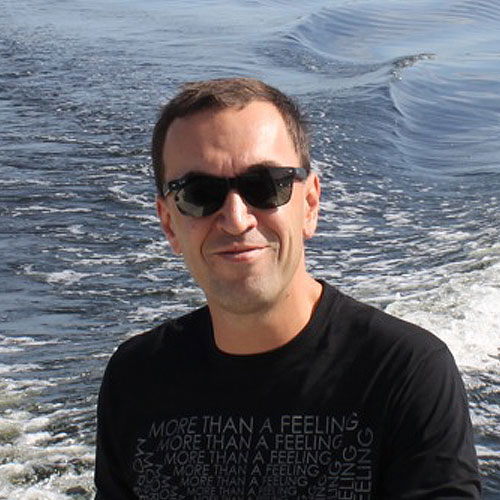
Fill out form and our team will contact you promptly
Explore our yacht selection by features, hull material, maiora dp model range.

Yachting Events
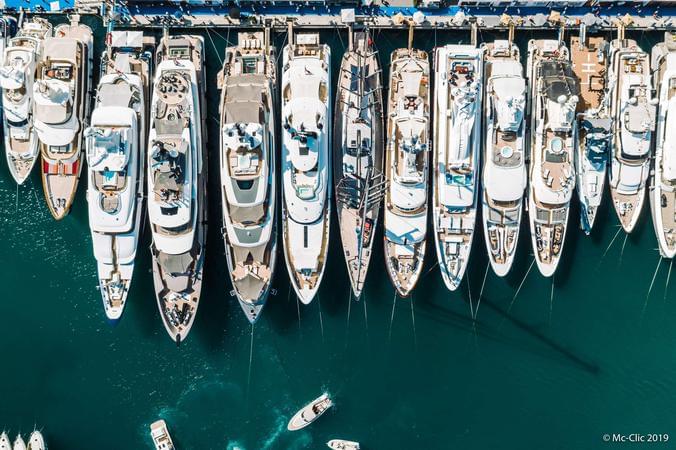
25 September-28 September 2024 Monaco Yacht Show 2024 Port Hercule, Monaco

September 10-15, 2024 Cannes Yachting Festival 2024 Cannes, France

March 21-24 2024 Palm Beach International Boat Show 2024 Palm Beach, USA

February 28 - March 3 2024 Dubai International Boat Show 2024 Dubai, UAE
Related news and stories, latest news.
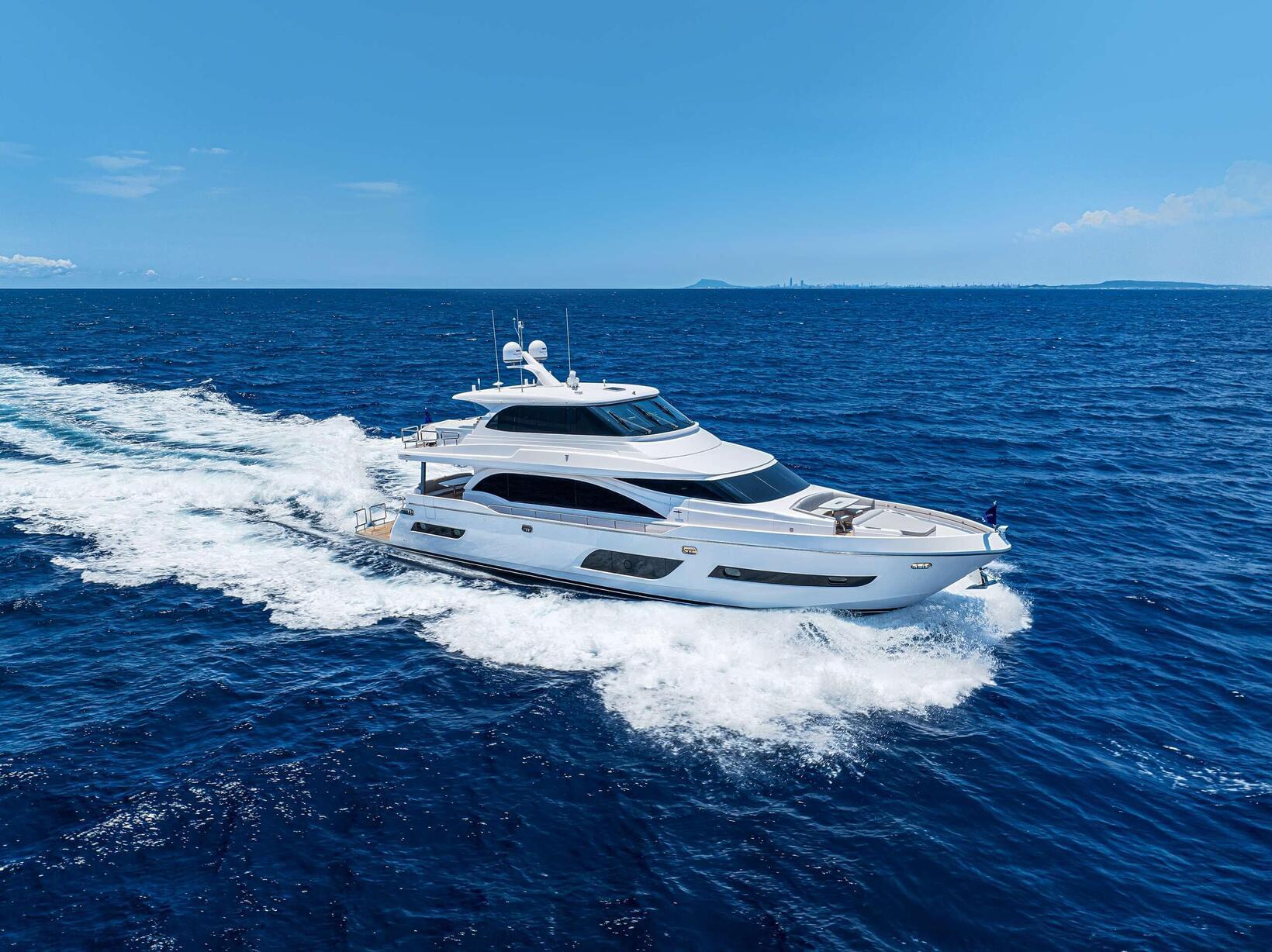
Enter your e-mail & we will send you brochure pdf for
Maiora 33dp sagitta alba, i am interested in more information about maiora 33dp sagitta alba, please, let us know your details and the preferred date and time., event: yacht : maiora 33dp sagitta alba, i want to get an updated list of the boats in the.
M/Y Sagitta Alba
33 m, 2007 , Maiora
how to write a grant essay

Grant Proposals (or Give me the money!)
What this handout is about.
This handout will help you write and revise grant proposals for research funding in all academic disciplines (sciences, social sciences, humanities, and the arts). It’s targeted primarily to graduate students and faculty, although it will also be helpful to undergraduate students who are seeking funding for research (e.g. for a senior thesis).
The grant writing process
A grant proposal or application is a document or set of documents that is submitted to an organization with the explicit intent of securing funding for a research project. Grant writing varies widely across the disciplines, and research intended for epistemological purposes (philosophy or the arts) rests on very different assumptions than research intended for practical applications (medicine or social policy research). Nonetheless, this handout attempts to provide a general introduction to grant writing across the disciplines.
Before you begin writing your proposal, you need to know what kind of research you will be doing and why. You may have a topic or experiment in mind, but taking the time to define what your ultimate purpose is can be essential to convincing others to fund that project. Although some scholars in the humanities and arts may not have thought about their projects in terms of research design, hypotheses, research questions, or results, reviewers and funding agencies expect you to frame your project in these terms. You may also find that thinking about your project in these terms reveals new aspects of it to you.
Writing successful grant applications is a long process that begins with an idea. Although many people think of grant writing as a linear process (from idea to proposal to award), it is a circular process. Many people start by defining their research question or questions. What knowledge or information will be gained as a direct result of your project? Why is undertaking your research important in a broader sense? You will need to explicitly communicate this purpose to the committee reviewing your application. This is easier when you know what you plan to achieve before you begin the writing process.
Diagram 1 below provides an overview of the grant writing process and may help you plan your proposal development.
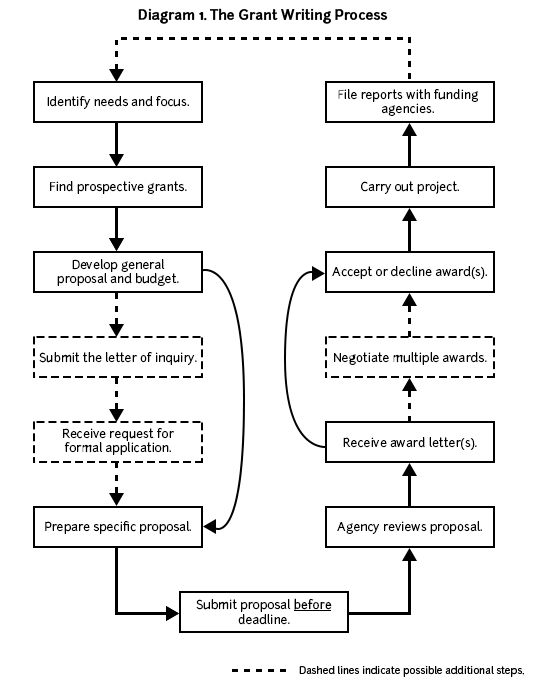
Applicants must write grant proposals, submit them, receive notice of acceptance or rejection, and then revise their proposals. Unsuccessful grant applicants must revise and resubmit their proposals during the next funding cycle. Successful grant applications and the resulting research lead to ideas for further research and new grant proposals.
Cultivating an ongoing, positive relationship with funding agencies may lead to additional grants down the road. Thus, make sure you file progress reports and final reports in a timely and professional manner. Although some successful grant applicants may fear that funding agencies will reject future proposals because they’ve already received “enough” funding, the truth is that money follows money. Individuals or projects awarded grants in the past are more competitive and thus more likely to receive funding in the future.
Some general tips
- Begin early.
- Apply early and often.
- Don’t forget to include a cover letter with your application.
- Answer all questions. (Pre-empt all unstated questions.)
- If rejected, revise your proposal and apply again.
- Give them what they want. Follow the application guidelines exactly.
- Be explicit and specific.
- Be realistic in designing the project.
- Make explicit the connections between your research questions and objectives, your objectives and methods, your methods and results, and your results and dissemination plan.
- Follow the application guidelines exactly. (We have repeated this tip because it is very, very important.)
Before you start writing
Identify your needs and focus.
First, identify your needs. Answering the following questions may help you:
- Are you undertaking preliminary or pilot research in order to develop a full-blown research agenda?
- Are you seeking funding for dissertation research? Pre-dissertation research? Postdoctoral research? Archival research? Experimental research? Fieldwork?
- Are you seeking a stipend so that you can write a dissertation or book? Polish a manuscript?
- Do you want a fellowship in residence at an institution that will offer some programmatic support or other resources to enhance your project?
- Do you want funding for a large research project that will last for several years and involve multiple staff members?
Next, think about the focus of your research/project. Answering the following questions may help you narrow it down:
- What is the topic? Why is this topic important?
- What are the research questions that you’re trying to answer? What relevance do your research questions have?
- What are your hypotheses?
- What are your research methods?
- Why is your research/project important? What is its significance?
- Do you plan on using quantitative methods? Qualitative methods? Both?
- Will you be undertaking experimental research? Clinical research?
Once you have identified your needs and focus, you can begin looking for prospective grants and funding agencies.
Finding prospective grants and funding agencies
Whether your proposal receives funding will rely in large part on whether your purpose and goals closely match the priorities of granting agencies. Locating possible grantors is a time consuming task, but in the long run it will yield the greatest benefits. Even if you have the most appealing research proposal in the world, if you don’t send it to the right institutions, then you’re unlikely to receive funding.
There are many sources of information about granting agencies and grant programs. Most universities and many schools within universities have Offices of Research, whose primary purpose is to support faculty and students in grant-seeking endeavors. These offices usually have libraries or resource centers to help people find prospective grants.
At UNC, the Research at Carolina office coordinates research support.
The Funding Information Portal offers a collection of databases and proposal development guidance.
The UNC School of Medicine and School of Public Health each have their own Office of Research.
Writing your proposal
The majority of grant programs recruit academic reviewers with knowledge of the disciplines and/or program areas of the grant. Thus, when writing your grant proposals, assume that you are addressing a colleague who is knowledgeable in the general area, but who does not necessarily know the details about your research questions.
Remember that most readers are lazy and will not respond well to a poorly organized, poorly written, or confusing proposal. Be sure to give readers what they want. Follow all the guidelines for the particular grant you are applying for. This may require you to reframe your project in a different light or language. Reframing your project to fit a specific grant’s requirements is a legitimate and necessary part of the process unless it will fundamentally change your project’s goals or outcomes.
Final decisions about which proposals are funded often come down to whether the proposal convinces the reviewer that the research project is well planned and feasible and whether the investigators are well qualified to execute it. Throughout the proposal, be as explicit as possible. Predict the questions that the reviewer may have and answer them. Przeworski and Salomon (1995) note that reviewers read with three questions in mind:
- What are we going to learn as a result of the proposed project that we do not know now? (goals, aims, and outcomes)
- Why is it worth knowing? (significance)
- How will we know that the conclusions are valid? (criteria for success) (2)
Be sure to answer these questions in your proposal. Keep in mind that reviewers may not read every word of your proposal. Your reviewer may only read the abstract, the sections on research design and methodology, the vitae, and the budget. Make these sections as clear and straightforward as possible.
The way you write your grant will tell the reviewers a lot about you (Reif-Lehrer 82). From reading your proposal, the reviewers will form an idea of who you are as a scholar, a researcher, and a person. They will decide whether you are creative, logical, analytical, up-to-date in the relevant literature of the field, and, most importantly, capable of executing the proposed project. Allow your discipline and its conventions to determine the general style of your writing, but allow your own voice and personality to come through. Be sure to clarify your project’s theoretical orientation.
Develop a general proposal and budget
Because most proposal writers seek funding from several different agencies or granting programs, it is a good idea to begin by developing a general grant proposal and budget. This general proposal is sometimes called a “white paper.” Your general proposal should explain your project to a general academic audience. Before you submit proposals to different grant programs, you will tailor a specific proposal to their guidelines and priorities.
Organizing your proposal
Although each funding agency will have its own (usually very specific) requirements, there are several elements of a proposal that are fairly standard, and they often come in the following order:
- Introduction (statement of the problem, purpose of research or goals, and significance of research)
Literature review
- Project narrative (methods, procedures, objectives, outcomes or deliverables, evaluation, and dissemination)
- Budget and budget justification
Format the proposal so that it is easy to read. Use headings to break the proposal up into sections. If it is long, include a table of contents with page numbers.
The title page usually includes a brief yet explicit title for the research project, the names of the principal investigator(s), the institutional affiliation of the applicants (the department and university), name and address of the granting agency, project dates, amount of funding requested, and signatures of university personnel authorizing the proposal (when necessary). Most funding agencies have specific requirements for the title page; make sure to follow them.
The abstract provides readers with their first impression of your project. To remind themselves of your proposal, readers may glance at your abstract when making their final recommendations, so it may also serve as their last impression of your project. The abstract should explain the key elements of your research project in the future tense. Most abstracts state: (1) the general purpose, (2) specific goals, (3) research design, (4) methods, and (5) significance (contribution and rationale). Be as explicit as possible in your abstract. Use statements such as, “The objective of this study is to …”
Introduction
The introduction should cover the key elements of your proposal, including a statement of the problem, the purpose of research, research goals or objectives, and significance of the research. The statement of problem should provide a background and rationale for the project and establish the need and relevance of the research. How is your project different from previous research on the same topic? Will you be using new methodologies or covering new theoretical territory? The research goals or objectives should identify the anticipated outcomes of the research and should match up to the needs identified in the statement of problem. List only the principle goal(s) or objective(s) of your research and save sub-objectives for the project narrative.
Many proposals require a literature review. Reviewers want to know whether you’ve done the necessary preliminary research to undertake your project. Literature reviews should be selective and critical, not exhaustive. Reviewers want to see your evaluation of pertinent works. For more information, see our handout on literature reviews .
Project narrative
The project narrative provides the meat of your proposal and may require several subsections. The project narrative should supply all the details of the project, including a detailed statement of problem, research objectives or goals, hypotheses, methods, procedures, outcomes or deliverables, and evaluation and dissemination of the research.
For the project narrative, pre-empt and/or answer all of the reviewers’ questions. Don’t leave them wondering about anything. For example, if you propose to conduct unstructured interviews with open-ended questions, be sure you’ve explained why this methodology is best suited to the specific research questions in your proposal. Or, if you’re using item response theory rather than classical test theory to verify the validity of your survey instrument, explain the advantages of this innovative methodology. Or, if you need to travel to Valdez, Alaska to access historical archives at the Valdez Museum, make it clear what documents you hope to find and why they are relevant to your historical novel on the ’98ers in the Alaskan Gold Rush.
Clearly and explicitly state the connections between your research objectives, research questions, hypotheses, methodologies, and outcomes. As the requirements for a strong project narrative vary widely by discipline, consult a discipline-specific guide to grant writing for some additional advice.
Explain staffing requirements in detail and make sure that staffing makes sense. Be very explicit about the skill sets of the personnel already in place (you will probably include their Curriculum Vitae as part of the proposal). Explain the necessary skill sets and functions of personnel you will recruit. To minimize expenses, phase out personnel who are not relevant to later phases of a project.
The budget spells out project costs and usually consists of a spreadsheet or table with the budget detailed as line items and a budget narrative (also known as a budget justification) that explains the various expenses. Even when proposal guidelines do not specifically mention a narrative, be sure to include a one or two page explanation of the budget. To see a sample budget, turn to Example #1 at the end of this handout.
Consider including an exhaustive budget for your project, even if it exceeds the normal grant size of a particular funding organization. Simply make it clear that you are seeking additional funding from other sources. This technique will make it easier for you to combine awards down the road should you have the good fortune of receiving multiple grants.
Make sure that all budget items meet the funding agency’s requirements. For example, all U.S. government agencies have strict requirements for airline travel. Be sure the cost of the airline travel in your budget meets their requirements. If a line item falls outside an agency’s requirements (e.g. some organizations will not cover equipment purchases or other capital expenses), explain in the budget justification that other grant sources will pay for the item.
Many universities require that indirect costs (overhead) be added to grants that they administer. Check with the appropriate offices to find out what the standard (or required) rates are for overhead. Pass a draft budget by the university officer in charge of grant administration for assistance with indirect costs and costs not directly associated with research (e.g. facilities use charges).
Furthermore, make sure you factor in the estimated taxes applicable for your case. Depending on the categories of expenses and your particular circumstances (whether you are a foreign national, for example), estimated tax rates may differ. You can consult respective departmental staff or university services, as well as professional tax assistants. For information on taxes on scholarships and fellowships, see https://cashier.unc.edu/student-tax-information/scholarships-fellowships/ .
Explain the timeframe for the research project in some detail. When will you begin and complete each step? It may be helpful to reviewers if you present a visual version of your timeline. For less complicated research, a table summarizing the timeline for the project will help reviewers understand and evaluate the planning and feasibility. See Example #2 at the end of this handout.
For multi-year research proposals with numerous procedures and a large staff, a time line diagram can help clarify the feasibility and planning of the study. See Example #3 at the end of this handout.
Revising your proposal
Strong grant proposals take a long time to develop. Start the process early and leave time to get feedback from several readers on different drafts. Seek out a variety of readers, both specialists in your research area and non-specialist colleagues. You may also want to request assistance from knowledgeable readers on specific areas of your proposal. For example, you may want to schedule a meeting with a statistician to help revise your methodology section. Don’t hesitate to seek out specialized assistance from the relevant research offices on your campus. At UNC, the Odum Institute provides a variety of services to graduate students and faculty in the social sciences.
In your revision and editing, ask your readers to give careful consideration to whether you’ve made explicit the connections between your research objectives and methodology. Here are some example questions:
- Have you presented a compelling case?
- Have you made your hypotheses explicit?
- Does your project seem feasible? Is it overly ambitious? Does it have other weaknesses?
- Have you stated the means that grantors can use to evaluate the success of your project after you’ve executed it?
If a granting agency lists particular criteria used for rating and evaluating proposals, be sure to share these with your own reviewers.
Example #1. Sample Budget
| Jet Travel | ||||
| RDU-Kigali (roundtrip) | 1 | $6,100 | $6,100 | |
| Maintenance Allowance | ||||
| Rwanda | 12 months | $1,899 | $22,788 | $22,788 |
| Project Allowance | ||||
| Research Assistant/Translator | 12 months | $400 | $4800 | |
| Transportation within country | ||||
| –Phase 1 | 4 months | $300 | $1,200 | |
| –Phase 2 | 8 months | $1,500 | $12,000 | |
| 12 months | $60 | $720 | ||
| Audio cassette tapes | 200 | $2 | $400 | |
| Photographic and slide film | 20 | $5 | $100 | |
| Laptop Computer | 1 | $2,895 | ||
| NUD*IST 4.0 Software | $373 | |||
| Etc. | ||||
| Total Project Allowance | $35,238 | |||
| Administrative Fee | $100 | |||
| Total | $65,690 | |||
| Sought from other sources | ($15,000) | |||
| Total Grant Request | $50,690 |
Jet travel $6,100 This estimate is based on the commercial high season rate for jet economy travel on Sabena Belgian Airlines. No U.S. carriers fly to Kigali, Rwanda. Sabena has student fare tickets available which will be significantly less expensive (approximately $2,000).
Maintenance allowance $22,788 Based on the Fulbright-Hays Maintenance Allowances published in the grant application guide.
Research assistant/translator $4,800 The research assistant/translator will be a native (and primary) speaker of Kinya-rwanda with at least a four-year university degree. They will accompany the primary investigator during life history interviews to provide assistance in comprehension. In addition, they will provide commentary, explanations, and observations to facilitate the primary investigator’s participant observation. During the first phase of the project in Kigali, the research assistant will work forty hours a week and occasional overtime as needed. During phases two and three in rural Rwanda, the assistant will stay with the investigator overnight in the field when necessary. The salary of $400 per month is based on the average pay rate for individuals with similar qualifications working for international NGO’s in Rwanda.
Transportation within country, phase one $1,200 The primary investigator and research assistant will need regular transportation within Kigali by bus and taxi. The average taxi fare in Kigali is $6-8 and bus fare is $.15. This figure is based on an average of $10 per day in transportation costs during the first project phase.
Transportation within country, phases two and three $12,000 Project personnel will also require regular transportation between rural field sites. If it is not possible to remain overnight, daily trips will be necessary. The average rental rate for a 4×4 vehicle in Rwanda is $130 per day. This estimate is based on an average of $50 per day in transportation costs for the second and third project phases. These costs could be reduced if an arrangement could be made with either a government ministry or international aid agency for transportation assistance.
Email $720 The rate for email service from RwandaTel (the only service provider in Rwanda) is $60 per month. Email access is vital for receiving news reports on Rwanda and the region as well as for staying in contact with dissertation committee members and advisors in the United States.
Audiocassette tapes $400 Audiocassette tapes will be necessary for recording life history interviews, musical performances, community events, story telling, and other pertinent data.
Photographic & slide film $100 Photographic and slide film will be necessary to document visual data such as landscape, environment, marriages, funerals, community events, etc.
Laptop computer $2,895 A laptop computer will be necessary for recording observations, thoughts, and analysis during research project. Price listed is a special offer to UNC students through the Carolina Computing Initiative.
NUD*IST 4.0 software $373.00 NUD*IST, “Nonnumerical, Unstructured Data, Indexing, Searching, and Theorizing,” is necessary for cataloging, indexing, and managing field notes both during and following the field research phase. The program will assist in cataloging themes that emerge during the life history interviews.
Administrative fee $100 Fee set by Fulbright-Hays for the sponsoring institution.
Example #2: Project Timeline in Table Format
| Exploratory Research | Completed |
| Proposal Development | Completed |
| Ph.D. qualifying exams | Completed |
| Research Proposal Defense | Completed |
| Fieldwork in Rwanda | Oct. 1999-Dec. 2000 |
| Data Analysis and Transcription | Jan. 2001-March 2001 |
| Writing of Draft Chapters | March 2001 – Sept. 2001 |
| Revision | Oct. 2001-Feb. 2002 |
| Dissertation Defense | April 2002 |
| Final Approval and Completion | May 2002 |
Example #3: Project Timeline in Chart Format
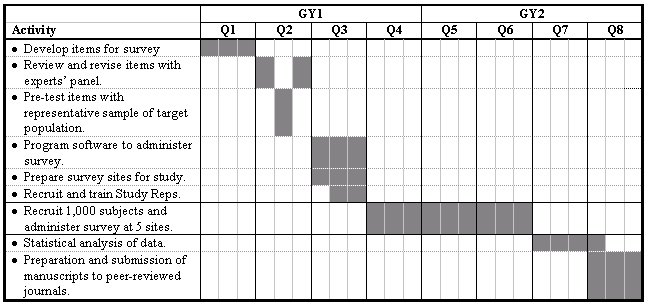
Some closing advice
Some of us may feel ashamed or embarrassed about asking for money or promoting ourselves. Often, these feelings have more to do with our own insecurities than with problems in the tone or style of our writing. If you’re having trouble because of these types of hang-ups, the most important thing to keep in mind is that it never hurts to ask. If you never ask for the money, they’ll never give you the money. Besides, the worst thing they can do is say no.
UNC resources for proposal writing
Research at Carolina http://research.unc.edu
The Odum Institute for Research in the Social Sciences https://odum.unc.edu/
UNC Medical School Office of Research https://www.med.unc.edu/oor
UNC School of Public Health Office of Research http://www.sph.unc.edu/research/
Works consulted
We consulted these works while writing this handout. This is not a comprehensive list of resources on the handout’s topic, and we encourage you to do your own research to find additional publications. Please do not use this list as a model for the format of your own reference list, as it may not match the citation style you are using. For guidance on formatting citations, please see the UNC Libraries citation tutorial . We revise these tips periodically and welcome feedback.
Holloway, Brian R. 2003. Proposal Writing Across the Disciplines. Upper Saddle River, New Jersey: Prentice Hall.
Levine, S. Joseph. “Guide for Writing a Funding Proposal.” http://www.learnerassociates.net/proposal/ .
Locke, Lawrence F., Waneen Wyrick Spirduso, and Stephen J. Silverman. 2014. Proposals That Work . Thousand Oaks, CA: Sage.
Przeworski, Adam, and Frank Salomon. 2012. “Some Candid Suggestions on the Art of Writing Proposals.” Social Science Research Council. https://s3.amazonaws.com/ssrc-cdn2/art-of-writing-proposals-dsd-e-56b50ef814f12.pdf .
Reif-Lehrer, Liane. 1989. Writing a Successful Grant Application . Boston: Jones and Bartlett Publishers.
Wiggins, Beverly. 2002. “Funding and Proposal Writing for Social Science Faculty and Graduate Student Research.” Chapel Hill: Howard W. Odum Institute for Research in Social Science. 2 Feb. 2004. http://www2.irss.unc.edu/irss/shortcourses/wigginshandouts/granthandout.pdf.
You may reproduce it for non-commercial use if you use the entire handout and attribute the source: The Writing Center, University of North Carolina at Chapel Hill
Make a Gift
Reference management. Clean and simple.
How to write a grant proposal: a step-by-step guide

What is a grant proposal?
Why should you write a grant proposal, format of a grant proposal, how to write a grant proposal, step 1: decide what funding opportunity to apply for, and research the grant application process, step 2: plan and research your project, preliminary research for your grant proposal, questions to ask yourself as you plan your grant proposal, developing your grant proposal, step 3: write the first draft of your grant proposal, step 4: get feedback, and revise your grant proposal accordingly, step 5: prepare to submit your grant proposal, what happens after submitting the grant proposal, final thoughts, other useful sources for writing grant proposals, frequently asked questions about writing grant proposals, related articles.
You have a vision for a future research project, and want to share that idea with the world.
To achieve your vision, you need funding from a sponsoring organization, and consequently, you need to write a grant proposal.
Although visualizing your future research through grant writing is exciting, it can also feel daunting. How do you start writing a grant proposal? How do you increase your chances of success in winning a grant?
But, writing a proposal is not as hard as you think. That’s because the grant-writing process can be broken down into actionable steps.
This guide provides a step-by-step approach to grant-writing that includes researching the application process, planning your research project, and writing the proposal. It is written from extensive research into grant-writing, and our experiences of writing proposals as graduate students, postdocs, and faculty in the sciences.
A grant proposal is a document or collection of documents that outlines the strategy for a future research project and is submitted to a sponsoring organization with the specific goal of getting funding to support the research. For example, grants for large projects with multiple researchers may be used to purchase lab equipment, provide stipends for graduate and undergraduate researchers, fund conference travel, and support the salaries of research personnel.
As a graduate student, you might apply for a PhD scholarship, or postdoctoral fellowship, and may need to write a proposal as part of your application. As a faculty member of a university, you may need to provide evidence of having submitted grant applications to obtain a permanent position or promotion.
Reasons for writing a grant proposal include:
- To obtain financial support for graduate or postdoctoral studies;
- To travel to a field site, or to travel to meet with collaborators;
- To conduct preliminary research for a larger project;
- To obtain a visiting position at another institution;
- To support undergraduate student research as a faculty member;
- To obtain funding for a large collaborative project, which may be needed to retain employment at a university.
The experience of writing a proposal can be helpful, even if you fail to obtain funding. Benefits include:
- Improvement of your research and writing skills
- Enhancement of academic employment prospects, as fellowships and grants awarded and applied for can be listed on your academic CV
- Raising your profile as an independent academic researcher because writing proposals can help you become known to leaders in your field.
All sponsoring agencies have specific requirements for the format of a grant proposal. For example, for a PhD scholarship or postdoctoral fellowship, you may be required to include a description of your project, an academic CV, and letters of support from mentors or collaborators.
For a large research project with many collaborators, the collection of documents that need to be submitted may be extensive. Examples of documents that might be required include a cover letter, a project summary, a detailed description of the proposed research, a budget, a document justifying the budget, and the CVs of all research personnel.
Before writing your proposal, be sure to note the list of required documents.
Writing a grant proposal can be broken down into three major activities: researching the project (reading background materials, note-taking, preliminary work, etc.), writing the proposal (creating an outline, writing the first draft, revisions, formatting), and administrative tasks for the project (emails, phone calls, meetings, writing CVs and other supporting documents, etc.).
Below, we provide a step-by-step guide to writing a grant proposal:
- Decide what funding opportunity to apply for, and research the grant application process
- Plan and research your project
- Write the first draft of your grant proposal
- Get feedback, and revise your grant proposal accordingly
- Prepare to submit your grant proposal

- Start early. Begin by searching for funding opportunities and determining requirements. Some sponsoring organizations prioritize fundamental research, whereas others support applied research. Be sure your project fits the mission statement of the granting organization. Look at recently funded proposals and/or sample proposals on the agency website, if available. The Research or Grants Office at your institution may be able to help with finding grant opportunities.
- Make a spreadsheet of grant opportunities, with a link to the call for proposals page, the mission and aims of the agency, and the deadline for submission. Use the information that you have compiled in your spreadsheet to decide what to apply for.
- Once you have made your decision, carefully read the instructions in the call for proposals. Make a list of all the documents you need to apply, and note the formatting requirements and page limits. Know exactly what the funding agency requires of submitted proposals.
- Reach out to support staff at your university (for example, at your Research or Grants Office), potential mentors, or collaborators. For example, internal deadlines for submitting external grants are often earlier than the submission date. Make sure to learn about your institution’s internal processes, and obtain contact information for the relevant support staff.
- Applying for a grant or fellowship involves administrative work. Start preparing your CV and begin collecting supporting documents from collaborators, such as letters of support. If the application to the sponsoring agency is electronic, schedule time to set up an account, log into the system, download necessary forms and paperwork, etc. Don’t leave all of the administrative tasks until the end.
- Map out the important deadlines on your calendar. These might include video calls with collaborators, a date for the first draft to be complete, internal submission deadlines, and the funding agency deadline.
- Schedule time on your calendar for research, writing, and administrative tasks associated with the project. It’s wise to group similar tasks and block out time for them (a process known as ” time batching ”). Break down bigger tasks into smaller ones.
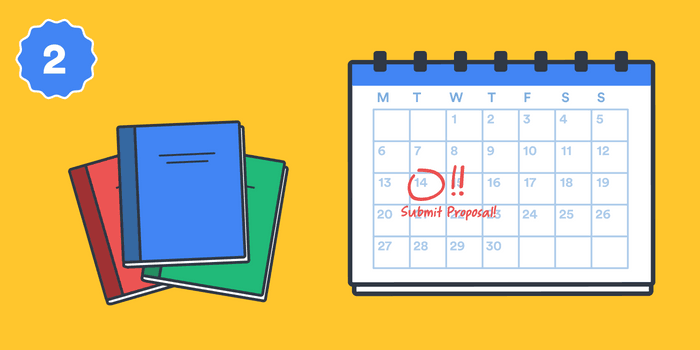
Now that you know what you are applying for, you can think about matching your proposed research to the aims of the agency. The work you propose needs to be innovative, specific, realizable, timely, and worthy of the sponsoring organization’s attention.
- Develop an awareness of the important problems and open questions in your field. Attend conferences and seminar talks and follow all of your field’s major journals.
- Read widely and deeply. Journal review articles are a helpful place to start. Reading papers from related but different subfields can generate ideas. Taking detailed notes as you read will help you recall the important findings and connect disparate concepts.

- Writing a grant proposal is a creative and imaginative endeavor. Write down all of your ideas. Freewriting is a practice where you write down all that comes to mind without filtering your ideas for feasibility or stopping to edit mistakes. By continuously writing your thoughts without judgment, the practice can help overcome procrastination and writer’s block. It can also unleash your creativity, and generate new ideas and associations. Mind mapping is another technique for brainstorming and generating connections between ideas.
- Establish a regular writing practice. Schedule time just for writing, and turn off all distractions during your focused work time. You can use your writing process to refine your thoughts and ideas.
- Use a reference manager to build a library of sources for your project. You can use a reference management tool to collect papers , store and organize references , and highlight and annotate PDFs . Establish a system for organizing your ideas by tagging papers with labels and using folders to store similar references.
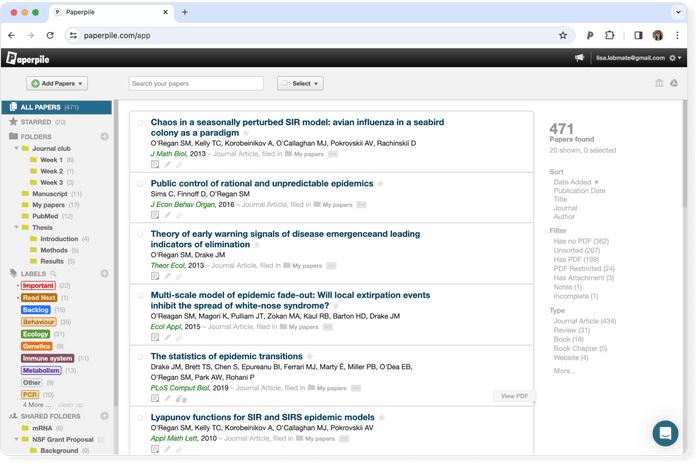
To facilitate intelligent thinking and shape the overall direction of your project, try answering the following questions:
- What are the questions that the project will address? Am I excited and curious about their answers?
- Why are these questions important?
- What are the goals of the project? Are they SMART (Specific, Measurable, Actionable, Relevant, and Timely)?
- What is novel about my project? What is the gap in current knowledge?
- What methods will I use, and how feasible is my approach?
- Can the work be done over the proposed period, and with the budget I am requesting?
- Do I have relevant experience? For example, have I completed similar work funded by previous grants or written papers on my proposed topic?
- What pilot research or prior work can I use, or do I need to complete preliminary research before writing the proposal?
- Will the outcomes of my work be consequential? Will the granting agency be interested in the results?
- What solutions to open problems in my field will this project offer? Are there broader implications of my work?
- Who will the project involve? Do I need mentors, collaborators, or students to contribute to the proposed work? If so, what roles will they have?
- Who will read the proposal? For example, experts in the field will require details of methods, statistical analyses, etc., whereas non-experts may be more concerned with the big picture.
- What do I want the reviewers to feel, and take away from reading my proposal?
- What weaknesses does my proposed research have? What objections might reviewers raise, and how can I address them?
- Can I visualize a timeline for my project?
Create an actionable plan for your research project using the answers to these questions.
- Now is the time to collect preliminary data, conduct experiments, or do a preliminary study to motivate your research, and demonstrate that your proposed project is realistic.
- Use your plan to write a detailed outline of the proposal. An outline helps you to write a proposal that has a logical format and ensures your thought process is rational. It also provides a structure to support your writing.
- Follow the granting agency’s guidelines for titles, sections, and subsections to inform your outline.
At this stage, you should have identified the aims of your project, what questions your work will answer, and how they are relevant to the sponsoring agency’s call for proposals. Be able to explain the originality, importance, and achievability of your proposed work.

Now that you have done your research, you are ready to begin writing your proposal and start filling in the details of your outline. Build on the writing routine you have already started. Here are some tips:
- Follow the guidelines of the funding organization.
- Keep the proposal reviewers in mind as you write. Your audience may be a combination of specialists in your field and non-specialists. Make sure to address the novelty of your work, its significance, and its feasibility.
- Write clearly, concisely, and avoid repetition. Use topic sentences for each paragraph to emphasize key ideas. Concluding sentences of each paragraph should develop, clarify, or summarize the support for the declaration in the topic sentence. To make your writing engaging, vary sentence length.
- Avoid jargon, where possible. Follow sentences that have complex technical information with a summary in plain language.
- Don’t review all information on the topic, but include enough background information to convince reviewers that you are knowledgeable about it. Include preliminary data to convince reviewers you can do the work. Cite all relevant work.
- Make sure not to be overly ambitious. Don’t propose to do so much that reviewers doubt your ability to complete the project. Rather, a project with clear, narrowly-defined goals may prove favorable to reviewers.
- Accurately represent the scope of your project; don’t exaggerate its impacts. Avoid bias. Be forthright about the limitations of your research.
- Ensure to address potential objections and concerns that reviewers may have with the proposed work. Show that you have carefully thought about the project by explaining your rationale.
- Use diagrams and figures effectively. Make sure they are not too small or contain too much information or details.
After writing your first draft, read it carefully to gain an overview of the logic of your argument. Answer the following questions:
- Is your proposal concise, explicit, and specific?
- Have you included all necessary assumptions, data points, and evidence in your proposal?
- Do you need to make structural changes like moving or deleting paragraphs or including additional tables or figures to strengthen your rationale?
- Have you answered most of the questions posed in Step 2 above in your proposal?
- Follow the length requirements in the proposal guidelines. Don't feel compelled to include everything you know!
- Use formatting techniques to make your proposal easy on the eye. Follow rules for font, layout, margins, citation styles , etc. Avoid walls of text. Use bolding and italicizing to emphasize points.
- Comply with all style, organization, and reference list guidelines to make it easy to reviewers to quickly understand your argument. If you don’t, it’s at best a chore for the reviewers to read because it doesn’t make the most convincing case for you and your work. At worst, your proposal may be rejected by the sponsoring agency without review.
- Using a reference management tool like Paperpile will make citation creation and formatting in your grant proposal quick, easy and accurate.
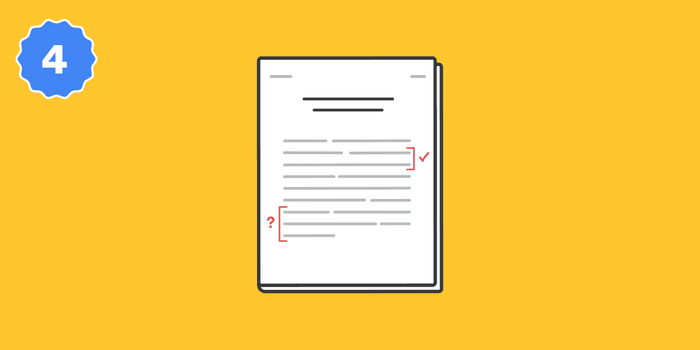
Now take time away from your proposal, for at least a week or more. Ask trusted mentors or collaborators to read it, and give them adequate time to give critical feedback.
- At this stage, you can return to any remaining administrative work while you wait for feedback on the proposal, such as finalizing your budget or updating your CV.
- Revise the proposal based on the feedback you receive.
- Don’t be discouraged by critiques of your proposal or take them personally. Receiving and incorporating feedback with humility is essential to grow as a grant writer.
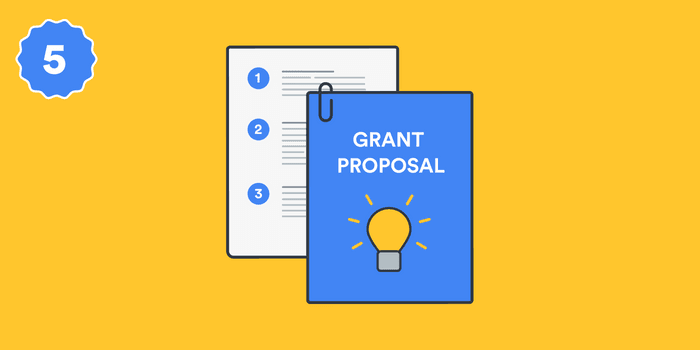
Now you are almost ready to submit. This is exciting! At this stage, you need to block out time to complete all final checks.
- Allow time for proofreading and final editing. Spelling and grammar mistakes can raise questions regarding the rigor of your research and leave a poor impression of your proposal on reviewers. Ensure that a unified narrative is threaded throughout all documents in the application.
- Finalize your documents by following a checklist. Make sure all documents are in place in the application, and all formatting and organizational requirements are met.
- Follow all internal and external procedures. Have login information for granting agency and institution portals to hand. Double-check any internal procedures required by your institution (applications for large grants often have a deadline for sign-off by your institution’s Research or Grants Office that is earlier than the funding agency deadline).
- To avoid technical issues with electronic portals, submit your proposal as early as you can.
- Breathe a sigh of relief when all the work is done, and take time to celebrate submitting the proposal! This is already a big achievement.
Now you wait! If the news is positive, congratulations!
But if your proposal is rejected, take heart in the fact that the process of writing it has been useful for your professional growth, and for developing your ideas.
Bear in mind that because grants are often highly competitive, acceptance rates for proposals are usually low. It is very typical to not be successful on the first try and to have to apply for the same grant multiple times.
Here are some tips to increase your chances of success on your next attempt:
- Remember that grant writing is often not a linear process. It is typical to have to use the reviews to revise and resubmit your proposal.
- Carefully read the reviews and incorporate the feedback into the next iteration of your proposal. Use the feedback to improve and refine your ideas.
- Don’t ignore the comments received from reviewers—be sure to address their objections in your next proposal. You may decide to include a section with a response to the reviewers, to show the sponsoring agency that you have carefully considered their comments.
- If you did not receive reviewer feedback, you can usually request it.
You learn about your field and grow intellectually from writing a proposal. The process of researching, writing, and revising a proposal refines your ideas and may create new directions for future projects. Professional opportunities exist for researchers who are willing to persevere with submitting grant applications.
➡️ Secrets to writing a winning grant
➡️ How to gain a competitive edge in grant writing
➡️ Ten simple rules for writing a postdoctoral fellowship
A grant proposal should include all the documents listed as required by the sponsoring organization. Check what documents the granting agency needs before you start writing the proposal.
Granting agencies have strict formatting requirements, with strict page limits and/or word counts. Check the maximum length required by the granting agency. It is okay for the proposal to be shorter than the maximum length.
Expect to spend many hours, even weeks, researching and writing a grant proposal. Consequently, it is important to start early! Block time in your calendar for research, writing, and administration tasks. Allow extra time at the end of the grant-writing process to edit, proofread, and meet presentation guidelines.
The most important part of a grant proposal is the description of the project. Make sure that the research you propose in your project narrative is new, important, and viable, and that it meets the goals of the sponsoring organization.
A grant proposal typically consists of a set of documents. Funding agencies have specific requirements for the formatting and organization of each document. Make sure to follow their guidelines exactly.
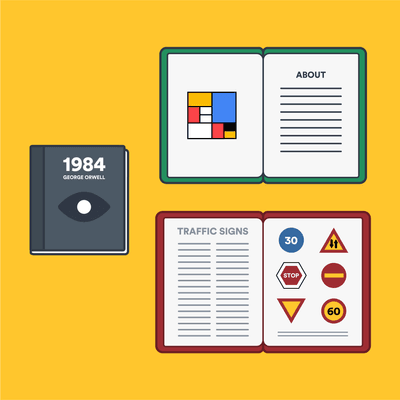
Grant Writing: How to Win Every Time (8 Free Checklists)
What’s the difference between a winning grant proposal and a losing one?
Grant writing.
Grant funding today is more difficult to obtain than ever before. A recent National Institute of Health (NIH) report showed that out of 50,000 grant applications , only 10,000 were given funding. That’s only 19%, which has fallen from 33% in the last 15 years.
A lack of Government funding, fierce competition, and poor grant writing skills.
We can’t do anything about the Government funds. We can do little about fierce competition. We can, however, do a lot about poor grant writing skills.
From completing complex grant applications to writing tip-top proposals, we’ve created the following eight templates to hone your grant writing skills.
If you’re in a hurry, go ahead! Click on the links below to jump straight in!
Applying for a Government Grant Checklist
Budget proposal template.
- Grant Application Process
- How to Search for Grants Process
How to Write a Grant Proposal Checklist
How to write a research proposal checklist, proposal template checklist process, simple proposal format checklist.
Curious about what these templates looks like? Check out the Proposal Template embedded below.
Scroll down for more information on each template of our grant writing template pack.
In addition to introducing our grant writing templates, I’ll be taking you behind the grant writing scenes, covering the following topics:
What is a grant? (Clue: it’s not free money)
Uncover the truth about what grant writing really is, how to write grant proposals that win every time, how to ace your grant proposals with process street.
Ready? Let’s start with the basics…
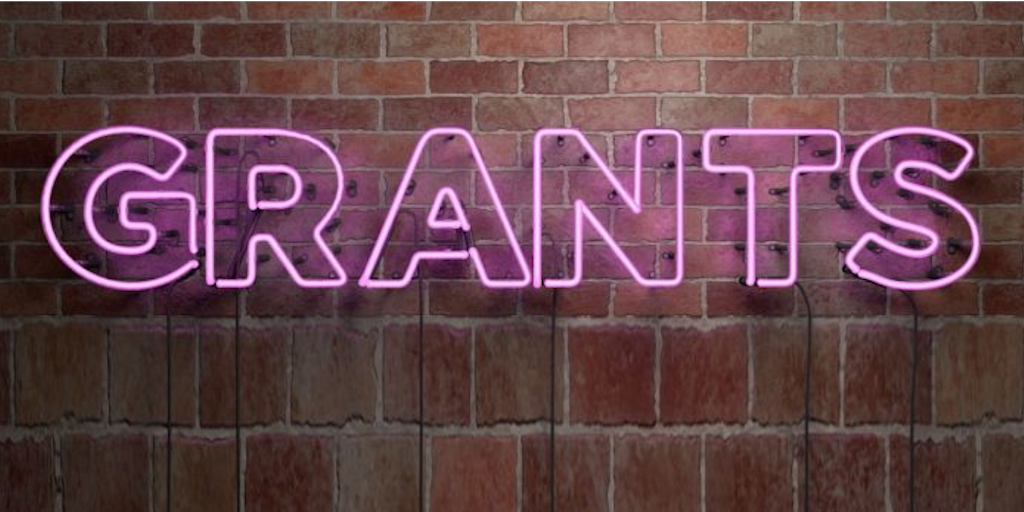
A grant is, in basic terms, an institution-or-governmental-funded bundle of money given for free, with the intent to fund a specific purpose, with no strings attached.
This is the official definition of a grant from the Collins Dictionary:
“ A grant is an amount of money that a government or other institution gives to an individual or to an organization for a particular purpose such as education or home improvements ” – Collins Dictionary
But wait. While researching this post, I discovered something different.
“ The federal government does not offer grants or “free money” to individuals to start a business or cover personal expenses, contrary to what you might see online or in the media ” – USA Gov
Grants are not easy. They are not free (well..technically they are kind of free..which I’ll explain in a second). And there are a LOT of strings attached.
Even the process of securing a grant requires serious effort . You need to fully understand the funding opportunity, its requirements, and your organization’s capacity, structure, and resources essential to fulfill the purpose of the grant. Applications or grant proposals can take upwards of 20 hours to write, and grants are awarded to those who can fulfill the grantor requests and not to those that need it the most.
To win a grant is beyond competitive. As an example, the probability of being awarded funding is between 10% and 35% in the UK.
And the effort doesn’t stop when the cheque hits your account either.
You have to stick to the grantor’s rules, terms, and conditions like glue. You have to report back to the funders regularly, to prove you are meeting their terms and conditions. You cannot use the money for what is not within the grant guidelines.
Grants also often provide only a portion of the funds needed for a given project. You must meet detailed performance standards during the funding period, and all project expenditures must be strictly accounted for. Detailed program goals must be developed, approved and carried out exactly as specified in the grant application.
To top it all off, failure on the part of the grant recipient to perform under the requirements of the grant can result in penalties, ranging from economic sanctions to prison in cases of improper use or theft of public funds!
So, in conclusion, a grant is not a Christmas present. A grant is, in fact;
“ A form of gift that entails certain obligations on the part of the grantee and expectations on the part of the grantor ” – Robert Langley , ThoughtCo
So, now we know what a grant really is, let’s familiarise ourselves with what grant writing really is.
“ Grant writing is many things — difficult, challenging, confusing, frustrating, mind-boggling and competitive. It’s rarely described as easy, fun or simple ” – Megan Hill , NonProfitPro
Sounds great, doesn’t it? I’ll bet you’re itching to start!
However, before you resign, throw the towel in, and plan to hire an expensive grant writer to take on your next proposal, it’s not all doom and gloom.
Grant writing is a form of persuasive writing . It’s about telling stories. It’s exhilarating, imaginative work and a chance to make a huge difference to your organization, your community, yourself and even the big wide world. You have the opportunity to turn your ideas into something real with grant writing.
“ You have a distinct vision for how something could be improved or advanced, and you’re ready to ask for funding or other support to help this vision become a reality ” – The Writing Center
What could be more exciting?
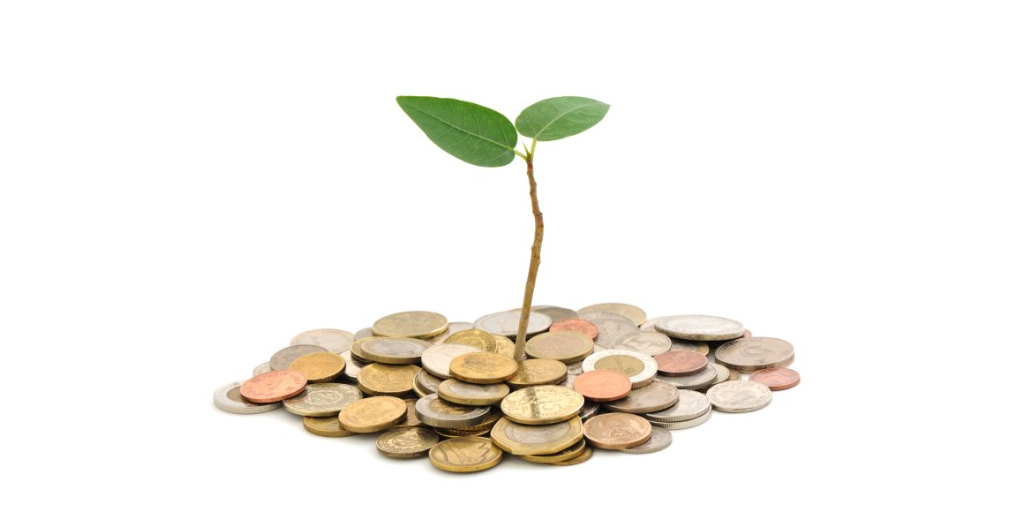
But, when you consider only a quarter of applicants that submitted applications to the main federal funding agencies received funding, you realize, it’s competitive out there. Grant writing is tough.
“ In 2014, the U.S. Department of Transportation’s TIGER grant program accepted less than 10% of eligible grant applications for the $600 million of available funding ” – eCivis
That’s why it’s crucial to have a great set of grant writing skills and know-how to write a cracking grant proposal.
Which, coincidentally, brings me to my next point.
Contrary to what you might think, grant writing isn’t all about writing. In fact, the writing part accounts for only 1/3 of the process . The three key components that make up a good grant proposal are:
Let’s take a closer look at each part.
1. Grant writing: Research
Grant writing begins, like most writing does — by gathering information. Knowledge is power! The more you know about your (potential) grantor, the better you can tailor your proposal to meet their requirements.
Obtain guidelines and deadlines and study them. Look at who and what was funded before you. Write preliminary material. Conduct a literature review. Look at old proposals. Research the grantor. Spend time defining your project, program or activity. Look for potential barriers to success and find ways around them. Talk to people. Predict questions and prepare answers.
Great research will lead to a greater chance of grant funding.
2. Grant writing: Planning
A request for proposal (RFP), usually specifies what information to include your grant proposal and in what format. Study these requirements until you’re blue in the face. Carefully plan out the structure of your proposal and include details about what you need to include, where it needs to go, and in what format. Triple check your plan against the RFP to make sure you have accounted for every single requirement that the grantor has asked for.
“ Missing or incomplete items often result in outright rejection or at least a lower score, limiting your chance for funding ”- ARC
Having said that, writing a grant proposal is like building a house. Several components will vary based on industry, company size, and many other factors – but the fundamentals are the same . The house will always need a roof, walls, windows, and doors. Grant proposals will always need information about your company, demonstrated knowledge of the problem, a budget, and a sound methodology.
“ There’s a lot of money out there, and you don’t need to be a rocket scientist to get a share of it. You do, however, need to be organized and clear about what you want ” – Funding Centre
3. Grant writing: Writing
Once you’ve finished your extensive research and meticulously planned out what to include and where to include it, you’ll finally be ready to start writing your proposal.

Final decisions about which proposals are funded often come down to whether the proposal convinces the reviewer that the project is well planned and feasible and whether the investigators are qualified enough to execute it. This can be conveyed through your writing.
“ Obvious errors in writing undermine the evidence of competence ” – Dr. Raymond A. Shapek
Be direct and specific. Imagine you’re on Blind Date and you have five seconds to convince someone, who’s never met you and knows nothing about you, that you’re the one for them. Tell them exactly what you want, why you want it and what you will do for them.
Don’t overkill a point . State it, support it, and move on.
Avoid inflated or impossible promises. Cut unsupported subjective arguments. And don’t assume that the reader is intimately familiar with the subject (it will only make an ass out of u and me ).
Finally, and I hate to break this to you, the majority of review-panel members will only read your proposal’s abstract . So, if nothing else, make that the best thing you write. It must not only provide a clear snapshot of the entire project or program, but it must also convey what is novel about your application.
Most readers are lazy and will not respond well to a poorly organized, poorly written, or confusing proposal, so write a clear, structured and well thought-through grant proposal.
In a previous job, before Process Street , I worked for a digital agency that specialized in building websites. As part of my role, I wrote project proposals to support these website builds.
Although not in the same league as grant writing, in terms of competitiveness and complexity, it was still highly pressured, time-consuming and required a lot of effort.
I found that articles and blog posts on the “common proposal writing mistakes” were, well.. common! But merely avoiding the mistakes wasn’t good enough to make a winning proposal.
I needed strong processes in place to make sure I’d gathered all the required information, adhered to all set guidelines and was writing clear, concise and persuasive proposals.
This is when I wish I’d known about Process Street!
What is Process Street?
Process Street is super-powered checklists. You can manage all your recurring tasks, procedures and workflows with our bespoke Business Process Management (BPM) software. With Process Street you can create a process for everything .
You can create templates and run individual checklists for each member of your team. Check tasks off as you work through them, set deadlines, request approval, assign tasks , and track each team member’s progress .
Watch this video, it will explain all:
With Process Street, you can also connect to thousands of apps through Zapier , webhooks and API access to automate your workflows.
Watch this webinar on business automation to discover how to take your workflows to the next level:
As if that wasn’t enough, we also have the following additional features that have been designed to create efficiencies, automate workflows and make processes within your business run smoothly:
- Dynamic due dates
- Task permissions
- Conditional logic
- Approval tasks
- Embed widget
- Role assignments
So, now you know who we are and what we do, it’s time to find out how we can help.
We have created the below eight grant writing templates to help you search for the right funding opportunities, write winning proposals, and apply for those competitive grants.
Applying for a government grant can be highly competitive, with grant seekers across the nation vying with each other to apply for a government grant and obtain it successfully. Use this checklist alongside your grant application to make sure your application is complete, including everything that is required.
Click here to access the Applying for a Government Grant Checklist
Many, if not all, grant proposals will require a short budget to be included. Use this checklist to breakdown direct and indirect costs associated with the benefit that’s being created.
Click here to access the Budget Proposal Template
Grant Application Process Checklist
The grant application process can be highly complex and extremely competitive. This checklist covers the areas that need to be researched, the questions that are likely to be asked and the information that should be gathered for the application.
Click here to access the Grant Application Process Checklist
How to Search for Grants Process Checklist
Use this checklist each time you need to search for a funding opportunity for your project, activity or program. The process behind how to search for grants typically begins with prospect research to find out who is most likely to give you money. Matching interests is the most critical aspect of finding an excellent prospective funder.
Click here to access the How to Search for Grants Process Checklist
The process of how to write a grant proposal is a long one, and it can seem overwhelming. With so much information to compile and so much riding on success, it’s important to follow a process to make sure you have the best possible chance of success.
Click here to access the How to Write a Grant Proposal Checklist
Use this checklist to make sure your research proposal contains all the right information, is structured and coherent, and displays the facts in an interesting, engaging way and ultimately supports your research proposal in requesting funding/sponsorship for your research project.
Click here to access the How to Write a Research Proposal Checklist
Writing a successful proposal is a competitive, tough and a long process. Follow this checklist to make sure you have gathered all the required information, adhered to all set guidelines and you are writing clear, concise and persuasive proposals.
Click here to access the Proposal Template Checklist
You have the opportunity to turn your ideas into something real with your grant proposal. Use this checklist alongside the proposal document you are planning to submit. Use it to make sure that all elements have been considered, that the proposal contains everything it needs to and that it meets all set requirements.
Click here to access the Simple Proposal Format Checklist
We also have the following related articles and checklists that will help you in all areas of grant writing.
Grant writing-related articles and blogs
- How to Write a Proposal and Get What You Want
- 6 Types of Project Proposals That Get Approved (and How to Write Them)
- Project Proposal Writing
- Proposal Writing: The Six-Step Process
- Proposal writing: Stages and Strategies with Examples
- Planning and Writing a Grant Proposal: The Basics
- How to Write a Grant Proposal
- How to Write a Winning Grant Proposal
- Grant Proposals (or give me the money!)
- Government Grants Statistics
- 4 Types of Grant Funding
- Top 3 Things to Know Before Applying for a Grant
- Grantseeking Basics
- Government Grants and Loans
- A Short Summary of Federal Grants
- What Is a Grant?
- Things to do Before Writing a Grant Proposal
- Understanding Government Grants
- 11 Things to Consider Before Applying for Government Funding
- 10 Checklist Tips for an Optimal Web Design Proposal Template
- 5-Step Guide to Get Your App Funded in 2019
Additional grant writing related process checklists
- Writing a Proposal: Step-by-Step Guide
- Construction Proposal Template
- Construction Progress Report
- Continuation Project Proposal Template
- Renewal Project Proposal Template
- Supplemental Project Proposal Template
- Social Media Engagement Campaign Proposal
- Budget Preparation Checklist
- Budget Template
- Budget Process
- Startup Due Diligence For A Venture Capitalist
- Environmental Accounting Internal Audit
- Financial Plan Template
- Cash Flow Report
- Expense Management Process
- Cash Management Process
Preparing to submit a grant proposal can seem overwhelming . With the amount of information you will need to compile, the number of requirements you will need to meet, and a lot riding on the success of the proposal, it’s important to stack the odds in your favor.
This is where Process Street can help. Sign up for a free trial and try it for yourself!
I hope you found this post useful. We’d love to hear about your grant writing processes in the comments below. Who knows? You may even get featured in an upcoming article!
Get our posts & product updates earlier by simply subscribing
Amanda Greenwood
Amanda is a content writer for Process Street. Her main mission in life is to write content that makes business processes fun, interesting, and easy to understand. Her background is in marketing and project management, so she has a wealth of experience to draw from, which adds a touch of reality and a whole heap of depth to the content she writes.
Leave a Reply Cancel reply
Your email address will not be published. Required fields are marked *
Save my name, email, and website in this browser for the next time I comment.
Take control of your workflows today
Purdue Online Writing Lab Purdue OWL® College of Liberal Arts
Introduction to Grant Writing

Welcome to the Purdue OWL
This page is brought to you by the OWL at Purdue University. When printing this page, you must include the entire legal notice.
Copyright ©1995-2018 by The Writing Lab & The OWL at Purdue and Purdue University. All rights reserved. This material may not be published, reproduced, broadcast, rewritten, or redistributed without permission. Use of this site constitutes acceptance of our terms and conditions of fair use.
Professional grant writers use clear, specific language to focus the reader’s attention, and to persuade the reader to fund their proposal. Learning to write successful grant proposals is no small task, but the writing process can become easier with practice and awareness of a few common missteps.
No doubt, the first step of successful grant writing is to plan the project, but the second step is following the directions of the granting organization (called, the grantmaker). In most cases, grantmakers require a(n): cover letter , executive summary , problem statements/need description , work schedule, budget, qualifications , conclusions , and appendices (or, supporting materials). Each section will have specific requirements and while keeping to a word limit is straightforward, being specific is less easy.
A Note on Following the Grantmaker’s Rules
Following directions helps the grantmaker read applications efficiently. Specificity of content will not only vary by grantmaker, but also by proposal sections. For example, a grantmaker may limit your application in general terms for background information on the contexts of your proposal:
“Please tell the grant committee in 2 to 3 pages about the support your institution or community will provide for your project if your proposal is granted the requested funds.”
Likewise, a grantmaker may explicitly limit your response to a section on the grant applicant’s qualifications by stating:
“In no more than 350 words, please summarize the grant applicant’s specific qualifications to manage the finances of the proposal. Discuss any financial experience (for example, certifications in accounting services), or other relevant office managerial duties that will help the applicant distribute funds and write regular quarterly financial reports.”
Keep in mind that many grantmakers will not read past the point of your departure from the application rules, no matter how worthy the project is or how neat and well designed the application package looks. So, while there is no guaranteed way to win a grantmaker’s funds, not following directions is a sure fire way of losing your chances at getting any funds. Ultimately, not following directions indicates carelessness—which is not a characteristic of a promising proposal.
Check Out Our Brand-New 20 Minute Training on How to Make Money as a Grant Writer
How to Write a Grant Proposal: 7-Step System & Bonus Tips
You’ve been asked to write a grant proposal for your nonprofit. Or you’re looking for a new way to grow your skills and earn some extra cash while doing good. You’re writing a proposal as a freelance grant writer. What comes next?
Grant writing is a specialized skill, and real money is on the line for important causes. While writing a grant for the first time can feel nerve-wracking, grant writing is a very learnable skill. Master it, and you can unlock tons of support for organizations. You can also build a more fulfilling career.
The trick to success is following consistent processes to stay on schedule and produce your best work. This guide breaks down our very best advice on how to write a grant and win more funding. We’ve also included bonus tips to level up your proposal writing.
Here’s what we’ll cover:
How to Write a Grant Proposal: Video Overview
Anatomy of a grant proposal.
- How to Write a Grant in 7 Steps
- How We Can Help
Is Grant Writing A Good Career For You?
Take the 3 minute personality quiz to find out!
Let’s kick things off with a little context:
What’s a Grant?
A grant is a financial award to support a person, organization, project, or program. It is intended to achieve a specific goal or purpose. In most cases, a grant is awarded to a nonprofit organization from a foundation, corporation, or government agency to fund a specific project or program.
What's Grant Writing?
Grant writing is the act of preparing an application to receive funding for a project or organization through a grant. The magic of grants is that the money awarded does not need to be paid back, which makes them such valuable sources of funding.
To learn more about how grants work and who’s eligible for them, head over to our longer guide to grant writing basics!
Grant writing is like baking cake. You have a recipe to follow to get it just right. Some recipes are more complex than others—a small local grant is your basic chocolate cake, while a big federal grant is a three-tiered wedding cake.
Whatever you’re baking, there are key ingredients coming together in specific steps. When you learn the fundamentals, you can adapt to any recipe (or grant proposal) thrown your way.
🎂 For the visual learners among us, follow along as we bake up a grant proposal! 🎂
Before jumping right into your first grant writing project, it’s helpful to understand the different elements that grant applications often ask for. This will give you a clearer idea of what to expect and what information you’ll need to gather for your proposal. Let’s take a look:
Most grant proposals include these main sections:
- Introduction or abstract. What can grant makers expect from your proposal? (Pro tip—write your abstract last so that it’s as accurate and reflective of your story as possible!)
- Organizational background. Who are you writing the grant for? What is the organization’s history?
- Statement of need. Why are you proposing a project or program? What needs will it address in your community? Do you have hard numbers to back it up?
- Project description. What is the project or program you’re proposing?
- Methodology. How will you implement your new project? What will the steps and timeline look like?
- Goals and objectives. What are the specific, measurable goals for your project? How do they connect back to the statement of need?
- Budget. How much will it cost to implement your project? How much of that funding will come from different sources, including this grant?
- Evaluation plan. How will you measure your progress and the impact of your project?
- Sustainability plan. How will you sustain the new project or program after the grant funding ends?
In addition, many grants require further documentation like:
- A resolution. Is your whole organization on board with the project and ready to comply with the funder’s requirements if awarded the grant?
- Risk assessments. What are the risks and challenges that may impact the successful implementation of your project?
- Partnerships and collaborations. Are other organizations, sponsors, and/or major donors helping to fund or implement your project?
- Letters of support. Can constituents and peer organizations back up your organization’s ability to get things done?
- Appendices, data, and research. Do you have additional research to back up your statement of need and projected impact?
- Other supporting documents, like resumes of key staff members and a copy of your IRS 501(c)(3) Letter of Determination.
Note that different grants can have wildly different requirements depending on the context and funder. Grant applications might also have different names for these elements, so it’s important to very closely read and understand their requirements—see Step 1 below!
Free Grant Writing Class
Learn the 7-steps to write a winning grant application and amplify the impact you have on your community.
The Nitty-Gritty: How to Write a Grant in 7 Steps
We’ve covered all the parts of a grant proposal that you might encounter. Now, let’s get into how you actually write the darn thing.
At Learn Grant Writing , we follow a tried-and-true 7-step approach to writing winning grants.
Step 1: Follow Your North Star ⭐ (AKA the Funding Guidelines).
Funding guidelines are instructions from the funder on how to apply for a grant. They’ll also include information about eligibility, what the narrative requires, attachments, and much more.
These guidelines are not like the Ikea instructions you didn’t read or the airplane safety card you ignored. Nope, these funding guidelines are like having the recipe for your great-grandmother’s famous family spaghetti sauce, and if you diverge at all you will not quite get it right.
For that reason, treat your funding guidelines like great-grannie’s recipe, with care and attention to detail.
You usually can download funding guidelines from the funding agency’s website. Once downloaded, print them so you have a hard copy to mark up. Yes, the anti-paper millennial just told you to print your guidelines.
Why print your guidelines? Because you will catch nuances that, for some reason, are difficult to see when reading on a computer. Even if you have two screens, you want the instructions by your side to spill coffee on!
Read the funding guidelines from beginning to end and then take a break. Dance to your favorite song, do a few sun salutations, pet your dog, or whatever you do to maintain your energy. When you are done, come back to the guidelines and reread them carefully. Highlight keywords that are used repeatedly and specific instructions like font size requirements (yes, they get that specific).
The funding guidelines should, at a minimum, spell out what information the funder wants in your grant narrative. If you are lucky, they will also include how they score your responses.
Note that requirements can vary drastically. Easier applications might only have two pages of instructions. Federal grants can easily have 80+ pages in their funding guidelines. The complexity usually correlates to the funding award size and funding source.
Step 2: Prepare Your Narrative Skeleton.
Nothing is more intimidating than a blank page. To avoid feeling overwhelmed, always prepare a “narrative skeleton.” This is an outline for each section of the narrative and, if available, the scoring criteria.
Start by typing each narrative prompt into a blank document. By doing this, you’ll prepare the exact headers and subheaders that the funding agency wants to see in your narrative.
Below is an example of a funding guideline that will get put into a narrative skeleton:
Rating Factor 1: Capacity of the Applicant
Subfactor 1.1.a Managerial and Technical Staff. You must describe the project-specific roles and responsibilities and knowledge/experience of the project director and all individual key staff in planning, managing, and implementing projects for which funding is requested. Experience pertaining to specific activities should be relevant, recent (in the last five years), and demonstrate that past projects were completed on or ahead of schedule.
Scoring Criteria: You describe the roles/responsibilities and the knowledge/experience of the project director and all individual key staff in planning, managing, and implementing projects for which funding is being requested. Experience of all individual key staff is relevant, recent, and successful.
Manually rewriting the application guidelines will help you organize your thoughts about how to respond to each section. You can even begin brainstorming here by adding bullet points with information you want to include. Looking at the example above, you know you need to collect specific project examples from key team members on their recent and relevant experience in delivering projects on schedule.
⭐ Pro Tip: Do not start writing complete sentences yet! I know, it’s tempting. At this point, though, you only want to capture ideas and questions so you can more readily identify where you have gaps in information later.
Once you have a complete narrative skeleton with bullet points, you will have a robust understanding of what you need to prepare the full grant proposal.
Quick Recap
Check out this video for an overview of Steps 1 and 2.
These first steps are extremely important—do them well, and you’ll boost your chances of writing a winning proposal! When you’re ready to move on, it’s time to schedule a kick-off meeting.
Step 3: Host an Outstanding Kick-Off Meeting.
A kick-off meeting is where you gather everyone involved in the project to plan for the grant preparation process. Your invitees will likely include organizational leaders and/or board members, plus key staff members who will be involved in running the funded project or program.
Remember, the amount of help you receive during the grant writing process is directly correlated to the success of your kick-off meeting. Never be afraid to ask for what you need to do your job and win the grant!
If you are meeting in person, express your gratitude to the group by bringing cookies or lunch. Even if you’re meeting remotely, you can arrange to have coffee and pastries delivered right before your call. If people feel appreciated and inspired by you, they will make your requests a priority.
Here’s our most important piece of advice—prepare an agenda beforehand and email it one day in advance.
⭐ Pro Tip: Develop a grant kick-off meeting agenda template that you can reuse over and over. You can download a template on our free resources page.
Fill in your agenda template with names of attendees, dates, times, and subjects. Also, send your narrative skeleton outline along with the agenda ahead of the kick-off meeting. This gives your team a better handle on the application requirements and can spur ideas on other information they can provide you. Plus, it shows you have a process in place and are well-organized right from the start.
When it’s time for the meeting, start with introductions if needed. Then, run through the narrative skeleton, asking where you can get the information you need for the grant application. Team members often come up with ideas for additional information or resources to reference when they can see the narrative skeleton themselves.
Close out the meeting by discussing the grant development schedule. You want to know now if someone will be unavailable because of vacation or other work obligations. Even if you carry 95% of the responsibility for completing the grant application, it is still important to establish a schedule with deadlines for your own accountability.
Following the meeting, send out an email summarizing action items and a calendar invite for the next progress check-in meeting. It is easiest to agree on a fixed time per week to meet. Schedule progress meetings that last no longer than 30-40 minutes. Shorter meetings help attendees feel refreshed enough to complete their action items immediately.
Watch this video for a closer look at why kick-off meetings are so important to the success of the grant preparation process.
Step 4: Finalize Your Grant Budget.
Even if it’s just a back-of-the-napkin estimate, have at least a rough cost approximation for your project at this point. In a perfect world, project budgets would be nearly complete before starting an application, but it never seems to work out that way.
However, finalizing your budget is now your top priority! The project budget impacts all other parts of your application.
For instance, if a grant requires the applicant to fund 50% of the project cost, it is impossible to calculate your cost share without knowing the total project cost. On top of that, an applicant’s cost share commitment must be documented in a formal resolution or letter from someone authorized in your organization to do so. Getting a resolution passed can be a time-consuming and formal process in some organizations, so it is best to get that ball rolling early on.
Grant applications also often require a budget narrative to describe how you developed a reasonable cost estimate. Might go without saying, but it’s worth saying anyway: You can’t write a budget narrative without a complete budget!
Most narratives also require an implementation plan and description of the benefits or projected outcomes of the project. Does your budget allow you to impact the lives of 20 veterans or 200? Will you renovate four low-income housing units or 14?
I am guessing the last few paragraphs were pretty overwhelming! Before you give up, know that none of that will be an issue for you if you have a finalized project budget. As such, we cannot emphasize enough the importance of finishing your budget as soon as possible.
⭐ Pro Tip: There’s no need to start your budgeting process from scratch! Download your free copy of our grant budget template here.
Free Grant Budget Template
If preparing a grant budget scares you, those days are about to be over! Download the free grant budget template below and take our free grant writing class to learn how to use it.
Step 5: Write Your Grant Narrative Fast and Furiously.
Now it’s time to put pen to paper (or, more likely, fingers to keys) and start writing your grant.
The grant narrative is a written description of your project, the problem it solves, and why it should be funded. It’s the bulk of your application, made up of the primary parts of a grant application listed above.
The exact nature of your narrative will vary depending on the requirements of each funding agency. Sometimes, a private foundation will ask for a letter of inquiry first. This is usually a two-page letter summarizing your proposal. If the funder likes your proposal, they’ll invite you to submit a full application. Other times, a grant narrative will be 15 pages of single-spaced writing with other lengthy and technical attachments.
Always customize your grant narrative to the grant for which you are applying. You can certainly recycle some text from previous applications, but it must be intentionally reworked to fit the funding guidelines.
Let’s take a look at some of our most important recommendations for this stage:
✏️ Prepare Your First Draft as Fast as Possible.
The time it takes to prepare your first draft of the narrative depends on the scope and complexity of the grant and its requirements.
If you are completing an online form, with responses generally under 500 characters, you should finish your first draft of the grant narrative in four days or fewer . If it’s a more complex proposal, requiring 18–20 pages of content, try to write your entire first draft in eight days (ideally fewer).
How do you write quickly? By staying focused.
It’s tempting to leave your narrative to track down information. At all costs, avoid doing this! Often the information you seek will get deleted in later drafts anyway, and it costs you too much time and energy to refocus.
For example, perhaps you are writing about who benefits from your project. It’s tempting to stop mid-sentence to look up supporting data. Instead, write a sentence like this: “XX% of the project beneficiaries are low to moderate income.” Later on, you can look up the exact statistic.
Let’s pause a hot second and talk about context switching. It is immensely taxing for your brain to bounce between tasks. With the best of intentions, we sit down to bust out our grant narrative. Not five minutes later we are glancing at our phone because notifications lit up on the screen, which somehow leads us to opening our inbox. Then we find ourselves ten tabs deep in our browser. It is crazy!
In fact, one study by Gloria Mark, Professor at the University of California Irvine’s Department of Informatics, found most people average only three minutes on any given task . Three minutes! When we context switch, it can eat up to 80% of our overall productivity , according to psychologist Gerald Weinberg.
Guess what? You will not be loving life as a grant writer if that is how you approach grant writing. This field requires deep work to A) get the job done, and B) keep you from burning out.
✏️ Write Your Grant Narrative Backward.
The harder sections are usually towards the end of your grant narrative and include topics like budgeting, project feasibility, etc. Working through the complex portions of the application first makes it easier to write the beginning sections, which are typically broader strokes.
⭐ Pro Tip: Dreading the idea of writing a long narrative? Here’s a time-saving hack! Record yourself talking slowly and clearly about each section of the narrative. Use your grant narrative skeleton developed in Step 2 to guide your recording. Then use any number of online resources to convert your audio file into text. The text file will be much easier to edit than writing your first draft from scratch. This method can save hours of writing, and it is how I wrote the first edition of my book!
✏️ Stay Accountable by Collaborating With Someone Else.
When we spend a lot of time working on a narrative, we become blind to silly mistakes. Prevent errors and write faster by having someone else evaluate your grant writing progress.
Your “accountability buddy” does not need to read your earliest, messiest versions of the narrative. But, if you have them accepting your drafts, it keeps you accountable to writing deadlines. This support can be truly invaluable.
Send your progress every two to three days to inspire yourself to work quickly.
Identify who this person will be during the grant kick-off meeting. Ideally, it is someone within your organization. If you do not have someone in your organization to collaborate with, ask a friend or other working professional if you can repay them the favor later.
When I was just starting my business, I hired my sister to edit my grant narratives. She named her price by putting something she wanted in my Amazon cart, and I was happy to pay for it because of the mistakes that she caught!
✏️ Edit, Edit, and Edit Some More.
After you complete your first draft of the narrative, you want at least four more versions. That’s right, four. On complex grants, you can have as many as 15 different narrative drafts!
Remember, great writing is concise and clear. Winning grant proposals tell clear, impactful stories. The only way you get to that level of brevity and impact is to continually fine-tune the writing.
Step 6: Prep Your Key Grant Application Attachments.
You’re picking up great momentum now! You’ve read your funding guidelines, prepared your narrative skeleton, hosted a kick-off meeting, drafted a budget, and gotten underway with narrative writing.
A key part of learning how to write grants involves getting comfortable with a range of other documents and attachments. The attachments required for each application will vary depending on the grant program. In this section, we will cover the most common attachments you can expect to encounter: a budget and budget narrative, a resolution, and letters of support.
Attachments can require a long lead time to finalize, so it is important to start them early in the grant writing process. Generally, we advise discussing attachments at the progress meeting after your kick-off.
For a quick overview, watch this video about how to prepare common grant application attachments:
📃 Grant Budget and Budget Narrative
In Step 4, you developed your grant budget. We recommend you use our grant budget spreadsheet as your “base camp budget” for the general project as a whole.
Then, in this step, you’ll adapt your budget to the format specifically requested by the funder. Some might have you fill out the information via an online fillable form. Others will have their own spreadsheet for you to use.
This is where things can get confusing—budgets do not always have the same categories. If you get stuck, reach out to the funder for guidance.
Often the funder will also ask for a narrative to accompany your budget. What they’re looking for is a written description of how you arrived at the project cost. It’s extremely important to track that information when you initially create your budget and keep it documented in your project folder for easy reference.
We format budget narratives by using subheaders for each of the budget categories the funder includes. Be exhaustively detailed and thorough in your response.
📃 Resolution
A resolution is approval from the highest in command at your organization to submit a grant application. The purpose is to ensure that your organization is aware and willing to legally bind itself to the rules of the funding agency if awarded funds.
If you are a nonprofit organization with a board of directors, you would get a resolution passed by your board. If you are a government entity, your tribal or city council would approve the resolution. Resolutions are not always required for grants, and sometimes they will not be requested until later in the process.
In more complex federal grant applications, the funding guidelines may require very specific wording in the resolution. As always, follow your North Star (the funding guidelines!).
The timing for getting a resolution approved can be the tricky part. Most boards meet no more than once a month, which can make it challenging to get your resolution done and in their hands before the grant deadline. Be sure to figure out when your approving body meets and add that to your grant calendar so you won’t miss this deadline.
Coordinate with the Clerk or person responsible for preparing the board meeting to get your resolution on their agenda. Have the resolution printed on official letterhead. You’ll need the signed copy for your application.
📃 Letters of Support For Grants
Before awarding you funds, it’s common for foundations to want to see some references and third-party perspectives on your organization’s work and competencies. Great letters of support can play pivotal roles in the grant maker’s decision!
We have an entire blog post dedicated to helping you land compelling and vibrant letters of support—check it out!
Finalizing Your Attachments
Once your attachments are complete, consider adding a cover sheet that describes what is included. This is particularly helpful for attachments with several documents like letters of support. You can list every organization that submitted a letter to make it easier for the reviewer to understand what they are about to read.
Step 7: Conduct an Independent Review and Submit Your Grant!
Part of what makes grants so intimidating is the number of moving parts. You have the narrative, several attachments, the application submittal process, and more. Even if you are impeccably well organized, it can be easy to make a mistake. Avoid surprises of last-minute work by planning thoroughly at the beginning.
This is why project management is so important. At Learn Grant Writing, we use the Asana platform for project management, which makes tracking moving parts easy. Learn more about project management for grant writers with our guide.
Once you think you have completed everything in the application, package it as if you are going to submit it right then and there. But before submitting, give the application package to your independent reviewer.
Your reviewer will double-check that all forms are included and that your contact information is correct. It is usually the simple things where we find the most mistakes!
Now it’s time to submit your grant proposal. Turn in your application at least one day early, but preferably two. Most people are not managing their time well and submit their applications at the very last minute—don’t be that person. Avoid burnout, unnecessary stress, and embarrassing mistakes by submitting your grant early.
⭐ A word of advice from one grant writer to another:
You’ll experience a bizarre adrenaline rush after submitting your grant. There is something absolutely awful and wonderful about pressing send! If you followed the seven steps laid out here, you know the application was submitted in tip-top shape. But even then, it can give you nervous energy.
Have a plan to dissipate this energy. Take the afternoon off and go for a hike. Meet up with a friend. Take a bike ride. Doing something active is the best way to diffuse any lingering grant writing intensity while also helping celebrate the successful submission with “you time.”
Want more tips for a smooth grant submission process? We’ve got ‘em. Check out this video!
How to Learn Grant Writing - We Can Help!
You now know the seven steps to write a grant! The trick to being a Grant Writing Unicorn is not having magical superpowers, but simply following the funding guidelines to a tee, being the best project manager you can be, and learning to manage your focus.
Mastering those principles will make you an unstoppable grant writing force.
If you want more thorough training, we can help! Join our free grant writing course for a more in-depth look at our grant writing process, plus tons of extra tips.
And for the complete grant writing experience, consider joining the Global Grant Writers Collective . This membership program gives you everything—a professional-grade (but always accessible) grant writing curriculum, coaching, mentorship, community with other grant writers, and even CFRE grant writing certification!
Our Unicorns have used their experiences with the Collective to secure more funding for their nonprofits, start lucrative new side hustles, and even launch fulfilling new careers as grant writing consultants— check out some of their stories!
But whatever you do, keep learning! Here are a few resources we recommend as you get started on your grant writing journey:
- The Best Online Grant Writing Classes for Every Learner
- How to Become a Freelance Grant Writer
- Tips for Writing Your First Draft of a Grant Narrative
- How to Avoid Last-Minute Grant Pursuits
Happy grant writing!🦄
About the author...
Meredith Noble is the Co-Founder and CEO of Learn Grant Writing, Meredith inspires other women to pursue their entrepreneurial dreams. She secured over $45 million in grants before teaching others how to build a flexible career in grant writing. Meredith is a fifth generation black angus cattle rancher from Wyoming now living in the mountains of Alaska.
Want To Learn More?
We made this video to answer your questions about how to build a career in grant writing without the fear of where you will find clients or the fear of failure. We cover the top three mistakes that keep people from making the leap from a soul-sucking job to something more meaningful.
Watch Video
Customized Training For You
Listen to the audiobook, take free grant writing class, free grant writing resources, take our career fit quiz, take our business diagnostic audit quiz.
- Utility Menu
de5f0c5840276572324fc6e2ece1a882

- How to Use This Site
- Core Competencies
Grant Writing Tips
Obtaining and maintaining funding is critical in sustaining a research career. Whether your funding comes from a foundation or philanthropy, the National Institutes of Health (NIH), or another government agency, the tips within this section can support you. This resource provides strategies and tools to help you effectively navigate the process of prewriting , writing , and rewriting your grant application to maximize your chances of success.

Set a Foundation
Diversify your Portfolio
Choose a Topic
Make Connections
Establish Deadlines
Create & Compile Credentials
Understand the Grant Scoring Process
Are You Ready?
Know Your Audience
Provide a Cover Letter
Make an Impact
Write Your Specific Aims Page
Use Style Tips
Format Your Grant
Pre-Review Your Grant Application
Understand Proposal Flaws
Craft Your Response
Respond to a Summary Statement
- Consultations
How To Write An Effective Grant Proposal | A Nonprofit’s Guide
Before writing a grant proposal, you must understand the basics of grant funding. In this article, we discuss the different types of grants, how to find grants that fit your organization’s needs, nine essential components of a good grant proposal, and provide you with templates, samples and tips to help you get started.
For many nonprofits, grants are very appealing. They can provide the opportunity for an organization or business to make a significant impact on its community that it would otherwise be unable to fund . But before diving into writing nonprofit grant proposals, take a moment to ask yourself:
“Does my nonprofit need to be applying for a grant in the first place?”
Writing effective grant proposals can seem like stepping into a confusing, long labyrinth, and one that comes with many strings attached.
It’s important to know if applying for grants is the right decision to fund your nonprofit, amongst many other funding sources at your disposal. And if so, how much energy should you invest in the process? Now, let’s understand the basics of grants, different types of grants, and how your nonprofit can write an effective grant proposal step by step.
What are Grants?
A grant is a bounty, contribution, gift, or subsidy (in cash or kind) bestowed by a government or other organization (called the grantor) for specified purposes to an eligible recipient (called the grantee). Grants are usually conditional upon certain qualifications as to the use, and maintenance of specified standards, or a proportional contribution by the grantee or other grantor(s). – Business Dictionary
Grants are typically awarded to nonprofit organizations for a distinct program or purpose. Grantmakers generally focus their “giving” on:
- A specific population (such as children or organizations in New York)
- Certain types of nonprofits (such as animal shelters or environmental groups)
- Particular types of support (such as program development or funding for equipment)
What is a Grant Proposal?
A grant proposal is a request that a funder join the nonprofit as a partner to achieve specific results. It is an appeal for money (a grant) that is sent to either a profit or non-profit grant-awarding organization. Every year, many corporations, organizations, and government agencies dispense billions of dollars in grants to companies for addressing issues these organizations are interested in. At its best, a grant proposal must be a persuasive and well-supported argument for change.
Different Types of Grants
Grants can provide different types of support for your organization .
For example:
- Operating support or unrestricted funding is a grant for day-to-day operating costs. It is used to support the general work of an organization and is not dedicated to a particular purpose or project.
- Capital support is most commonly given for specific capital campaigns . These involve building construction or acquisition, land acquisition, renovations, remodeling, or the rehabilitation of property.
- Example: Technology Grants for Nonprofits which can help nonprofits leverage technology for their mission.
Pro tip: Grant-based funding isn’t sustainable alone. It has to be part of a diversified fundraising plan. Many fundraising experts recommend that no more than 20% of your funding comes from grants. Any more than that and you risk sinking your organization if a key grant falls through.
How do I know if I should apply for a grant? And where can I find them?
Grants are not the answer to securing funds quickly or in a pinch. However, they are a great solution for nonprofits raising funds to carry out carefully planned programs.
Read more about where to find grants for your nonprofit here .
Check out winning grant proposals at Grantspace .
The most common myths about nonprofit grants
1. foundations and corporations are like santa claus..
While there’s indeed a lot of money available to nonprofits out there, over 50 billion dollars to be precise, this money isn’t just sitting there waiting for you to ask for it. You’ll need to put the work in, and the requirements can be demanding.
2. Only big nonprofits can apply.
There are grants out there for all types and sizes of nonprofits. In addition to that, while many grants are project-specific, there are plenty of grants that are unrestricted and can fund some of your operating costs or capital campaigns as well.
3. Grant writing is a mysterious, strange art.
While there’s a lot to learn about writing excellent, winning grant proposals, it’s also not magic. Once you know the basics, developing a winning nonprofit grant proposal is quite logical.
How to Write an Effective Grant Proposal [Step-by-Step]

1. Be Prepared
First, create a diversified fundraising plan – where grants are only one of the funding sources. Consider if applying for a grant is the best way to fund the desired project/campaign.
Commit yourself to applying for a grant only if you match all the foundation’s qualifications and are willing to research and write tailored applications for each foundation. Only for the kinds of funding you already identified you are pursuing in your fundraising plan. This will save everyone time and energy.
Additionally, ensure you have the resources and time to research foundations and grant-writing opportunities for your organization. Ask yourself if your organization can accomplish what is asked.
Furthermore, find a qualified writer with experience writing grants, or invest in grant writing training for an existing staff member.
Pro tip: Create a grant calendar that includes all the important dates and deadlines for grants you wish to apply for in the next year or two.
2. Don’t Be Generic
If you want to have any chance at all at getting your grant application approved, you can’t write one generic application and send off duplicates to different foundations. This makes it appear to a reviewer that your application is an afterthought, and that’s not a good thing.
The most essential guideline of them all: you need to tailor your application to whichever organization you’re submitting it to.
To do that, you’ll need to do some intense research. Carefully examine the call for proposals and the organization’s website. This can help you draw connections that may then aid you in preparing your application.
Grantmakers are usually looking for a specific cause or subject to fund, so always make sure to thoroughly read what the grantmaker is interested in understanding. Ensure that it’s relevant to your organization’s mission before applying.
Pro tip: Never compromise your mission or beliefs to get any kind of funding.
3. Data Yet Again
Data is what wins grants.
Even if you hire the most experienced grant writer , messy data throughout the organization will prevent grant writing from ever getting started. If you don’t collect relevant data, manage and update it, there’s not much that can be done.
A warm story might get someone to give you $20 out of their pocket. But a foundation with $50,000 grants can’t give based on heart-warming stories alone.
Successful grant applications focus on the impact. The best grant proposals distill in clear and plain language the need the grant will address and the unique approach that the organization’s proposed initiative takes to do so.
Pro tip: Search the Internet for previously funded grant applications posted online by organizations that received grant awards. Study a mixture of grant applications funded by the federal government, foundations, and corporations.
Before Submitting the Grant Proposal
1. review and get a fresh perspective.
When we’ve been reading, speaking, living, and breathing our nonprofit – we can become a bit blind to the language we’re using.
Assume that the funder isn’t familiar at all with the work that you do. Write as if the funder will be hearing about your nonprofit for the first time.
Avoid jargon and abbreviations. If you’re struggling to take a step back, it can be helpful to ask someone less familiar with the work that you do to take a look and give you their feedback (e.g. a friend or a willing acquaintance).
2. Get Clear And Concise
Funders will lose interest if your application is too difficult to understand or takes too much of their time.
No one should be trying to figure out what you’re trying to say or what you’re asking for the money for. Be clear and straightforward in your request.
3. Double-Check the Grant Application
- Double-check spelling, calculations, and due dates.
- Make sure to include all the required forms and necessary attachments by checking the submissions package.
- Check that page number and font size requirements are followed and that documents are presented in the order described.
- You may need to have your CEO and the Board President sign the cover sheet or letter.
- Pay attention to character limits.
- Have another staff member review the budget lines.
- Have a clear contact from your organization.
Grant Proposals: The Basics
Before sending over a full grant proposal, you’d typically first send a letter of inquiry. Many trusts and foundations require a letter of inquiry or request for an application before submitting your application.
The letter of inquiry serves as an introduction to your project and a way to gauge interest from the funding committee. If they want additional information, they will respond with a request for a more in-depth proposal.
The letter should be no longer than two pages.
In the letter of inquiry, be as specific as possible. Add examples in a concise, succinct manner. Keep language simple and avoid ambiguous or general generic statements.
Following the letter of inquiry, if you’re invited to send a more in-depth proposal, you’d typically send a 7-10-page document providing more information about your organization, the project, the needs, and the outcomes. This proposal typically includes a cover letter and appendices, as well.
Note that some grant foundations prefer a concise proposal of about 3-5 pages instead of this typical longer proposal. This one is sometimes referred to as a letter of proposal.
9 Essential Components of a Good Grant Proposal [Template Included]
Note that different foundations and grantmakers might require a different format. Always carefully read the call for proposals before embarking on the writing process.
The grant proposal writing process consists of the following stages:
1. Proposal Summary
Provide a short overview of the entire proposal. Include the funds you’re requesting through the grant, as well as the resources that others will contribute.
2. Introduction to the Applicant
Describe your nonprofit organization and make a case for your credibility. Explain why you can be trusted to steward the funds responsibly. Also share your organization’s history, your success record, and why you’re the right fit for the project.
3. The Need/The Problem Statement
Establish the need for your project. Demonstrate who will benefit and how they will benefit. State the consequences of not funding the project and the needs not being addressed. This should be a factual, well-documented description of the situation. Share about what concerns you and why it matters.
Pro tip: Incorporate a case study of a real beneficiary your organization has served. Show a real need for a real person (of course – change the name for confidentiality reasons). Explain your time frame, and why securing funding is critical now.
4. The Objectives and Outcomes
What are the desired outcomes? Define the goals and state how you will measure whether you’ve achieved them. Lay down the specific, measurable outcomes you expect your project activities to produce. Objectives should be consistent with your statement of need.
5. Program Plan
How are you going to execute the project? Describe how you will achieve the objectives. What will be your key activities? Provide thorough details about them. Who will do what? When and how will they do it?
6. The Capacity
You also need to explain how your organization is preparing for the project. For example, do you have adequate, trained staff and a supportive board and community? Connect this to the time frame – how will you execute your program plan in time?
7. Evaluation Plan
Describe how you’ll evaluate that the objectives have been reached. How will you track and measure whether activities are rolling out as planned? How will you know you’re succeeding and what will tell you that?
8. Program Budget
Provide a thorough and realistic budget. You must try to include details of expenses as well as other sources of anticipated revenue. For instance, such as by the applicant organization or the resources that other partners will contribute.
9. Sustained Impact
Talk about the long-term. Does your project need continuous funds or is it a one-time undertaking? How will you continue to produce impact beyond the period of grant funding?
Note: Some funders may require that you attach specific documents to your proposals, such as your organization’s 501(c)(3) letter from the Internal Revenue Service, a list of your board directors and their affiliations, your current operating budget, or letters from partner organizations.

Grant Proposal Cover Letter (Format, Samples, and Tips)
Your Grant Proposal Cover Letter Must Include:
- The project is mentioned in the very first line.
- A request for the grant amount
- Description of how this project is important, and how it will further the foundation’s mission.
- List the contents of the proposal
- References to previous contacts with the foundation if any
- Contact details in case the funder wants any additional information
- A cover letter signed by your organization’s executive director
Cover Letter Format
Find the cover letter format here.
A sample cover letter and sample grant proposal can be found here .
Key Tips & Strategies for Grant Proposal Cover Letter
- Keep your cover letter brief and to the point
- Make sure it does not repeat the information that is already in the proposal
- Show the reader how well you understand the funder and how your grant fulfills the funder’s requirements
- Your first paragraph should be short and succinct. Introduce your organization and tell the funder how much money you are requesting and why.
- Include a sentence or two about what your organization does, and one research-based point that shows the need that your organization addresses.
- Limit your cover letter to one page with three or four paragraphs.
- Use the same date that you’ll be sending the complete grant application to the funding source. You want to create documents that are consistent.
- Close your cover letter with a summarizing paragraph. Share a closing thought about what this funding partnership can mean for the future of your project’s target audience.
- At the bottom of your letter, include ENCLOSURES or ATTACHMENTS.
Examples of Grant Proposals for Nonprofit Organizations (Sample):
Take inspiration from some of the most successful grant proposals:
- Kennett Area Senior Center: This application was submitted to the community foundation in the county where the Kennett Area Senior Center operates to request funding to provide needed services and assistance to local senior citizens. Read and learn from it here .
- Arts Funding Grant Proposals: This proposal is another example of a comprehensive and well-written grant proposal. Read it here .
- Sample Youth Program Funding Proposals: Here are examples of William T Grant Scholars Proposals. Read them here .
Here’s a podcast for you on growing your grant potential, that you may find helpful:
Over To You
Winning a grant is almost like completing a long-distance run. Grant applications are often rejected the first time.
It’s important to have an existing relationship with the grant-giving organization to improve the likelihood of acceptance. Like all fundraising , no might mean “no for now” and much of it boils down to relationships.
For that reason, if your grant proposal is rejected, respond graciously. Contact the funder to ask if you might try to submit again with appropriate changes or if they might still be interested later in a different project. However, don’t become a pest or turn sour – don’t burn the bridge!
You may not be able to control everything that influences the decisions of grant-givers. However, you can increase your chances of approval by clearly communicating your organization’s mission and credibility, stating the need for the project how you’ll be meeting that need, and your passion for what you are trying to accomplish.
Choose Donorbox as your donation system and check out our Nonprofit blog for more nonprofit resources and tips.

Raviraj heads the sales and marketing team at Donorbox. His growth-hacking abilities have helped Donorbox boost fundraising efforts for thousands of nonprofit organizations.

Related Articles
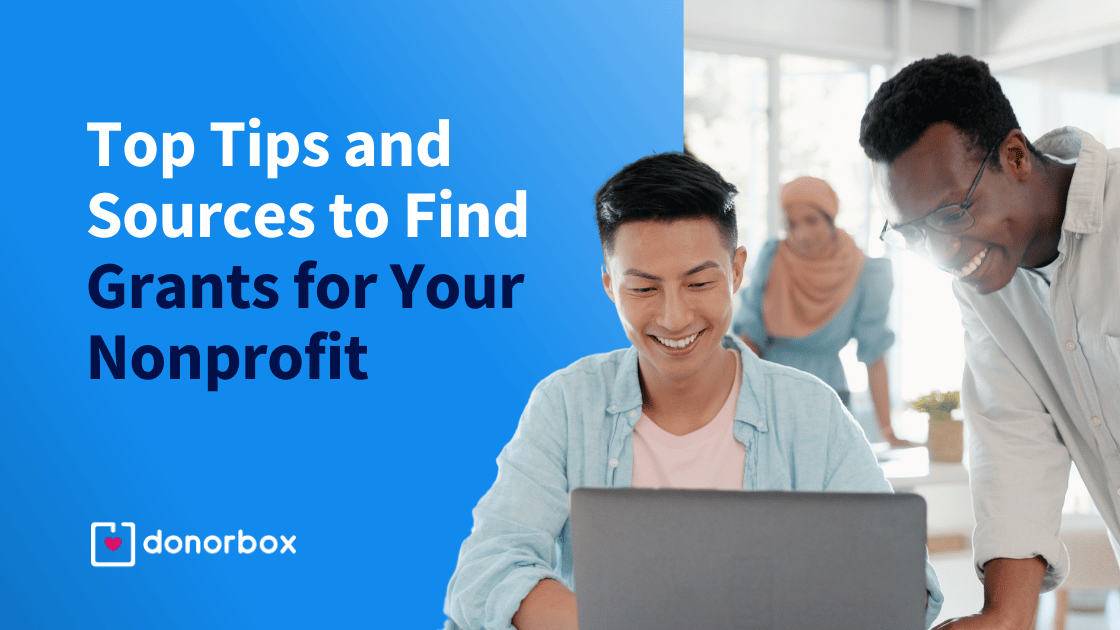
Top Tips and Sources to Find Grants for Your Nonprofit
Communicating with Grant Makers | Tips and Insights
Join the fundraising movement.
Subscribe to our e-newsletter to receive the latest blogs, news, and more in your inbox.

RELATED TOPICS
- What is Grant Writing?
- Grant Writing Process
- Grant Writing Templates
- Grant Writing Examples
- Grant Proposal Budget Template
- How to Write a Grant Proposal Cover Letter
- Grant Writing Books
- Grant Writer Role
- How to Become a Grant Writer
- Grant Writer Salary
- Grant Writer Resume
- Grant Writing Skills
- Grant Writer LinkedIn Profile
- Grant Writer Interview Questions
- Content Strategist
- How to Become a Content Strategist
- Content Strategist Skills
- Content Strategist Interview Questions
- Content Strategy Manager Overview
- Content Strategy in UX
- Content Strategist Portfolio Examples
- Content Design Overview
- Content Designer
- Content Designer Skills
- Content Design Books
- Technical Documentation
- Knowledge Base Documentation
- Product Documentation
- User Documentation
- Process Documentation
- Process Documentation Templates
- Good Documentation Practices
- HR Document Management Best Practices
- Software Documentation Examples
- How to Test Documentation Usability
- Document Control Overview
- Document Control Process
- Document Control Procedures
- Document Control Numbering
- Document Version Control
- Document Lifecycle Management
- Document Management Software Workflow
- Document Management Practices
- Github Document Management
- HR Document Management
- Confluence Document Management
- What is a Document Management System?
- Document Control Software
- Product Documentation Software
- HR Document Management Software
- Knowledge Base Software
- Internal Knowledge Base Software
- API Documentation Software Tools
- Knowledge Management Tools
- Document Management Software
- What is Software Documentation?
- How to Write Software Documentation
- How to Write API Documentation
- Document Manager
- Documentation Manager
- Documentation Specialist
- Document Control Manager Salary
- Business Writing Overview
- Business Writing Principles
- Best Business Writing Examples
- Best Business Writing Skills
- Best Business Writing Tips
- Types of Business Writing
- Best Business Writing Books
- Proposal Writing Overview
- How to Become a Proposal Writer
- Proposal Writer Role
- Proposal Writer Career Path
- RFP Proposal Writer
- Freelance Proposal Writer
- Remote Proposal Writer
- Government Proposal Writer
- Proposal Writer Salary
- Proposal Writer Job Description Example
- Proposal Writer Interview Questions
- How to Write a Proposal
- Proposal Writer LinkedIn Profile
- Business Proposal Examples
- UX Writing Overview
- Information Architecture
- Information Architecture vs Sitemap
- UX Writing Books
- UX Writing Examples
- UX Writer Overview
- Freelance UX Writer Overview
- UX Writer Career Path
- How to Become a UX Writer
- Google UX Writer
- UX Writer Interview Questions
- Google UX Writer Interview Questions
- UX Writer vs Copywriter
- UX Writer vs Technical Writer
- UX Writer Skills
- UX Writer Salary
- UX Writer Portfolio Examples
- UX Writer LinkedIn Profile
- UX Writer Cover Letter
- Technical Writing Overview
- Types of Technical Writing
- Technical Writing Examples
- Freelance Technical Writing
- Technical Writer Style Guide Examples
- Technical Writing Jobs
- Subject Matter Expert
- Document Development Lifecycle
- Darwin Information Typing Architecture
- Technical Writer Career Path
- How to Become a Technical Writer
- Technical Writer Education Requirements
- English Teacher to Technical Writer
- Software Engineer to Technical Writer
- Technical Writer Salary
- Technical Writer Interview Questions
- Google Technical Writer Interview Questions
- Technical Writer Resume
- Technical Writer Cover Letter
- Technical Writer LinkedIn Profile
- Technical Writer Portfolio
- Senior Technical Writer Salary
- Senior Technical Writer Job Description
- Knowledge Management Overview
- Knowledge Management System
- Knowledge Base Examples
- Knowledge Manager Overview
- Knowledge Manager Resume
- Knowledge Manager Skills
- Knowledge Manager Job Description
- Knowledge Manager Salary
- Knowledge Manager LinkedIn Profile
- Medical Writing Overview
- How to Become a Medical Writer
- Entry-Level Medical Writer
- Freelance Medical Writer
- Medical Writer Resume
- Medical Writer Interview Questions
- Medical Writer Salary
- Senior Medical Writer Salary
- Technical Writer Intern Do
- Entry-level Technical Writer
- Technical Writer
- Senior Technical Writer
- Technical Writer Editor
- Remote Technical Writer
- Freelance Technical Writer
- Software Technical Writer
- Pharmaceutical Technical Writer
- Google Technical Writer
- LinkedIn Technical Writer
- Apple Technical Writer
- Oracle Technical Writer
- Salesforce Technical Writer
- Amazon Technical Writer
- Technical Writing Certification Courses
- Certified Technical Writer
- UX Writer Certification
- Grant Writer Certification
- Proposal Writer Certification
- Business Writing Classes Online
- Business Writing Courses
- Grant Writing Classes Online
- Grant Writing Degree
Home › Writing › What is Grant Writing? › 10 Successful Grant Writing Examples that Win Grants
10 Successful Grant Writing Examples that Win Grants
Become a Certified Grant Writer
TABLE OF CONTENTS
What does it take to win a grant? This is the question that many people ask when they are trying to get funding for their project. There are many different factors, but one of the most important ones is the quality of your writing. If you have incredible writing skills and can create an interesting proposal, then it will be much easier to win grants.
Preparing a winning proposal may seem overwhelming at first; however, once you have reviewed a couple of examples, the process becomes much within reach. This list of 10 successful grant writing examples will help you to create a grant-worthy proposal in no time. In addition, each time you follow the pattern of these samples, you are one step closer to achieving your goal.
Grant Proposal Objectives
Zeroing in on the ‘why’ behind a grant approval has to be your top priority. If your grant proposal highlights the why clearly, it is already on its way to winning it.
It also ensures explaining your objectives to the grant funding body in a much more accurate and precise fashion.
Don’t underestimate the power of the first few sentences in your grant writing. If you want to get it right, make sure that your initial paragraphs are as compelling and engaging as possible.
This will help set up what is going to come in subsequent sections without becoming too wordy or burdensome.
Successful Grant Proposal Examples
By reviewing the examples below, you may give yourself the best chance at winning the grant for your project or organization.
Whether you are looking to reach out to a government agency or private organization, there are some basics to remember to ensure your grant proposal is a success.
Many organizations believe in giving back to the community; hence, your project could provide the stimulus for them to act. It is only a matter of time for the grant to be yours, provided the grant application meets all the writing guidelines.
Winning Grant Examples for Schools, Colleges, and Universities
If you seek funding for an educational project, you can look into the following examples without hesitation. Grant writing is an organized process with various sections to fill up before finally submitting and securing funding.
1. Kurzweil Educational Systems
Kurzweil Educational Systems, Inc. is a nonprofit organization that provides educational programs and services for people with disabilities or the elderly. This grant example is about how acquiring their software would help children with reading difficulties. That way, they will compete with their peers and not fall behind due to poor reading skills.
This sample grant writing example has everything you need for writing a worthwhile proposal. Alongside solid grant writing skills , your grant application has a high chance of acceptance if you follow the sample letter format, cover letter, and other portions given inside. It takes you through the whole grant writing process in an organized manner to seek funds from private foundations.
2. Salem Education Foundation
It provides grants and scholarships to teachers, principals, students, and organizations that share its vision for bettering public education.
History is a difficult subject to teach that’s why some schools want the funds for enrichment opportunities. That will in turn help them provide students with an excellent education. Salem’s example , in particular, takes you through a school’s effort for an enrichment grant.
3. National Language Resource Center
This proposal seeks funds for a National Language Resource Center to support foreign language instructors in K-12 and post-secondary institutions. It teaches a thing or two about professional grant writing.
George Washington University/Center of Applied Linguistics grant proposal sought funding to establish a National Language Resource Center : this would provide much-needed resources and services that were sorely lacking then.
Grant Samples for Youth Empowerment
Science is the future, and funding exists to support programs designed to help youth reach their potential. If that’s what you’re looking for, review these examples of research grants for young people in need.
4. William T. Grant Foundation
The William T. Grant Foundation provides fellowships for researchers focusing on improving the lives of kids living in America today. It does that via grant-based projects relevant to child welfare issues such as drug abuse prevention or delinquency treatment – all while providing a stipend so they can conduct an independent inquiry into any field related to children’s health and wellbeing.
5. Community Development Block Grant (CDBG)
The Youth Development Block Grant is one of the most competitive and sought-after CDBGs , so it’s important to write a proposal that captures its essence. This well-written effort by Family Service Association in Riverside can be used as inspiration for your own bid.
Before we dive deeper, if you’re interested in getting feedback from grant writing experts on a grant proposal that you write, then check out our grant writing certification course.
Individual and Family Sustenance Grant Applications
Below is a classic grant writing example to activate resources and acquire funding for underprivileged, handicapped, and senior citizens.
6. Kennett Area Senior Center
It sought funding to provide much-needed services and assistance for local seniors. A grant would help the Kennett Area Senior Center meet needs that currently exist, as well as fund programs designed to better serve clients in need – including those with limited resources or mobility challenges.
It says they are looking for a community foundation that wants to make a difference by providing funds for essentials like clothing and medical equipment. In that way, the senior citizens can afford these things on their budgets.
Grant Proposal Samples for Art Projects
Not only does a grant benefit a noble cause, but it also creates a feeling of satisfaction to work for the good of people. For artists with tight budgets, we have the following examples to address their documentation needs.
7. Imagine Fund
These are excerpts from compelling grant proposals submitted to the University of Minnesota’s Imagine Fund program. They are all for art-related endeavors, and they provide support so that the journey towards self-fulfillment moves on regardless of how small or big those desires may seem.
8. Individual Artist Growth Grant
The arts councils can be a great way to get funding for your project. That is because of the assistance they provide and their understanding of what artists need to thrive.
If you’re an artist seeking individual funding through one of those organizations, I recommend checking out this sample proposal from Region 2 Arts Council .
Grant Examples for Science-related Endeavors
Scientists seeking funding to conduct research is one of the most sought-after types of grant writing endeavors. Science-related projects are often difficult to fund through traditional methods because of their more complicated nature.
If you, as a scientist, seek financial aid from government agencies or private organizations, the following examples would help you build an effective case.
9. NIAID
The National Institute of Allergy and Infectious Disease (NIAID) is a top-of-the-line resource for those looking to secure funding for scientific research related to healthcare. The NIAID offers several examples of winning grant proposal applications that will help you get your foot in the door with all sorts of organizations that are willing to invest their money into making people healthy.
For professional, polite, and accurate proposal writing, it is advisable to hire the services of an experienced grant writer on either a full-time or freelance basis. Not only do they search for opportunities, but they grab them as soon as they appear with their command in writing.
10. Association of Zoos and Aquariums
This site is a goldmine for anyone looking to study up on funding grant proposals that actually worked. It includes many examples of highly successful projects ranging from animal health to their management, all the way through breeding and genetics. All are in pdf format, so save this link as your go-to resource when you need some major inspiration.
Aspects of Successful Grants
For a good chance at winning grant money, the applicant must be thorough in their research and find an organization that will fund their project type. Some of the aspects include:
- The preliminary proposal is covered with every detail of the project from start to finish
- Make sure your application fits each funding organization’s criteria before submission
- Analyze the prior grants in your field for ideas on what they are looking to fund
- Isolate the cause and provide innovative solutions to address it based upon your personal experience or expertise
- Be diligent in following the funding agency’s writing guidelines when creating their proposal and submit it by the deadline
- The proposal should explain every section of the project – particularly sections that describe the need for initiative, resources needed to complete this work, goals, and budget
- In response to any possible question about what they are proposing or how much money is involved with achieving these goals, there is an answer in detail within ‘The Narrative Section’
Once you keep the above characteristics in mind while writing your grant proposals, you are sure to come up with a convincing piece that is bound to bring success.
Anatomy of a Grant Proposal
In general, every grant proposal is made up of various sections. Therefore, it helps to be mindful of these portions while writing yours.
First Three Parts
They include: proposal summary, organization introduction, statement of the problem – these are all parts and components that you need to have in your grant proposal. They’re like a roadmap for it.
Fourth Part
Next are project objectives – what does this project aim to do? How is it going improve our community overall or make life easier for specific groups within society?
Then are the methods – how will we go about getting there?
Think long-term questions as well: future funding options (i.e., would funders be interested in continuing their support?)
Seventh and Eighth Parts
Lastly, talk about evaluation (does everyone love you?) and budget estimation.
Stick to Your Plan; Stay Focused on Requirements
When you stick to your plan and also follow your funder’s requirements to the letter, then you will probably receive the grant.
In some cases your idea may already exist from another organization’s work (like Habitat) so review their resources first before starting yours; they can offer tips and advice since it isn’t new territory for them like it would be for you.
Contacting experts in this field may help you on your way to grant acceptance.
Tips on How to Increase Your Chances of Winning a Grant
- Start early and be organized
- Do your research, read books , and make sure you know what’s been done about your topic in the past so that you don’t have to redo work that someone else may already have completed
- Have an actionable plan of where it will go once funded; this way they can see how their dollar will get invested if granted (don’t forget other funding sources, though)
- Even just pitching a rough idea with potential benefits has its merits too. It might not always result in being awarded grant money, but it could lead them on a path towards something better down the line, which would’ve never happened without, at least, putting forth some effort first
- Are they going to get the best bang for their buck? The funders need to know if their money is in good hands and the applicants know their way around funds management; you should have basic accounting skills to manage funds effectively
- Do they have a realistic timeline in place? Applicants should know how to manage their time and meet deadlines. The funder will want to know how much of an impact this project would make at what point in time – so better be honest about it from the get-go
- Is there any potential for fraud or misuse of funds? For example, will they use grant funding as personal expenses (e.g., building materials)? If yes, then you might want to think twice before applying for that particular grant. These issues should be addressed ASAP if discovered rather than waiting until after receiving grant money – it’ll only cause problems down the line when things start falling through
- Some applicants may use a grant proposal template as an organizational tool for their submission, in case there’s no specific format that the funder speaks of on their website
In the world of grant-seeking, locally funded grants outrank other options in terms of success rates. Local backers are more likely to support your cause because they too have a vested interest in how their community is shaped and what kind of businesses it attracts or retains.
Conclusion
The grant writing examples above show you the best ways to win grants. When applying for funding, it’s vital that your proposal meets each criterion and is in accordance with what they are looking to fund.
Grants are a great way to get your project funded, but it can be an uphill battle if you don’t know how to write one. The grant proposal process is in-depth and requires careful thought before writing the actual document. Now that you have this article, we hope you feel more confident about your ability to win a grant.
What type of grant funding are you looking for?
If you are new to grant writing and are looking to break-in, we recommend taking our Grant Writing Certification Course , where you will learn the fundamentals of being a grant writer, how to write proposals that win grants, and how to stand out as a grant writing candidate.
We offer a wide variety of programs and courses built on adaptive curriculum and led by leading industry experts.
- Work on projects in a collaborative setting
- Take advantage of our flexible plans and community
- Get access to experts, templates, and exclusive events
Become a Certified Technical Writer. Professionals finish the training with a full understanding of how to guide technical writer projects using documentation foundations, how to lead writing teams, and more.
Become a Certified UX Writer. You'll learn how to excel on the job with writing microcopy, content design, and creating conversation chatbots.
Become a Certified Grant Writer. In this course, we teach the fundamentals of grant writing, how to create great grant proposals, and how to stand out in the recruiting process to land grant writing jobs.
Please check your email for a confirmation message shortly.
Join 5000+ Technical Writers
Get our #1 industry rated weekly technical writing reads newsletter.
Your syllabus has been sent to your email
How to Start Grant Writing (+ Templates)
As a nonprofit, it’s a good idea to have a variety of revenue sources to fund your missions. One source can be grants. And if you’re looking for support for a specific project or position within your organization, you may have grant writing on the brain.
If you’re new to this process, you could have a lot of questions: How do I start grant writing? Is grant writing difficult? What does grant writing consist of?
Well, you’ve come to the right place! Below, we’ll cover everything you need to know about grant writing:
- Key essentials about grant writing
- Tips, tricks, and strategies
- A grant application template to get you started
In no time, you’ll be well on your way to writing your first grant!
Looking for templates you can use for your grant application? Download our FREE Grant Application Template bundle, which includes:
- A cover letter template
- A grant proposal template
Fill in the form below to get your copy!
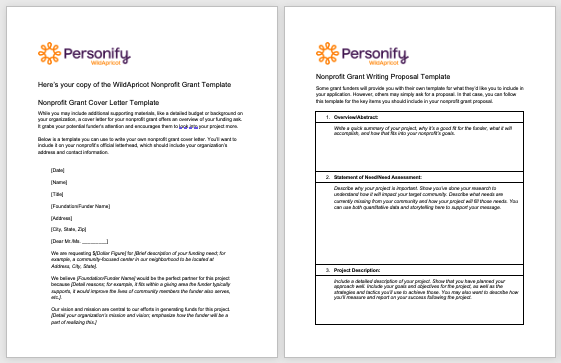
Download Your FREE Grant Application Template

What Is Grant Writing?
Grant writing is the process of writing a grant. But, you might wonder, what is a grant? A grant is a funding opportunity that foundations, businesses, and individuals make available to nonprofits to support their missions. It’s like a cash award for a great idea!
Grant writing is about building the case for a potential funder to support your work. Writing a grant involves putting together a proposal that tells the grantmaker the details of your project idea, how much money you need to fund it, and the impact it will make in the community.
You might also need to write a cover letter, but not all grant applications require one. We’ll dive into that more later in this article, so stay tuned!
Different Types of Nonprofit Grant Writing
You may find yourself writing for different types of grants. Some support specific project types, causes, or neighborhoods. Others may take a broader funding focus and accept proposals for any activity supporting the “public good.”
As you’re researching grants to apply for, you’ll want to be familiar with the three main types of nonprofit grants:
- Operating support or unrestricted funding : This kind of grant supports the day-to-day operations of your work. Unrestricted funding is the bread and butter of any nonprofit! If you snag this type of grant, it means the grantmaker trusts you to use the funding for whatever best supports your nonprofit rather than for specific line items or projects. These grant funds can be hard to find, since funders tend to like measuring impact through specific projects. But if you stumble across one, receiving it can make a huge difference to your nonprofit’s work!
- Capital support : Think of capital support as brick and mortar funding! These grants help your nonprofit purchase, renovate, or build needed facilities. They’re often for larger amounts. Because of that, they can require some extra details. Mainly, you’ll need to show the grantmaker that they can trust you to use it well!
- Program development grants or restricted funding : Have a specific project or staffing position to fund ? These grants are restricted to specific purposes, so are a great option for those needs. For example, you might write a grant to fund a new after-school art program. Based on the grantmaker’s restrictions, the grant might cover the costs of purchasing paint, paper, and other art supplies to use in the program, but not the rent for the space where you’re hosting it.
Why Is Applying for Grants Important? Is it Right for Me?
There are several reasons why grant writing is important. Grant writing can:
- Diversify your sources of revenue : Having a variety of revenue sources helps prevent financial emergencies . If one stream dries up, other sources are there to support you. Grants can give your nonprofit something to fall back on should, say, your individual donor contributions decrease during an economic downturn.
- Serve as a source of non-dues revenue : If you’re a membership organization, grant writing lets you secure funding outside of dues . You can use this funding to create better programming to recruit more members to your organization. Win, win!
- Help carry out what may seem like big dreams, programs, or initiatives : Sometimes a sizable grant set aside for a specific purpose is the resource you need to finally see a big project through. This is especially true if you’re already running a tight ship with your day-to-day expenses and don’t have the wiggle room to expand. Continuing with the art program example, a grant could help you buy a new kiln to start a ceramics program or fund an artist-in-residence program.
- Offer funding without a required payback period : Particularly for capital projects, grants can provide a solution to what you might otherwise have to finance through a loan. It definitely takes strain off your budget to avoid monthly loan payments!
- Increase the visibility of your organization : A lot of times, grantmakers will share press releases on which nonprofits they fund. They may also share your work on their social media and other marketing channels. This added bonus to the funding helps you reach a wider audience.
- Increase the credibility of your organization : Have you ever trusted a business or organization more because a peer recommended it? So many of us do—including grantmakers!. As you find success with your grant writing, you build your nonprofit’s credibility and it may become easier to secure additional funding in the future.
How do I know if applying for a grant is right for me?
While any nonprofit, big or small, can apply for a grant, it’s important to keep in mind that grants are best for long-term projects and goals. If you’re looking for immediate financial aid, a grant won’t be able to support you the way you need. This is because the application cycle can be long, and you don’t want to be waiting if you’re in a pinch!
Where can I look for nonprofit grants?
There are many places you can look for nonprofit grant writing opportunities. Here are a few to get you started:
- Google Alerts : Set up a Google Alert to receive a notification whenever new opportunities come up for your selected keywords. For example, if you’re funding an after school art program, you might set up alerts for “art program funding opportunity,” “after school art grants,” or “art grants for children.”
- Government-Based Grant Foundations : Your state, province, or country will usually have a database for grant writing opportunities. If you’re based in the United States, Grants.gov is a great place to start.
- Search Engines : You can find a lot of opportunities with some simple search engine research. Use keywords like the same ones you’ve used to set up Google Alerts.
- Your Existing Network : You may have current donors or members who serve on foundation boards or run their own philanthropic opportunities. Reach out to your supporters and ask them about grants they know of that could fit your nonprofit.
- Board Members : Board members are another great resource. See if the companies they work for offer grant writing opportunities. They may also have connections at other foundations or to friends in their network who offer grants to nonprofits like yours!
- Other Nonprofits : Need some ideas on who might fund you? Take a look at nonprofits similar to yours to see where they’re getting their funding.
- GrantWatch : GrantWatch is an online database that keeps current information on available grant writing opportunities within 60 different categories. It makes it easy to search for grants that could be good for your nonprofit.
- GuideStar : This online database provides information on nonprofits everywhere. It’s a great way to identify similar nonprofits to yours and see where they’re receiving their grants. You can also use it to identify foundations that provide grants and learn more about them and who they have funded in the past.
- Philanthropy News Digest : This free online service posts requests for proposals and grant notices for US-based nonprofit and grantmaking organizations. You can sign up for its newsletter and alerts and easily view the most recent opportunities by category and application deadline.
- Candid’s Regional Giving Dashboards : This online service offers overviews of regional funding opportunities across the United States. Not based in the US? Keep an eye on it, as it may expand to include global opportunities in the future as well.
Essential Elements of a Grant
Usually, the two core elements of a grant are the grant proposal and the grant cover letter . Below, we’ve covered the essential parts of each of these components.
Nonprofit Grant Writing Cover Letter
Depending on your grant application, the cover letter may not be necessary. However, if your grant writing involves a cover letter, it should typically be one page in length and written on your nonprofit’s official letterhead.
Your cover letter is an overview of your funding ask. It grabs your potential funder’s attention and makes them want to look into your project. Think of it like a friendly elevator pitch that lands you an interview to learn more!
Here’s what you’ll typically want to include in your cover letter:
- Brief project description
- Expected impact of the grant
- Requested grant support amount
- Outline of what is included in your attached proposal
- Mention of past grants you’ve received
- Your contact information
- Signature of your Executive Director or Development Director
Nonprofit Grant Writing Proposal
If your cover letter is what gets your foot in the door for an interview, we can think of the grant proposal as what gets you the job!
Your grant proposal builds the case for why the grantmaker should fund your project. It provides essential, persuasive details that give heft to anything already mentioned in your cover letter. Some grant funders will provide you with their own template for your application. Others may simply ask for a proposal. Be ready for both!
What is included may vary slightly by funder, but typically a proposal involves:
- Overview/Abstract
- Statement of Need/Need Assessment
- Project Description
- Budget & Budget Allocation
- Organizational Background
- Supporting Documents
Don’t forget to grab your FREE copy of The Nonprofit Grant Writing Cover Letter and Proposal Templates here.
Tips and Strategies for Grant Writing
Whether you decide to use a template or decide to free-style it, there are some key tips and strategies you want to keep in mind. Grant writing can feel intimidating, so it’s important you go in with the right information. This way, you’ll have the confidence that you’ll be writing a strong application.
In this section, we’ll cover key pointers for each stage of grant writing, including:
- How to prepare for grant writing
- Grant writing strategy and planning
- Writing your grant
How to Prepare for Grant Writing
Before you even start mapping out your grant application, there are a few steps to take to prepare. You’ll want to:
- Understand the audience, purpose, and expectations of your grant proposal : Read as much as you can to learn who will be reading your grant application and what they’re looking for. Know the purpose of the grant funding and the expectations the grantmaker will have if you receive the award. This can even help you find the right person to address your cover letter to, making it a lot more personal than using “Dear Foundation” as your salutation!
- Tailor your proposal for a specific objective : Even if you’re applying for unrestricted funds, aim to be detailed in your funding ask. Framing your grant writing around a specific objective builds the case for why you should get the funding and the type of impact it’ll have for your nonprofit.
- Understand the application’s guidelines and rules and follow them to a tee : Grantmakers typically have many high-quality applications to review. It can be hard for them to narrow it down to a winner! Avoid simple mistakes that could move you from the “yes” pile to the “no” pile, like getting the time zone wrong for the deadline or forgetting to include supplemental materials. You want your hard work to have the best chance possible! Have questions about the grant application’s rules? Reach out to the grant officer for clarification. Asking questions isn’t a weakness! It shows the grantmaker you pay attention and care enough to submit the best application possible.
- Be realistic : As you review a grant’s guidelines, rules, and purpose, ask yourself whether your project is truly the right fit for that grant. There’s no need to waste your time writing the grant or the grantmaker’s time reviewing the application if your project doesn’t align with the grant’s goals.
Grant Writing Strategy and Planning
Before writing your grant, know what you need to cover within it. Having these answers before you start writing will make sure you cover the core ideas needed in your grant application. And ultimately, this makes sure you give the funder all the information they need to be convinced to award you the funding!
As well, during this stage, you’ll want to strategize and plan accordingly to make sure you’ve given yourself enough time. Set out time to draft and refine your grant application before your submission is due.
As you get started, make sure you know your answers to the following:
- What is YOUR grant application timeline? This is one of the first and most important questions to ask yourself. Know when grant application periods open and close. Consider whether you have one or multiple grants to write during that period. Then, create a timeline for yourself so you have ample time to prepare your application with minimal stress and to not miss a deadline!
- Why are you asking for the grant? From the beginning to the end of your grant writing process, focus on this question and build it into your entire narrative. Basically, you want to clearly know your need and how to convey it.
- What will the impact and benefits be? On top of communicating what your needs are, you should be able to clearly state how this grant will address them. Help your funder envision the future they will help you create!
- What will be your plan of action once you get the grant? Be prepared to start your project as soon as you receive the grant. Having a timeline for when different events and activities will occur demonstrates that you have an actionable plan to use the grant in a timely and effective manner.
- What is your financial budget and plan for the funding received? You should be prepared with a detailed budget for your project. Rather than asking for a lump sum of money, be able to explain the different pieces that go into creating that total. Using the after-school art program example, you’ll want to share how much funding will go toward paint, brushes, paper, staff time, marketing , and rent.
Writing Your Grant
As you actually start writing your grant, there are some tips that can help strengthen your application. To write a successful grant application:
- Be specific : Show that you’ve put thought and care into your funding proposal by being specific. For example, rather than saying you want to fund art opportunities for children, share how you will create those opportunities. You will begin an after school art program for children ages 5 to 10 in New York City that will employ three local artists who specialize in painting, collaging, and ceramics.
- Be concise : While you want to be specific, you also want to be concise. Don’t make the funder search for the most relevant information in your grant application. Make every sentence count.
- Avoid redundancy and repetition : One way to tighten up your application is to review it for repetition. Have you already explained something clearly in an earlier part of your application? No need to say the same thing again! If you’re building on it in a way that’s crucial to your application, keep it short and simple by adding a phrase like “as stated earlier”.
- Make a clear ask : Don’t be shy about making your ask! Clearly state your need. For example: We are asking for a $5,000 donation to support an after-school art program. You can also use bullet points to draw attention to your ask and make it easy to understand.
- Lead with your core idea : Start with your clear objective for the grant proposal and then make sure everything else you write links back to that core idea. Think of it as you would the thesis for an essay.
- Demonstrate your past successes : When relevant, feel free to brag on your organization’s past successes with grants a bit! Mention others you’ve received and how you’ve put them to use. This shows the grantmaker that in the past, others have seen promise in your projects or mission. It also shows you’ve been able to use that money to make a positive difference. Funders may be more likely to give to an organization that already has experience managing grant funds.
Start Grant Writing With Smart Preparation and Strategy
We hope you found this guide to grant writing helpful! Yes, getting started with grant writing can feel like a lot, but with some simple preparation and strategy, you can take the process step by step for a successful submission and award!
Want to keep up to date with other nonprofit tips? Make sure to check out other articles on our blog !
And if you’re looking for additional ways to diversify your nonprofit funding and sources of income, check out our resource How to Write the Perfect Donation Letter (+ Examples & Template) .
Related Organizational Management Articles

30 Free Nonprofit Webinars for July 2024
Nonprofit Succession Planning: A Step-by-Step Guide

Strategic Planning for Nonprofits

The Membership Growth Report:
Benchmarks & insights for growing revenue and constituents.
How to write a winning grant proposal
- Stephen Robertson (he/him)
- February 7, 2023

Writing a proposal for a project grant can feel like a daunting task, but with the right guidance, it doesn’t need to be a bewildering endeavor. Like climbing a mountain, it helps to have a path to follow to reach its summit, or in this case, a map of sorts to guide you to your desired destination—a compelling proposal that unlocks funding to advance your mission-driven work. In this blog, we will share the key elements of a typical project proposal and best practices for how to approach drafting each section to help you secure the grant you seek.
Key elements of a grant proposal
Executive summary .
Often, your executive summary will be the first spot funders look to decide if they want to continue reading the entire proposal. Although an executive summary is typically included at the beginning of your final grant proposal, it’s best to tackle writing this section last given its importance. Your executive summary provides a snapshot of your overall proposal and often includes:
- The problem or need you’re seeking to address, or your proposal’s need statement.
- A brief description of the project, including your goals and objectives.
- Information about your organization and its experience addressing your proposal’s key need or problem.
- How much money that you are asking the funder to consider granting you.
Need statement
Your need statement is where you’ll convince your prospective funder of the urgency of addressing your proposed problem or need in one page or less. In this section, do your best to succinctly peak the prospective funder’s interest in your specific project by incorporating data-driven insights and human stories that bring your need to life. Once completed, it should seek to answer these questions: If your project is funded, how will it be better and for whom, and why should this particular funder care?
Given you are competing with other applicants, don’t forget to align your need statement with your funder’s objectives. After all, the best way to get a funder to care about your solution is to explain how it overlaps with the focus areas of their foundation.
Project description
Your project description should delve deep into the specific activities of your project and how they will benefit your target demographic. This section should include a detailed outline that explains exactly how, when, and by whom the project will be executed and completed. An additional tip for success: Consider emphasizing any collaborations and partnerships with other organizations on similar efforts to boost your credibility.
Project goals and objectives
When it comes to grant proposals, it is important to understand the difference between goals and objectives. Goals are typically broad, general statements of need, while objectives are specific, measurable, attainable, relevant and timebound ( S.M.A.R.T. ). It is also important to discuss whether the issue is currently being addressed, and how your solution or organization will be better than the status quo.
Organizational information
In your grant proposal, you should provide more information about your organization. This is where you can showcase your mission, organizational history, as well as the impacts of your other programs and/or services. In this section, you can highlight your nonprofit’s accomplishments, staff’s expertise, and track record of success in your community. When approaching writing this section of your proposal, aim to include details that help the funder see why your organization is best suited to solve the problem or need at hand, if awarded the grant. If you are wondering how to get started, consider showcasing the information in your Candid nonprofit profile .
Project budget
Here you’ll get down to the dollars and cents required to address your need or problem. Your project budget will ideally mirror the associated direct and indirect costs of the items outlined in your project description, such as staffing, rent, supplies, promotion, and the like. In this section, you will also want to detail the revenue sources you are planning to use to fund the project. Another tip for success: Be sure to explain how you will continue to support and sustain the project—beyond the specific grant you are seeking. For a more in-depth understanding of how to create a project budget, be sure to check out this free training on the topic.
With this roadmap to guide your efforts, you’re ready to begin writing a successful grant proposal. If you’re interested in some additional tips and pointers, be sure to also consider the following best practices:
- Start with an outline to help you better prepare, organize your thoughts, and guide your efforts.
- Do your research to understand who you are approaching and what their priorities are by exploring the information on their website, the types of nonprofits and issue areas they fund using Foundation Directory , and the like.
- Focus on the funder’s objectives and use your powers of persuasion to make them understand that your approach is in their best interest.
- Always follow the funder’s guidelines and keep your language clear and concise.
- Tap into the power of your colleagues’ feedback, and don’t forget to revise and edit your proposal before submitting it.
To learn even more, visit learning.candid.org where you can find free resources and sample documents or join us for our three-week, in-depth Proposal Writing Bootcamp to help you craft a winning grant proposal.
- Tips & Training
- Budgets and financials
- Fundraising, giving, and donations
- Nonprofit and charity work
About the author

Stephen lives to create order out of chaos by developing people-centered systems and training programs that maximize efficiency and impact. Coming from four-generations working in the social sector, Stephen experienced in university the positive power of business to shape people’s lives – empowering them to develop a growth mindset and providing them with the tools and social support to lift themselves out of poverty.
Stephen started his career at Enactus, a global network of students, academicians, and business executives committed to using business acumen for societal progress. In his roles as Regional Program Manager and Director of United States Programs, Stephen created direct training and train-the-trainer programs implemented across 500+ universities with over 18,000 students involved in over 3,000 social impact projects and entrepreneurial ventures. Directing the development of the organization’s first online training center providing internal and external constituents with on-demand training modules and resources, Stephen delivered capacity building workshops for staff and external constituents across Africa, Asia, Europe, and Central America.
At Candid, Stephen ideates on ways to better serve the network of over 500+ partner organizations providing tools and resources to nonprofits through the creation of efficient internal systems and processes related to territory management. In addition, Stephen assists in an annual flagship research effort to create financial snapshots of the field and works with individual community foundations to benchmark their performance against peers and perform deep analyses of their own operating models.
Insatiably curious, Stephen spends his free time traveling, specifically to places in nature that inspire wonder or cultures vastly different from his own to expand his mind, listening to science and psychology podcasts, and gardening. He also writes and produces original music, merging his love of R&B/Gospel music with electronic music, fusing global sounds from his travel across six continents and 23 countries.
Stephen holds a B.B.A in Business Management with a minor in Theology and Leadership Studies from Evangel University.
Leave a comment Cancel reply
Post comment
This site uses Akismet to reduce spam. Learn how your comment data is processed .
Edwin Ogoma says:
I feel inspired
Joash ndege says:
Hi lam happy for the information
Kyoko Uchida says:
https://learning.candid.org/resources/sample-documents/
Allan mailon says:
Can i have a sample copy of the grant proposal. Am planning to open an initiative program which will support vulnerable children to access good education,healthy and better living.
Alexander W. Wesley says:
Thanks for your programs! I am a beneficiary of your training programs, I earned two certificates from your institution. I am excited about your programs! Every time I accessed your website there was something new to learn. This lesson has inspired me very well!
Kate, Digital Communications Manager, Candid says:
Hi Tumi, we tested the documents and all of them seem to be downloading correctly. Was there a specific document that you had trouble downloading?
Tumi Mabena says:
Thank you for such great content. I tried to download a number of sample proposals but they seem to be corrupted from your end. Please could you look into it. I'm in South Africa.
We have free examples of grant proposals in our Sample Documents page .

Mr. KAKOZI AMISSI JEAN MARIE says:
I am happy for the details provided
I would be the happiest to see samples of grant proposal if you dont mind
Owino says:
Quite educative, thanks
Keshini Wijegoonaratna says:
The strategies and key areas indicated are noted. Thank You
Ntahli Griffiths says:
We have a community based organization which like also to empower vulnerable groups of women in community and would like to write a winning proposal.
Christopher L. Lunguya says:
Very important and useful information, Well done.I cannot express my thanks to Candid
Justine says:
Very important information, thank you so much
Nestor Ogarro says:
Nice and credible
Very good and reliable
Miatta T. Sawyer Davis says:
That depends a little on what information you want! Head to our Contact Us page for information on how to reach us for different products or for educational resources.
R. White says:
How can I reach you
Louis Mwewa says:
I have the article very interesting and educative.
We have lots of resources to help you write a grant proposal! Get started here: How do I write a grant proposal?
Gerard Foisape says:
Can I know how to write a proposal
Charles says:
Help me how can writte a propsol
Related posts
How to Use Storytelling for Nonprofits to Get More Grants
By Tracy Kaufman (she/her)
April 5, 2019
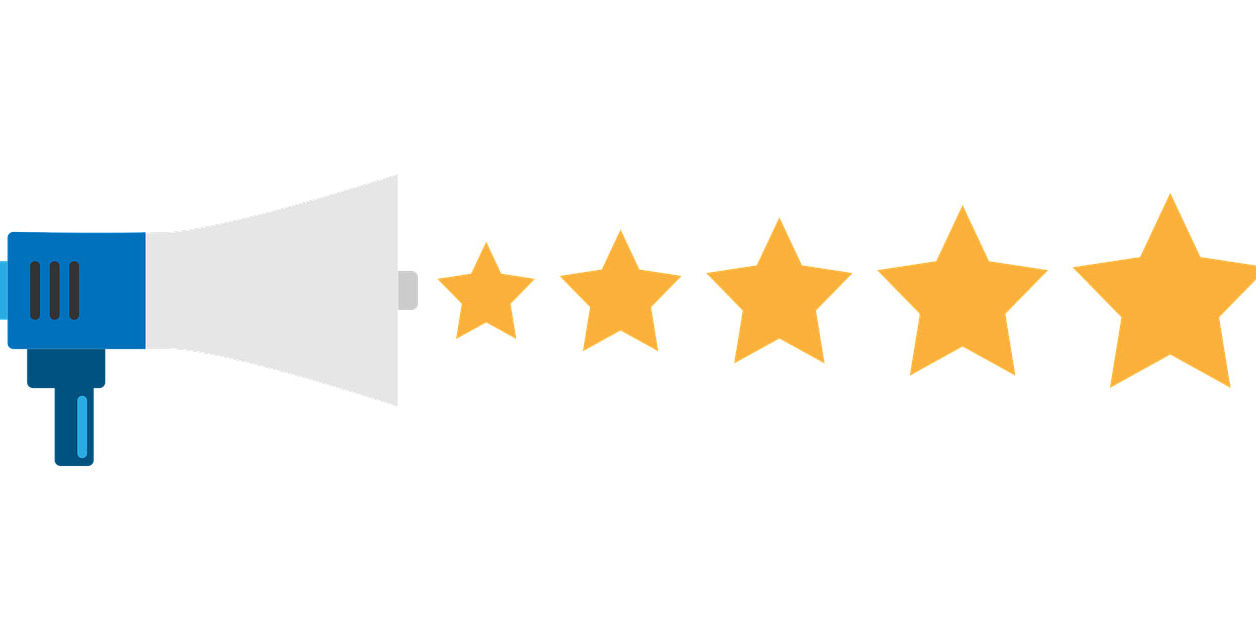
Top 5 Tips for Successful Grant Proposals
By Caroline Herbert and Sarah Jo Neubauer (she/her)
October 30, 2014

The basics of building a nonprofit budget
By Melissa Pulis (she/her)
June 9, 2022
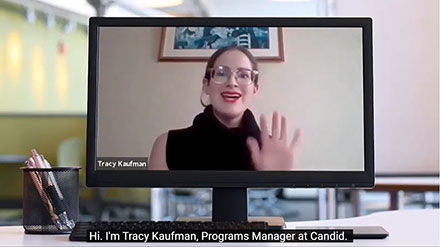
What do funders look for in grant proposal budgets?
May 18, 2021
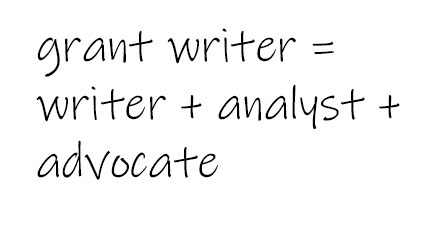
What it takes to secure a major private grant
By Susan Schaefer (she/her)
February 6, 2020

How to run an experiment on your nonprofit’s social media
Learn how to run a social media experiment with expertise guidance to help you better reach, engage, and inspire action among your nonprofit’s donors, supporters, and online community.
By Kate Meyers Emery, Ph.D. (she/her)
July 1, 2024

Presentations made painless
- Get Premium
Grants 101: A Guide to Successful Grant Writing for Nonprofits
Grant writing can be a daunting task for any nonprofit organization, but with the right resources and knowledge, it can be a successful and rewarding endeavor. In this blog post, we'll explore the best practices for grant writing and effective nonprofit email marketing. We'll cover topics such as the key components of a grant application, how to research potential grant opportunities, and how to craft a compelling grant proposal. We'll also discuss the value of email marketing in helping to secure grant funding and the best practices you should keep in mind when creating an email campaign. By the end of this post, you'll have all the knowledge you need to start writing successful grant proposals and creating effective email marketing campaigns.
Introduction to Grants
Grants are a great way for nonprofits to secure additional funds for their organization or project. This blog post will provide an overview of the grant writing process, from identifying funding needs to submitting your grant request. We'll also provide some tips for writing an effective grant request and answer some common questions about grant writing.
Identifying Your Funding Needs
The first step in the grant writing process is to identify your organization's funding needs. Think about what projects or programs your organization is looking to expand or launch. What specific expenses are associated with these projects or programs? Once you've identified your funding needs, you can start researching grant opportunities that might be able to help you meet these needs.
Researching Grant Opportunities
The next step is to start researching grant opportunities. Look for grants that are specifically tailored to your organization's needs. Consider the amount of money you need, the types of expenses you need to cover, and any other criteria that might be relevant.
Crafting a Winning Grant Proposal
Once you've identified a potential grant opportunity, it's time to craft a winning grant proposal. Consider the requirements of the grant, the goals of the organization, and the needs of the community you are serving. Make sure to provide a clear and compelling case for why your organization deserves the grant.
Tips for Writing an Effective Grant Request
When writing a grant request, make sure to keep your language clear and concise. Avoid jargon and technical language, and focus on the benefits your organization will bring to the community. Make sure to include all of the necessary information that is outlined in the grant requirements.
Finalizing Your Grant Request
Before submitting your grant request, take the time to review it and make sure that it is complete and accurate. Make sure to proofread your grant request for any spelling or grammar errors. Once you are satisfied with your grant request, you can move on to the next step.
Submitting Your Grant Request
Once you have finalized your grant request, it's time to submit it. Follow the instructions outlined in the grant requirements and make sure to submit your request on time.
Post-Submission Steps
After submitting your grant request, take the time to follow up with the grantor. Make sure to thank them for their time and attention, and let them know that you are available to answer any questions they may have.
Common Questions about Grant Writing
Grant writing can be a complicated process. Here are some common questions about grant writing:
- What should I include in my grant proposal?
- How do I know if I am eligible for a grant?
- How do I write a compelling grant request?
Resources for Nonprofits Seeking Grants
There are a number of resources available for nonprofits seeking grants. Here are some helpful resources:
- Grant Writing Tips for Nonprofits
- Grant Writing Resources for Nonprofits
- Grant Writing Tips and Resources Below we answer common questions entrepreneurs have about these topics.
I. Introduction to Grants
What is a grant.
A grant is a financial award given by a government or private institution to help you with a specific project or need. Grants are often given based on need, merit, or a combination of both.
What types of grants are available?
Entrepreneurs should think about answering this question by first researching what types of grants are available to their particular industry or niche. Afterward, entrepreneurs can then determine how to best position themselves as a qualified applicant for these types of grants and whether or not it would be worth their time to apply for them.
II. Identifying Your Funding Needs
What are the estimated costs associated with your project.
You should be as specific as possible when answering this question, so that the person asking can have a better understanding of what they're getting into. Be as honest as you can, and keep in mind that detail is what helps people make informed decisions. This is an excellent opportunity to show off your organizational skills, so be prepared with a list of everything you think will be required for your project, down to the smallest of details.
What potential sources of funding are available to you?
If you have a community of customers, friends, or family who support your business, you can consider crowdfunding. GoFundMe, Kickstarter, and Patreon are just a few of the many options for these types of campaigns. If you're a new business owner, you may not be able to meet the requirements to get a loan from a traditional bank, but that doesn't mean there aren't options. There are many online peer-to-peer lending platforms that are designed to help small businesses finance projects. These include Lending Club, Upstart, and Patch of Land.
III. Researching Grant Opportunities
What resources are available to help with researching grant opportunities.
I would advise that the best way to find grant opportunities is to reach out to as many people as possible, talk to other business owners, other sources, and spend time browsing the internet. If you need help understanding the process, reach out to your local Small Business Administration or other non-profit orgs in your area. They may be able to help you find the right grants for your business.
Is there a step-by-step guide to the grant research process?
As an entrepreneur, the grant research process is a long one, and it can be overwhelming. The first step should be to find a grant that you are eligible for. You need to know what your niche is and find a grant that will help you fund your business. You need to be prepared to write a solid business plan to present to the grant committee. Finally, you need to have your finances in order to be able to deliver what you have promised.
IV. Crafting a Winning Grant Proposal
What tips and strategies can you offer for writing a successful grant proposal.
The grant is offered to accomplish a specific goal. So, while writing a grant proposal, you must make sure that your idea is in line with the goals of the grant. The grant is generally awarded for a specific purpose, so you need to make sure that your idea is in line with the goal of the grant. You must be able to show how your idea fits into the grant's purpose and how it will help achieve the grant's goals.
What resources are available to help applicants craft a competitive application?
The only way to answer the question of what resources are available to help applicants craft a competitive application is to do your research. This can mean going through the job posting, looking at the company website, and even reaching out to the company HR department. You need to see if there is a specific format they are asking applicants to use and which questions are being asked. Make sure your resume is formatted appropriately and that you've addressed the questions in a clear and concise manner.
V. Tips for Writing an Effective Grant Request
What types of information or evidence should be included in the grant request to make it as persuasive as possible.
When presenting your grant application, you want to be sure to include a strong call to action in your proposal. State what you will accomplish with the grant, and what you will do if you are not awarded the grant. This will help to make your grant application as persuasive as possible because you are showing what you will do with the grant and what you will do if you do not receive the grant.
How can you ensure that the grant proposal is tailored to the specific needs of the grant provider?
At the end of the day, when you are trying to appeal to a fund provider, it's all about your story. You need to highlight your achievements and how you have made a difference in your community or field of expertise. You need to make it clear why this particular fund provider should be supporting your cause.
VI. Finalizing Your Grant Request
Have you included all supporting documentation with the grant request.
As an entrepreneur, you should think about the supporting documentation that you have included with your grant request. This is important to include because it helps the organization reviewing your application to better understand your goals and how you plan to achieve them. It also gives them an opportunity to get to know you and your business better.
Are you confident that the grant request meets all of the requirements outlined by the funding organization?
The best thing to focus on here is how you can add value to the organization. Donors don't just want to help people; they want to help people who can help themselves. If you can show that your project will increase the chances of success for future students or employees, you're more likely to get the money you're asking for.
VII. Submitting Your Grant Request
How should i submit my grant request.
An entrepreneur should follow the instructions provided in the call for proposals, whether it's an essay or video submission. Following instructions helps the reviewer to see that you are organized and that the request is well-researched. You want to show that you're ready to receive funding.
What documents must I include in my grant request?
When it comes to writing a grant request, it's important to be as detailed as possible. While you may think that writing in a clear and concise manner will suffice, you'll find that the judges of your grant application will appreciate any added details. For example, if you're writing about a project that you want to carry out, share every possible detail of how you want to carry it out. Describe the process in detail so that the judges can see how your idea will play out. This will also help them visualize your project, which will increase your chances of being awarded the grant.
VIII. Post-Submission Steps
How will i be notified of the status of my submission.
Stressing the value of your services is a great way to answer the question, How will I be notified of the status of my submission? By highlighting the benefits of working with you, you're also showing potential clients that you're more than just a service, but an integral part of their success.
For example, you could say, "You'll receive an email confirming the publication of your article. You can also sign up for our monthly newsletter, which notifies you of any updates to your articles." By stating that you provide additional services, you're showing clients that you're more than just a one-and-done service.
What should I do if I have any follow-up questions?
For an entrepreneur to answer the question, What should I do if I have any follow-up questions?" they should consider addressing the following:
First, explain that your company has a dedicated customer service team that can assist with any further questions or concerns. Additionally, provide the customer with the contact information for this team, so that they can reach out if they have any further questions or concerns.
IX. Common Questions about Grant Writing
What resources should i consult for grant writing advice.
Grant writing is a complex process, but the first step is always the same, research! Before you even think about writing a grant proposal, you should conduct a thorough investigation into the types of grants that are available, what criteria each grant provider uses to evaluate proposals, and which grants would be a good fit for your organization. There are lots of great resources available online that can help you with this, but nothing replaces hands-on experience! Talk to people who have successfully won grants for similar organizations, and learn about the steps they took to achieve success. Once you have a thorough understanding of the process, you'll be ready to start crafting your own grant writing strategy.
How should I structure my grant proposal?
Always answer the question in a clear way and don't ramble on. Organize your thoughts and write your answer in a way that's easy for the reader to understand. If you're submitting a grant proposal, you probably have some experience to draw from. For example, if you've received grants before, you can draw from your experience to provide insight in your answer.
X. Resources for Nonprofits Seeking Grants
What tips or advice do you have for nonprofits seeking grants.
In my experience, nonprofit organizations seeking grants should always be transparent in answering this question. The nonprofit sector is highly competitive, and you want to do everything in your power to differentiate yourself from the competition. One way to do this is to be clear about what you want to accomplish and how the grant will help you achieve that goal.
Are there any online resources available to help nonprofits with the grant application process?
I'd say that if you're an entrepreneur looking to answer this question, you should think about answering it by recommending a few of the best ones. The best resources will have a good reputation, meaning people will have left reviews, ratings, and comments about them. This will give your answer credibility, which is important when you're trying to help others.
Grant writing can be a daunting task, but it can be a rewarding experience for any nonprofit organization. Taking the time to properly research, plan, and craft a winning grant proposal can be the difference between success and failure. This blog post provided a comprehensive overview of the grant writing process, from identifying your funding needs to post-submission steps. We hope that you have a better understanding of the process and the resources available to help you craft an effective grant request. With the right preparation and support, you can be on your way to securing the funds you need to achieve your organization's mission.
Want to create a presentation now?
Instantly Create A Deck
Let PitchGrade do this for me
Hassle Free
We will create your text and designs for you. Sit back and relax while we do the work.
Explore More Content
- Privacy Policy
- Terms of Service
© 2023 Pitchgrade

The Ultimate Guide to Writing a Standout Grant Narrative
Your grant narrative helps reviewers and funders understand who you are and how you will be successful at meeting the goals they set in the funding announcement. Your narrative helps convey your ability to complete the project or reach the outcomes. The narrative section is where you join ideas together like the needs you documented, the gaps in services you identified, and the solutions you are creating to get better outcomes.
In the world of grant writing, crafting a compelling narrative is key to capturing the attention of funders and securing the funding your project deserves. A strong narrative has the power to engage readers, convey the significance of your project, and inspire funders to invest in your cause. In this blog post, we will explore essential tips and strategies for crafting a compelling narrative that will elevate your grant writing to new heights.
How to Write A Grant Narrative
Crafting a high-scoring grant application requires careful attention to several key elements that showcase your organization’s strengths and align with the funder’s priorities. A strong application not only increases your chances of success but also demonstrates your organization’s competence and capacity to deliver on its promises.
For a reviewer, a high-scoring grant application is one that:
- Has no or few fatal flaws
- Meets the requirements
- Provides proof of eligibility
- Has a strong implementation plan
- Addresses the criteria directly
From a reviewer’s perspective, reading a bad narrative takes more time and energy because you have to hunt for answers that should be readily available. If you follow the tips in this blog post you will make your reviewers happy by developing a narrative that they’ll love.
10 Tips for a Stronger Grant Narrative
To set your application apart and make it stand out in a competitive grant competition use these techniques when you develop your grant narrative:
- Understand Your Audience: Take time to study your audience, the grant reviewers. Reviewers expect your application to strategically address all evaluation criteria outlined by the funder. Each section of your proposal should be designed to score maximum points with reviewers, ensuring that every aspect is well-thought-out and presented clearly.
- Clearly Define the Problem or Need: Articulate the problem or need your project aims to address in a concise and compelling manner. Clearly highlight the significance and urgency of the issue, painting a vivid picture of the current needs and gaps.
- Tell a Story: Storytelling is a powerful tool in grant writing. Take the reviewers on a journey by sharing real-life stories, personal experiences, or case studies that demonstrate the impact of your work. Connect emotionally with the readers, allowing them to empathize with the individuals or communities your project seeks to serve. Make your narrative relatable and memorable. This technique is highly dependent on your audience as some grants (such as federal grants) may not allow space for long vignettes or stories.
- Showcase Your Organization’s Expertise and Track Record: Highlight your organization’s accomplishments, expertise, and track record of success. Discuss past projects, partnerships, and the positive outcomes achieved. Provide evidence of your organization’s ability to effectively implement and manage projects, instilling confidence in the reviewers about your project’s feasibility and potential for success. Your ability to complete the work required by the grant is critical to get funded.
- Clearly Outline Your Goals and Objectives: Clearly define your project’s goals and objectives in a concise and measurable manner. Describe the specific outcomes and impact you aim to achieve through your project. Many grants require you to use the SMART (Specific, Measurable, Achievable, Relevant, Time-bound) goals format to demonstrate the feasibility of your project plan.
- Build Strong Partnerships: Highlight any collaborations or partnerships that strengthen your project’s credibility and potential for success. Discuss how you plan to engage stakeholders, leverage community resources, or collaborate with other organizations to achieve your goals.
- Avoid Technical Flaws: Thoroughly review and edit your application to ensure there are no technical errors, inconsistencies, or omissions. A well-structured, error-free proposal enhances your credibility and professionalism. Technical flaws are anything a reviewer might see as a mistake that could lead to poor implementation or a part of your proposal that is not well-developed. Since reviewers are likely experts in your field, it is important that you have your experts review your application before submission as well.
- Emphasize Sustainability and Long-Term Impact: Funders are interested in projects that have a lasting impact beyond the grant period. Clearly articulate how your project will be sustainable in the long run and how it will continue to benefit the community even after the grant funding ends. The 8 Dimensions of Sustainability model can help you describe your sustainability plan and articulate the steps you will take to ensure lasting success.
- Use Clear and Convincing Language: Craft your narrative using clear, concise, and persuasive language. Avoid jargon and technical terms that may confuse the reader. Edit and proofread your narrative meticulously to ensure clarity and coherence.
- Organize Your Information with Headers: Using formatting to draw attention to statements and transition between ideas will help reviewers scan your narrative. The easier it is for them to see you have addressed the criteria the easier it is to award you points for doing so. Use clear headers, bold, charts, and italics to format information that is important. Be sure to follow the guidelines for formatting given in the funding announcement.

Frequently Asked Questions About Grant Writing
Beyond these tips, you might have a few questions about writing a winning grant application and how to structure your narrative. Let’s answer a few frequently asked questions about grant writing.
How do you write a compelling grant?
Crafting a compelling grant begins with a deep understanding of your project’s mission, goals, and target audience. Your grant narrative should give your audience all the information they need to want to give you money.
Start by clearly defining the problem your project aims to address and the solutions you propose. Use data, statistics, and first-hand information from the population you serve to back your claims and demonstrate the significance of your work. Showcase your organization’s expertise and track record of successful initiatives to build trust and credibility with funders. Funders want to know that you’re ready, able, and willing to do the work required to get grant funding.
Consider the funder’s priorities and align your narrative with their objectives. Research the funder’s previous grant awards to gain insights into their preferences and areas of focus.
Tailoring your narrative to fit the funder’s interests increases the relevance and appeal of your proposal. Never submit the exact same application for multiple grant competitions. Rather, have a ready-to-use grant template like our Notion Grant Writing Template that you can tailor for every specific grant competition you apply to.
How long should a narrative be for a grant?
Grant narratives typically range from 3 to 10 pages, but it’s essential to prioritize quality over quantity.
The length of a grant narrative can vary depending on the funder’s guidelines and the complexity of your project. However, as a general rule, aim for a concise and focused narrative that covers all essential aspects without overwhelming the reader.
Convey your ideas effectively using plain language writing techniques or clear and concise language. Avoid jargon and technical terms that may be unfamiliar to the reader. Instead, focus on presenting a coherent and engaging narrative that demonstrates the potential impact of your project.
What is a narrative in a grant application?
In a grant application, the narrative is the section that provides a detailed description of your project, its objectives, methods, and expected outcomes. This section is your opportunity to tell the story of your project, compellingly conveying its significance and potential impact.
The point of your grant narrative is to communicate what you plan to accomplish, how you will implement your project, and convey your experience with projects of similar scope. Remember, grant reviewers give more points for strong narratives that reply to all the criteria, including the requirements, and demonstrate you are capable of getting to outcomes.
What is the biggest challenge in grant writing?
One of the most significant challenges is striking the right balance between showcasing the significance of your project and adhering to the word or page limits set by funders. Condensing a complex project into a concise narrative without compromising its integrity requires careful planning and precise writing.
When crafting your grant narrative, think about the things that must be in your application or program to successfully reach your outcomes. Those items should be the first areas you focus on when crafting the sections of your grant application and grant narrative.
Once you have drafted a section, thoroughly edit your narrative to omit miscellaneous information and words. Do not leave editing to the last minute, it is important to edit as you go so your final product is as close to final as possible.
What are typical grant narrative sections?
A well-crafted narrative should address the following key components:
- Project Overview: Introduce your project and its goals. Clearly state the problem your project addresses and the beneficiaries it aims to serve.
- Objectives and Activities: Outline the specific objectives of your project and the activities you plan to implement to achieve them. Be specific and detail-oriented, providing a clear roadmap of how you will execute your project.
- Methodology and Approach: Describe your project’s methodology and approach. Explain the rationale behind your chosen methods and how they align with best practices and evidence-based strategies.
- Anticipated Outcomes: Clearly articulate the expected outcomes of your project. Use data and evidence to support your projections and show the potential impact of your work.
- Evaluation and Sustainability: Demonstrate how you will evaluate the success of your project and measure its impact. Discuss your plan for sustainability beyond the grant period, showcasing your organization’s capacity to maintain the project’s effectiveness.
- Budget: Show how your funding will be used by giving a clear picture of what you will use the money for. Ensure that only allowable expenses are included in your budget.
How can my grant proposal stand out from the competition?
Each funder brings their distinct set of expectations and preferences to the table, making ongoing research and adaptability crucial in ensuring your proposal resonates deeply with their mission. To create a grant proposal that truly shines amidst a landscape of competitive submissions, dedicate your efforts to crafting a narrative that exudes clarity, authenticity, and resonance.
Showcase not only your project’s potential impact but also your dedication to sustainable success . Infuse your narrative with compelling storytelling that ignites the reader’s interest and empathy. By sharing your passion, expertise, and commitment, you can elevate your proposal from a mere submission to a captivating journey that captivates and compels funders to invest in your vision.
Grant reviewers enjoy seeing an organization shine at the work it excels at. The more your narrative can show the fit between what your population of focus needs, what you provide, and the outcomes the funder desires the higher your grant application will rise in the competition.
Learn Grant Writing Now
Crafting a compelling narrative is a crucial step in creating successful grant proposals. By understanding your audience, telling engaging stories, showcasing expertise, and emphasizing sustainability, you can capture the attention of funders and increase your chances of securing the funding your project deserves.
The only way to learn is to practice and refine your skills. That’s why you can now enroll at any time in Idea 2 Action: Art of Sustainable Grant Writing .
This course enhances your grant writing skills and teaches you advanced techniques to create impactful narratives and high-scoring grant applications. Start crafting narratives that leave a lasting impression and propel your project or program toward success.

Leave a Reply
- Coaching for Teams
- In-Person & Virtual Events
- Idea 2 Impact Grant Writing Course
- Learn. Grow. Thrive. University
- Learning Paths
- Building Sustainable Nonprofits
- What is Social Business?
- Grant Opportunities
- Holistic Business
- Social Impact Level Up Podcast Guest
Everything that you need to know to start your own business. From business ideas to researching the competition.
Practical and real-world advice on how to run your business — from managing employees to keeping the books
Our best expert advice on how to grow your business — from attracting new customers to keeping existing customers happy and having the capital to do it.
Entrepreneurs and industry leaders share their best advice on how to take your company to the next level.
- Business Ideas
- Human Resources
- Business Financing
- Growth Studio
- Ask the Board
Looking for your local chamber?
Interested in partnering with us?
Start » strategy, how to write a grant application for your organization.
Writing a strong grant application can help your organization receive the funding it needs to fulfill its mission. These tips will help you get started.

For many organizations, grant writing is the most important component of their entire fundraising strategy. In fact, a single grant application can make or break your organization, so if you’re trying to secure funding for your nonprofit, community organization or research group, it’s important to learn how to write a strong, successful proposal. Here’s what you need to know to get started.
[ Read more: 22 Grants, Loans and Programs to Benefit Your Small Business ]
What to consider before writing a grant application
The best grant proposals are clear, organized documents that illustrate why your organization should receive funds from the grantor. That’s why it’s a good idea to plan in advance and get some things in order. Here are three things to know or accomplish before you start writing your proposal:
- Your audience. First and foremost, get to know the institution that is offering the grant. Consider its goals, values and objectives. Understanding these elements will later help you demonstrate how and why your organization is a good fit.
- The minimum requirements. Research the eligibility expectations for each specific grantor and make sure you meet the minimum requirements. If you find that your organization does not meet these requirements, contact the grantor directly to discuss your options.
- Your organization’s credibility. Compile a list of testimonials, recommendations, data sets and success stories to include with your application. Every grantor is different, but they all want to know their money is being used wisely.
Elements of a grant proposal
Grant applications are organized in specific sections that help the reviewer parse through information quickly and find potential grantees. Here are the main elements to include in a grant proposal:
- Cover letter. Some, but not all, granting organizations ask that you include a cover letter to introduce yourself. This section should establish why you are seeking the available grant, describe your organization or project and illustrate your professionalism.
- Executive summary. Also known as an abstract or overview, the executive summary should state the most important information from the entire proposal. This section should be concise, yet fully describe your goals, what steps you will take, why you need funding and how you will measure progress. It is often best practice to write this section last.
- Needs assessment. The needs assessment, also known as the statement of need, problem statement or literature overview, defines the lack in resources, information or opportunities that you are trying to solve. Include as much data and research as possible and show how your organization is the key link between the problem and the solution.
- Project description. Also known as the project narrative, this section states how you will address the problems described in the needs assessment. The description should include your goals , your projected timeline, how you will measure progress and how you will recognize success. Focus on the impact your work will have on the given issue.
- Budget. This section should clarify why you are asking for funding. State how each dollar will be spent, and illustrate how the cost of labor, materials or equipment is required to fulfill your mission.
- Supplemental documentation. Finally, you may need to provide an appendix with all the supporting materials you’ve included in your application. This may include additional data, business records, employment information, letters of reference, organizational qualifications and so on.
[ Read more: How to Get a Grant to Start a Business ]
It’s important to remember that there are so many factors beyond a nonprofit’s control that influence decision-making...
Arianna Maysonave, Director of Development at Herbicide-Free Campus
4 tips for writing a grant application
- Stick to your mission. It’s not uncommon for inexperienced grant writers to stretch their application too far and create a weak proposal. “Write grants based on your mission,” said Lauren Balkan, Deputy Director of Wellspring Center for Prevention . “Stay true to your mission and then be creative with how to meet that mission within the scope of the grant funding.”
- Build your network. Even if you’re not actively writing a grant application, start meeting with grantors to build a professional relationship. Networking will help you better understand the mission, values and objectives of specific granting organizations, which will give you a head start when you are ready to prepare a proposal. “Relationship building is the number one key to success in securing a grant,” said Arianna Maysonave, Director of Development at Herbicide-Free Campus . “Identify the interest of the grantor long before their grant deadline, and begin connecting with relevant partners months or even years before you expect to receive a grant.”
- Expect to receive rejection letters. Learning how to craft solid grant applications takes time and experience. If your organization doesn’t earn a grant, use it as a learning opportunity. “It’s important to remember that there are so many factors beyond a nonprofit’s control that influence decision-making,” said Maysonave. “Do your best and don’t be afraid to follow up and ask why you weren’t chosen.”
- Learn from your community. Finally, learn from other organizations within your community or industry to better understand what funders are looking for. “Connect to many community groups where organizations come together,” Balkan said. “Workgroups or committees usually provide information about possible funding opportunities, [so] pay attention when similar organizations are talking about their funding and where they get it.”
CO— aims to bring you inspiration from leading respected experts. However, before making any business decision, you should consult a professional who can advise you based on your individual situation.
Follow us on Instagram for more expert tips & business owners’ stories.
Applications are open for the CO—100! Now is your chance to join an exclusive group of outstanding small businesses. Share your story with us — apply today .
CO—is committed to helping you start, run and grow your small business. Learn more about the benefits of small business membership in the U.S. Chamber of Commerce, here .
Apply for the CO—100!
The CO—100 is an exclusive list of the 100 best and brightest small and mid-sized businesses in America. Enter today to share your story and get recognized.

Get recognized. Get rewarded. Get $25K.
Is your small business one of the best in America? Apply for our premier awards program for small businesses, the CO—100, today to get recognized and rewarded. One hundred businesses will be honored and one business will be awarded $25,000.
For more business strategies
How to build a b2b relationship with a large company, 6 tips for becoming a supplier to a big businesses, how to develop a qa process for your business.
By continuing on our website, you agree to our use of cookies for statistical and personalisation purposes. Know More
Welcome to CO—
Designed for business owners, CO— is a site that connects like minds and delivers actionable insights for next-level growth.
U.S. Chamber of Commerce 1615 H Street, NW Washington, DC 20062
Social links
Looking for local chamber, stay in touch.
4 Tips for Writing a Persuasive Grant Proposal
Learn how to write a strong grant proposal for your research.
Updated on January 22, 2020

The key to a successful grant application is writing a persuasive proposal.
You must persuade the review panel at the funding body that you have planned your work carefully, that you are going to succeed, and that the findings will be useful.
So how do you persuade the panel? Here are my 4 top tips:
Tip #1. Understand who will be reviewing your application and their assessment criteria
It's important that you find out about the specific review process for the scheme you are applying for and understand who will be reviewing your proposal, as early as possible in the writing process. Once you know who your audience is, you should then target that audience.
For example, roughly what range of expertise is likely to be represented by your review panel? Will the panel seek written comments from external reviewers who are specialized in your field to help them make a decision? Knowing your audience will help you establish which specialist terms and concepts need to be explained, and how much you need to guide your reader through the logical argument.
For some grant programs, particularly major ones, you can find out a lot about the panels by searching online. You might find interviews with panel members about what they do. Otherwise, ask someone at the funding body or your institute's grant or program officer, or look for information on similar programs run by other funding bodies.
All panels will also have guidelines on how to assess grant proposals, and it's crucial to find these if they're available, and read them early on. This way, you can ensure that you meet these criteria.
Reviewers are busy people, and they will be keen to go through the pile of applications as quickly as possible. You must ensure that they can easily find the answers they are looking for, and in particular, that they can easily tell whether your proposal aligns with the objectives and principles of the scheme.
Writing a compelling Abstract or Summary, using a well-defined structure with headings to point reviewers in the right direction, and using key words from the scheme guidelines and the funding body mission will facilitate the reviewers' job. Writing an enticing story using clear, accessible language will make reviewers' job a little easier and more enjoyable, and they may be more inclined to write a favorable report.
Tip #2. Explain your research plan and why this research is important now

Make sure you explain any ideas that might be unfamiliar to at least some of the panel. You don't need to give a detailed general introduction to the field, but it can help to provide a brief reminder of ideas that are fundamental to your work.
You'll also need to explain why you've planned what you've planned. What gaps in the literature does it fill? How might it help us reach a realistic, and hopefully useful, goal for the field?
If possible, present a few realistic implications for your funder's interests – perhaps they might benefit society, the economy or human health. In some fields, this can be tricky – particularly theoretical fields whose applications have yet to be determined – in which case the impacts you suggest might be more distant or more academic.
Tip #3. Explain the rationale behind your approach and methods

It's essential to explain the motivation behind your overall approach, even if you think it's obvious. For example, why did you decide to focus on copper catalysts, and not other types of catalyst? Justify your scope. What will your work add beyond what's already available in the literature?
Similarly, you should ensure that you justify your choice of methods. Why are they the most appropriate to answer the scientific questions your proposal aims to address? It's important to think about the questions that the review panel might have, and make sure that you include details that could have a large effect on the robustness of your conclusions. How many samples do you need for your analysis to be statistically sound and your conclusions robust? If you're doing experimental work, will you randomize the samples or blind the analyses and, if so, how? The review panel needs to know – it could affect whether your study turns out to be reliable and reproducible.
And what if something goes wrong? This is particularly important in situations that involve uncontrollable factors, such as in clinical trials and field work. For example, you're testing your solar array in a desert, so what will you do if there's a sandstorm? There is no need to describe things that are never going to happen. This is all about showing the panel that you have a realistic, careful plan that accounts for a few of the most likely scenarios.
Tip #4. Show that your team has the necessary expertise to succeed

And finally, are you and your team up to the job? Can your team cover all of the relevant techniques and concepts in the work? In some grant formats, you'll be prompted to explain this, for example in a personal statement. Even if you're not, it's important to include this information somewhere.
Avoid claims of superhuman powers, but also avoid underselling the relevance of your experience. If you've published relevant work, make sure you cite it within the text, emphasize that you did that work, and consider explaining any similarities and highlighting any techniques that you successfully applied in the previous study that you are also proposing to use here.
Peter Gorsuch is the Chief Editor for Scientific Editing at Nature Research Editing Service. The Scientific Editing service is provided by Nature Research and available to all researchers, regardless of where they publish. It offers Nature-standard editing for grant proposals , research papers, and reviews. To learn more about Scientific Editing, visit the visit the website .

Peter Gorsuch, PhD
Chief Editor and Product Manager, Scientific Editing, Nature Research Editing Service
See our "Privacy Policy"

Get science-backed answers as you write with Paperpal's Research feature
Research Funding Basics: What Should a Grant Proposal Include?

A grant proposal for research is like a formal request sent to an organization, asking for money to support a research project. It is a document or a group of papers that explains what the research is about and why it is important. Writing a grant proposal can be tough, especially for someone new to research. Because many funding agencies have less money to give out, and lots of researchers are asking for it, it’s crucial to write a perfect grant proposal to stand out and increase the chances of getting the needed funding.[1][2]
Elements of a grant proposal
A grant proposal has several essential elements or sections. These may go by different names depending on the guidelines of varying grant agencies, but they serve similar purposes. The cover letter acts as a polite introduction, while the executive summary provides a quick overview of the project. Organizational qualifications focus on why the applying group is suitable for the project, and a short overview offers a summary.
The statement of need explains why the project is vital by outlining the problem it addresses. The project narrative is the main part, detailing the project’s plans and methods. Finally, the budget section breaks down the requested funds, demonstrating how they will be used for the project.[1][2]
Let us examine how to write a grant proposal by taking up each of these elements.
How to Write a Grant Proposal for Research[ 1][4][7]
- Cover Letter: In a grant proposal, a cover letter is like a friendly introduction before the main request. It introduces you and your organization and aims to show that you are serious and professional about your project. The cover letter briefly talks about your project and expresses your excitement for it and gratitude for the people considering your funding request.
- Executive Summary: The executive summary is a brief, condensed overview of your proposal, addressing critical questions about the project’s purpose, need, expected outcomes, methods, success measurement, and significance. It’s usually written last, serving as a concise introduction.
- Problem Statement: The significance of your project lies in addressing a notable gap in resources, knowledge, or opportunities that genuinely requires attention. To establish the value of your project, it is crucial to define the need or problem it seeks to resolve clearly. Early in your proposal, provide background information to set the context of this problem. Importantly, emphasize how your project will have a broader, positive impact beyond simply answering an academic question.
- Project Goals and Objectives: Once you have highlighted the need for your project, it is time to detail the project itself by answering critical questions. Clearly define the goals or research questions, articulate the outcomes your project aims for, and explain the methods to achieve these objectives. Emphasize how you will measure and recognize project achievements, ensuring they align with the identified need. Establishing a realistic timeline is essential. Focusing on the impact your project will have is critical, as funders want to see clear benefits and a robust plan for verifying and assessing the project’s success.
- Budget: When seeking funding or support, it is crucial to specify exactly what you are requesting for and why you are asking for specific amounts. Budgets are often presented in tables and figures, clearly labelling each amount. Following the budget, you may need a justification statement explaining why each cost, material, and equipment is valid, reasonable, and essential for your project.
- Organizational Information: This section focuses on the organization or individual requesting the grant. When an individual is seeking a grant, all relevant personal details can be included here. This part provides essential information about the key people involved in the project, including their names, backgrounds, and positions. Additionally, it offers a comprehensive history of the organization, detailing its mission and highlighting previous projects. This section helps the grant provider understand who is behind the proposal, their qualifications, and the organization’s track record, fostering trust and confidence in the project’s potential success.
- Supporting Documents: At the end of your grant proposal, you should include various supporting materials, often in the form of appendices. These could consist of extra records, endorsements, tax status information, bios of personnel in your organization, and letters of support from allied organizations or groups involved in your project. All these documents should directly relate to your proposal and may be requested explicitly by the granting institution. Including relevant and explicit supporting materials enhances the credibility and completeness of your proposal.
References:
- Grant Proposals (or Give me the money!) – University of North Carolina at Chapel Hill
- How to write a grant proposal – PubMed Central
- Grant Writing – Purdue University
- Planning and Writing a Grant Proposal: The Basics – University of Wisconsin – Madison
- How to Begin Developing a Statement of Need – Funding for Good – Funding for Good
- What are the critical elements of a successful grant proposal, and how do you write one? – LinkedIn
- Writing a Research Grant Proposal – University of Winnipeg
Paperpal is a comprehensive AI writing toolkit that helps students and researchers achieve 2x the writing in half the time. It leverages 21+ years of STM experience and insights from millions of research articles to provide in-depth academic writing, language editing, and submission readiness support to help you write better, faster.
Get accurate academic translations, rewriting support, grammar checks, vocabulary suggestions, and generative AI assistance that delivers human precision at machine speed. Try for free or upgrade to Paperpal Prime starting at US$19 a month to access premium features, including consistency, plagiarism, and 30+ submission readiness checks to help you succeed.
Experience the future of academic writing – Sign up to Paperpal and start writing for free!
Related Reads:
- How to Write the First Draft of a Research Paper with Paperpal?
- 7 Ways to Improve Your Academic Writing Process
How to Write Dissertation Acknowledgements?
- How to Use Paperpal to Generate Emails & Cover Letters?
Top 7 AI Tools for Research 2024
Maintaining academic integrity with paperpal’s generative ai writing features, you may also like, maintaining academic integrity with paperpal’s generative ai writing..., how to write an abstract in research papers..., how to structure an essay, leveraging generative ai to enhance student understanding of..., how to write a good hook for essays,..., addressing peer review feedback and mastering manuscript revisions..., how paperpal can boost comprehension and foster interdisciplinary..., what is the importance of a concept paper..., how to write the first draft of a....

How to Write a Grant Essay

How to Write an Anecdotal Essay
Writing a grant essay can feel like a huge task if you've never written one before. In addition to the pressure of writing a good essay, you may feel as if your entire future is on the line. How do you go about putting your entire life experience into 500 words? What if you don't have any life experience? By following a few basic rules, though, you will be writing quality grant essays in no time.
Preparation
Determine the exact nature of the essay question. Believe it or not, many people don't get the grant because they failed to answer the question asked. Read the essay prompt carefully, underline important key words and try to understand the fundamental interest of the grant-giving entity. The Writing Center at the Owens Group recommends researching the organization giving the grant to more fully understand their reason for asking this particular question.
Take your time to consider the question from as many perspectives as you can conceive. Most grant essays focus on revealing your fundamental character. This might be done by asking you to respond to a greater issue based on research or it may be accomplished by asking you to reflect on important lessons learned through personal experience.
If the question asks about personal experience, reflect on those areas of your life that have bearing on the question. Find a story that meets the question's intention. If the question is more generally applicable, think of real-world issues that have relevance to your interests and research it well.
Brainstorm your ideas by writing down the core concept and jotting additional related ideas around it. You can do this in a number of ways: by listing the ideas in columns, composing a bubble diagram or drawing symbols representing your thoughts. When you have run out of ideas, use this list, diagram or drawing to determine which idea most fully addresses the actual essay question and its intentions. Organize the supporting thoughts into an outline with a logical flow of ideas.
Develop your outline with more detail. A more effective essay will include concrete examples, a compelling introduction, solid logical progression and a strong conclusion. The Owens Center also recommends using active, present-tense verbs and precise nouns.
Research any uncertain points. This is, of course, essential if the essay question is a research-based question, but even personal essays can be enriched by a bit of research. A famous quote, a startling statistic or any other kind of real-world connection to the greater human experience might be just the hook you need for that compelling introduction.
Flesh out your essay by stringing your outline notes into full sentences, adding transitional phrases between thoughts (paragraphs) and adding detail as necessary. At this point, much of the hard work is already finished in the development of your outline, so this is where you can get a bit creative in adding in your unique voice. Remember to keep the writing formal, though.
Set your essay aside for a few days. Come back to it with a fresh mind and re-read the essay question. Then read through your essay. Does it answer the question as you understand it? Have you made a strong point or realization? Is your introduction compelling and your conclusion strong? Concentrate on the content of your paper at this point and make sure it says everything you want it to say in response to the question asked.
Revise again, this time looking for structure. Are the paragraphs in some sort of logical sequence? Does each paragraph deal with a single main idea and remain focused on that idea? Are there appropriate transitions between paragraphs? Have you put the paper into the appropriate format including citations and reference list? All of these elements can be easily overlooked by the student, but can be quite significant to the grant-giving authority. Once you are satisfied, set the essay aside one more time.
Check your completed essay a third time looking for typos, punctuation errors, grammar mistakes or other mechanical issues. Be especially careful about misspelled words. Although spellcheck works well to catch glaring errors, autocorrect does not always choose the correct substitute and there is enormous potential to use an incorrect word with the simple replacement of a single letter, for example, hats and mats.
- If you are to be submitting your essay through an online text editor, copy and paste the text of your essay into a simple text editor such as notepad first to remove unexpected formatting and ensure your essay appears as clean as possible upon arrival.
- Be sure to follow the granting organization's rules to the letter as this is often one of ways in which essays are screened.
- Breaking the project into smaller chunks relieves the pressure and enables you to feel success at each level.

How to Write a Personal Response Essay

How to Write Research Papers From Start to Finish

How to Write an Essay About a Novel

How to Write an Introduction to a Reflective Essay
How to write an essay with a thesis statement.

How to Write a One Page Essay

How to Do an In-Depth Analysis Essay

How to Write a Thesis & Introduction for a Critical Reflection Essay
Wendy Strain's professional career started in 2000 with small community newspapers in Texas. She holds Bachelor of Arts degrees in English, education and graphic arts from Texas Wesleyan University and Westwood College, plus independent study in many areas. The ideas she’s discovered through her non-fiction work is reflected in her works of fantasy and fiction.
Full course description.
Modality: Self-paced
Delivery: Online
Language: English
Instructor: Dana Catron & jay Lillywhite
Prerequisites: Open to everyone
Welcome to a specialized course tailored for small business owners, non-profit managers, and city administrators in New Mexico. This groundbreaking program demystifies the grant writing process, empowering you to secure vital funding and drive positive change in your community.
Course Quick Facts
- Translating Theory into Practice: Learn to apply both traditional and contemporary learning theories to craft immersive e-learning environments.
- Goal-Oriented Targets: Define explicit, achievable objectives that guide learners through the virtual universe.
- Design Dynamics: Hone the art of crafting captivating 3D content and simulations within an inventive virtual environment.
- Innovative Methods: Employ ADDIE, design thinking, and rapid prototyping to construct distinctive eLearning experiences.
- Effective Evaluation: Master the skills to gauge your projects' impact and adjust for ongoing enhancement.
- Display Your Skills: Develop a professional portfolio showcasing your proficiency in VR instructional design.
About This Course
By the end of this course, participants will be able to:
- Understand grant writing fundamentals
- Identify potential sources of grant funding
- Read and understand common requests for proposal language
- Develop compelling grant proposals that align with RFPs
Course Modules
This course offers complete self-paced flexibility, supplemented with optional weekly webinars hosted by the Metaversity team through web conferencing and virtual reality. Every activity mirrors the real-world tasks of an instructional designer or anyone aiming to collaboratively craft immersive experiences with stakeholders.
|
|
|
|
| Begin your journey by exploring the world of grant funding opportunities from governmental and non-governmental sources. |
| Get a comprehensive overview of starting and developing a proposal project, including common pitfalls to avoid. |
| Get a comprehensive overview of starting and developing a proposal project, including common pitfalls to avoid. |
| Understand the work proposed during the grant period, including project structure and budget. |
| Assemble a group with the necessary skills and resources to create a competitive grant proposal. |
| Learn how to determine and justify the costs of your proposed work to funders. |
| Gain practical experience by reviewing available business grant opportunities. |
Requirements
T o successfully participate in this online course, you will need:
- Access to a computer with an internet connection (Windows 10 / OS X 10.13 or higher)
- The latest versions of Chrome or Firefox with Javascript enabled
- Proficiency with Microsoft Office applications
- The ability to conduct research searches on the internet
- The ability to send and receive emails with attachments
- The ability to save backups of all work created for the course
About The Instructors
- Dana Catron: Deputy Director at Arrowhead Center, NMSU. Recognized among the 2024 Women of Influence by Albuquerque Business First. Dana brings extensive experience in proposal and funding capture efforts.
- Jay Lillywhite: Assistant Dean of Economic & Rural Development at NMSU. Jay specializes in agribusiness management, business feasibility, and marketing, providing a wealth of knowledge to course participants.
Prepare to shape the future of your organization through effective grant writing. Your journey towards mastering the art of securing grant funding starts here. Are you ready to transform your vision into reality? Sign up today!
Earn A Digital Badge
- Shareable online and on your resume.
- Enhanced visibility to employers.
- Validate your skills quickly.
- Align with industry standards.
Why Microlearning?
Enhance your credentials and showcase your achievements with confidence on platforms like LinkedIn. Elevate your career by enrolling in Grant Writing I and gain the skills needed to drive success in your community.
- Targeted Knowledge: Our microlearning approach breaks complex topics into manageable, engaging modules, making learning effective and enjoyable.
- Flexible Access: Study on your schedule. Access course materials anytime, from anywhere, and progress through the curriculum at your own pace.
- Advance Your Career: Enhance your credentials and showcase your achievements with confidence on platforms like LinkedIn. Elevate your career by enrolling in Grant Writing I and gain the skills needed to drive success in your community.
Frequently Asked Questions
What is Microlearning?
Microlearning is an approach to learning that delivers bite-sized, focused content in short lessons, typically through digital platforms. It emphasizes quick comprehension and retention of information, often tailored to specific learning objectives and accessible on demand.
Do I need prior experience in grant writing to take this course?
No prior experience is required. This course is suitable for beginners as well as those looking to refine their existing skills.
How long is the course?
The course is self-paced, allowing you to complete it on your own schedule. Optional weekly webinars are available to supplement your learning.
Can I interact with instructors and peers during the course?
Yes, optional weekly webinars and discussion forums provide opportunities for interaction with instructors and fellow participants.
More From Forbes
How to make money writing – 6 ideas.
- Share to Facebook
- Share to Twitter
- Share to Linkedin
Learn how to get paid to write for beginners and much more.
Strategies For Earning Money By Writing
Ghost writing, copywriting, technical writing, social media writing, magazine and newspaper writing, frequently asked questions (faqs).
Do you have a way with words? You could turn your prowess with pronouns, verbs and adjectives into a lucrative side hustle when you learn how to make money by writing. Many large and small websites hire freelance writers to produce their content, offering you a platform to share your insights and an opportunity to make some extra dough. Even those who have never written anything besides personal social media posts or journal entries can find a place to sell their writing. This list provides a step-by-step guide to how to earn money by writing and will answer all your questions, whether you’re a beginning or veteran scribe.
You can make money by writing in many different ways, including blogging, ghost writing, penning reviews and working for small businesses. You have a greater chance of being published by pursuing several options simultaneously instead of prioritizing one. It’s like baiting multiple fishhooks. The more you cast, the better your odds of pulling something in.
You will make the most money by working for bigger sites and businesses, and you can do nearly all of it remotely. Ghostwriting pays better than blogging because businesses want more polished, focused writing. Blogging, however, may take less time and allow you the chance to complete more assignments. Journalism gives you greater opportunities for creativity in your work, and social media writing appeals to those who like pithy, funny writing. Copywriting and technical writing can be drier, but they also provide higher payment and steadier work than other writing. Here is a breakdown of the main ways to make money while writing.
Blogging means publishing content online written especially for that publication. Individuals, businesses, journalists, influencers, homemakers and many more publish blogs, which are often but not always written in first person. Anyone can write their own blog and publish it through a self-publishing platform, such as Medium, Blogger or WordPress.
The time and effort required for blogging depends on what you write about. For instance, if you run in your spare time and decide to start a running blog, you may be able to write several short blogs about running a race in under an hour. But if you want to explore the ethical implications of artificial intelligence using reliable sources, it could take hours to finish one post. The better the writing and sourcing, the better a post will perform, so making the extra effort to be informed and publishing grammatically correct copy is always worth it.
Best High-Yield Savings Accounts Of 2024
Best 5% interest savings accounts of 2024.
You don’t need experience to become a blogger. Anyone can do it, though it may take a while for you to settle into a style and voice that becomes popular. You need readers to make money on a blog. People make money on blogs in several ways:
- Advertising : You can sign on with a blogging ad network or sell your own ads to local businesses to make money.
- Sponsorship : You can write about a sponsor’s products in return for money, though you must disclose that you received compensation for your post.
- Syndication : You can sign on with syndication networks to distribute your blog on larger networks that will pay for your work.
How much can you make from blogging? The answer varies according to how often you publish, what type of payment method you use, and the popularity of your work. Some top bloggers make six figures per year. Sponsorships with big companies like Walmart that pay people to hawk their goods can be lucrative, paying thousands of dollars. But most bloggers make a few hundred dollars per month, enough to pay off a car or credit card bill but not enough to live on.
Blogging, ghost writing, copywriting, technical writing, social media writing and newspaper and ... [+] magazine writing are six of the most lucrative ways to earn money writing.
Ghost writing is the most lucrative type of writing. Ghost writers channel the voice of a third party, writing as though they were that person or business and presenting their ideas in first person. Businesses and thought leaders use ghost writers to take their thoughts and ideas and present them in a prettier package.
Ghost writing can take many forms. You might produce communications for a company CEO or create a book about an important event for a historical society. Every job is a little different. Ghost writing usually requires several years of writing experience, though if you are a subject matter expert on something—for example, if you are a nurse asked to write articles for a nursing degree program—then you may be able to get a job without writing experience. Time spent on an assignment will vary, but it takes longer than blogging. Ghost writing demands high-level clarity, grammar and readability.
You can make money by earning an hourly or per-project rate from the client. Most ghost writing gigs pay well, from $50 per hour and more. Some ghost writers pull in six figures per year, though those have extensive experience. To get started, search LinkedIn for the words “freelance writer” or “writer.” Or think about companies you would like to work with and send an email to the hiring manager introducing yourself and spelling out your expertise. You can also sign on with agencies that hire out ghost writers to businesses. Again, send your resume and a letter of introduction (LOI) to the agency hiring manager or search job ads online.
Copywriting is similar to ghostwriting, but sometimes you will receive a byline and the writing is not always presented in first person. Copywriting includes copy on businesses’ websites, material for pamphlets, mission statements, advertising, newsletters and more. People with copywriting skills are persuasive and clear writers good at conveying information and encouraging sales.
You can start with simple copywriting jobs and work your way up to higher-paying ones. Experience is required for bigger companies, but small businesses around your town might hire an inexperienced writer. You can begin by approaching them and offering to, for instance, rewrite their website or start a monthly newsletter. As you gain knowledge and confidence, you can reach out online to larger places. Follow freelance job boards to find new opportunities, interact with companies on LinkedIn to get your name out there, and send LOIs to hiring managers wherever you want to work.
You can get a little creative to find jobs, too. Find newsletters for companies you love or share expertise with. Send them an LOI outlining your subject matter background and what you could contribute. Copywriting work requires precision and often background research, and it takes longer than many other types of writing. You can make a good living as, like with ghost writing, clients tend to pay on the higher end of the payscale for copywriters, often $40 per hour and more. The best copywriters can make more than $150,000 per year.
Technical writing refers to communicating information about niche topics, such as medicine, engineering, manufacturing or construction. It can also encompass things like the directions to put something together or operate an electronic device. The aim is to create digestible, informative content while eliminating jargon.
Technical writing requires a great deal of writing experience, but it can be lucrative. Few people have the skills to boil down information and serve it back up in the right format. It can take hours to finish even a short writing assignment because you need to get every word right and leave out extraneous ones. But most jobs are paid per hour ($60 and up for experienced writers), so the time and effort pay off.
A lot of technical writing jobs are full time. But you can find part-time opportunities using job sites such as LinkedIn, Indeed, Monster and more. Taking courses in technical writing could be a worthy investment, as that background will open up new opportunities and give you valuable experience.
Technical writing, a great way to earn money by writing, may involve simplifying jargon and ... [+] complexities for a lay audience.
Social media writing is a relatively new way to make money. Many businesses hire people to write captions on Instagram , video descriptions on YouTube , thought leadership posts on LinkedIn and much more. This is an excellent entry point for writers with little formal experience.
Social media writing pays more modestly than other types of business writing, anywhere from $15-$35 per hour. However, it takes less effort. You can often bang out lots of posts in an hour, and very little knowledge or experience is needed, beyond knowing the character limits for different social platforms. You can find jobs by looking at writing job sites or reaching out directly to businesses with LOIs. Try small businesses in your hometown first to get some examples for your resume before targeting more prominent places.
Magazine and newspaper writing is one of the more specialized forms of writing to make money. But if you have some training and are more interested in writing as a means of changing the world and informing people, it is a worthy pursuit. You can start by publishing pieces in hometown newspapers or niche magazines.
You won’t break the bank with journalism writing. Even some bigger papers and publications pay less than $1,000 per story, and you would need to string together a lot of assignments to make a living. But to make extra spending money and perhaps affect change, you can’t beat journalism. You will need to learn the publication’s style guide and adhere to it for pieces you submit. Editors make assignments, which you can get by pitching (sending a cold email) to the editor explaining your story idea and why you are the right person to write it.
Time and effort vary depending on the scope of the story. Many can be quite involved. Editors often prefer to work with people who have experience, so build up your resume with pitches to smaller publications first.
Bottom Line
Writing can be a fun way to make extra money, or you can even turn it into a high-paying career with the right experience. Whether you pen blogs, website copy or social media posts, you can find an outlet that’s “write” for you.
How Much Do Writers Make?
Writers can make a decent salary depending on their experience level and who they write for. How much writers make may depend on on where they work, how many clicks their work generates, and how long the job took.
The salary range for a writer, according to the Bureau of Labor Statistics , is a median of $73,690 per year, or $35.43 per hour. Income rises with higher experience levels.
What Websites Pay You To Write?
You can find hundreds of websites that pay for writing. A few of the most popular include:
The Penny Hoarder
Bustle
Transitions Abroad
Vibrant Life
Scary Mommy
Paying websites look for writing they think will draw readers. Using search engine optimization (SEO) techniques, such as incorporating keywords that people search for, can generate higher traffic, so be sure to mention any SEO knowledge when you apply, as that will help your chances. The more views you generate, the more money the website makes. Create a portfolio of your past work that you can share when you apply for jobs that shows your best efforts.
How Can You Get Paid To Write Reviews?
You can get paid to write reviews across a number of platforms for products ranging from books to vacuum cleaners. Some of the most popular include Get Reviewed , Kirkus , UserTesting and Amazon Vine , though note that you get paid in products for that site.
To become a reviewer, you may need no experience at all for many sites. They value trustworthiness and honest feedback. Some hire people they find through online reviews they have already posted. Other sites require more extensive background in writing reviews. For instance, if you want to work for DotDash, one of the largest editorial operations on the web that runs lots of reviews across its sites, you will need writing experience for a major website and product expertise.
How Can You Get Paid To Write Letters?
You can write letters and get paid by watching for these jobs on freelance sites such as Upwork , Contently , compose.ly and Fiverr , which serve as clearinghouses to hire writers for businesses. A business may need one letter or a series. You can gain repeat work if you do a good job.
You may have seen TikTok and YouTube videos about writing handwritten notes for businesses and earning $5 per letter. This is a scam that has been debunked by multiple websites. You won’t find companies paying you a lot of money to write handwritten letters. They want polished, professional copy for communications with clients and customers, and you must have experience doing this type of work. It falls under copywriting and can pay $40 per hour or more.
How Can You Get Paid To Write As A Beginner?
How can you get paid to write for beginners? Breaking in with little experience can be difficult. Some aspiring writers choose to take volunteer gigs to build their portfolio, but you can probably find low-paying work that will do the same for you.
Search job boards such as Indeed, ZipRecruiter, Monster and LinkedIn. You can also start a blog of your own with no experience, though it will take time to monetize it using the strategies outlined above. You could also submit poetry or prose to literary magazines, which usually pay an honorarium, or submit finished essays to magazines or newspapers. As you gain experience, you can approach higher-paying markets.
- Editorial Standards
- Reprints & Permissions
Join The Conversation
One Community. Many Voices. Create a free account to share your thoughts.
Forbes Community Guidelines
Our community is about connecting people through open and thoughtful conversations. We want our readers to share their views and exchange ideas and facts in a safe space.
In order to do so, please follow the posting rules in our site's Terms of Service. We've summarized some of those key rules below. Simply put, keep it civil.
Your post will be rejected if we notice that it seems to contain:
- False or intentionally out-of-context or misleading information
- Insults, profanity, incoherent, obscene or inflammatory language or threats of any kind
- Attacks on the identity of other commenters or the article's author
- Content that otherwise violates our site's terms.
User accounts will be blocked if we notice or believe that users are engaged in:
- Continuous attempts to re-post comments that have been previously moderated/rejected
- Racist, sexist, homophobic or other discriminatory comments
- Attempts or tactics that put the site security at risk
- Actions that otherwise violate our site's terms.
So, how can you be a power user?
- Stay on topic and share your insights
- Feel free to be clear and thoughtful to get your point across
- ‘Like’ or ‘Dislike’ to show your point of view.
- Protect your community.
- Use the report tool to alert us when someone breaks the rules.
Thanks for reading our community guidelines. Please read the full list of posting rules found in our site's Terms of Service.
Grant writing is a set of specific skills and processes, so it can be taught and learned like any other subject. There are a few different avenues you can explore to level up your grant writing skills. DIY Method: You can binge-watch YouTube content to pick up the bits and pieces of grant writing.
The Best Grant Writing Books for Beginner Grant Writers; Research Grant Proposal Funding: How I got $1 Million; Final thoughts. The bottom line - applying for grants is challenging. It requires passion, dedication, and a set of diverse skills rarely found within one human being. Therefore, collaboration is key to a successful grant process ...
Grant writing varies widely across the disciplines, and research intended for epistemological purposes (philosophy or the arts) rests on very different assumptions than research intended for practical applications (medicine or social policy research). Nonetheless, this handout attempts to provide a general introduction to grant writing across ...
Consider each of the following. 1. Plan your time and expenses. Applying for grants means setting aside time to search for the right grants, writing proposals, and going through the grant selection process. Plan for this time as well as any associated costs, such as for research and professional writing help. 2.
Hey there! Ready to discover how to write a winning grant proposal? Join us as we guide you through 7 essential steps to grant writing success.Curious about ...
Step 2: Plan and research your project. Preliminary research for your grant proposal. Questions to ask yourself as you plan your grant proposal. Developing your grant proposal. Step 3: Write the first draft of your grant proposal. Step 4: Get feedback, and revise your grant proposal accordingly.
How to write grant proposals that win every time. Contrary to what you might think, grant writing isn't all about writing. In fact, the writing part accounts for only 1/3 of the process. The three key components that make up a good grant proposal are: Research; Planning; Writing; Let's take a closer look at each part. 1. Grant writing: Research
This resource provides general guidelines for grant writing in general and in the scientific disciplines. While grant proposals are almost always overseen by a faculty member serving as the primary investigator (PI), this resource is intended primarily for graduate students and junior faculty seeking to learn more about grant writing in their fields.
Video 2 of 9 // The 7 Steps to Writing a Winning Grant // Step 1 - Prepare For Success. Watch on. These first steps are extremely important—do them well, and you'll boost your chances of writing a winning proposal! When you're ready to move on, it's time to schedule a kick-off meeting.
Provide a Cover Letter. Make an Impact. Write Your Specific Aims Page. Use Style Tips. Format Your Grant. Pre-Review Your Grant Application. Understand Proposal Flaws. Craft Your Response. Respond to a Summary Statement.
Include a sentence or two about what your organization does, and one research-based point that shows the need that your organization addresses. Limit your cover letter to one page with three or four paragraphs. Use the same date that you'll be sending the complete grant application to the funding source.
Preparing a grant proposal is often an involved process. Begin by developing a plan of attack. We suggest you generate a list of tasks and assign different members of your team to different tasks, along with specific due dates. This will help you monitor the progress of your grant proposal.
Winning Grant Examples for Schools, Colleges, and Universities. If you seek funding for an educational project, you can look into the following examples without hesitation. Grant writing is an organized process with various sections to fill up before finally submitting and securing funding. 1. Kurzweil Educational Systems.
Grant writing is about building the case for a potential funder to support your work. Writing a grant involves putting together a proposal that tells the grantmaker the details of your project idea, how much money you need to fund it, and the impact it will make in the community. ... Think of it as you would the thesis for an essay. Demonstrate ...
6. Tailor Language to Meet the Mission of the Funder. Once you've submitted a few grant proposals, it's likely you'll be pulling language from past grants to respond to new ones. However, always re-read your responses and consider how you can tweak language to align your project with the funder's mission and branding.
Your executive summary provides a snapshot of your overall proposal and often includes: The problem or need you're seeking to address, or your proposal's need statement. A brief description of the project, including your goals and objectives. Information about your organization and its experience addressing your proposal's key need or ...
Learn the step-by-step process of successfully writing grant proposals for your nonprofit, from writing the narrative to submitting the application, with Grants 101: ... An entrepreneur should follow the instructions provided in the call for proposals, whether it's an essay or video submission. Following instructions helps the reviewer to see ...
Wendie V. Your grant narrative helps reviewers and funders understand who you are and how you will be successful at meeting the goals they set in the funding announcement. Your narrative helps convey your ability to complete the project or reach the outcomes. The narrative section is where you join ideas together like the needs you documented ...
2. Using Generic Content. Grant proposals call on applicants to provide unique and tailored information that can't simply be copied and pasted from one application to the next. If you find yourself reusing narrative text, chances are you've taken yourself out of serious consideration. 3.
4 tips for writing a grant application. Stick to your mission. It's not uncommon for inexperienced grant writers to stretch their application too far and create a weak proposal. "Write grants based on your mission," said Lauren Balkan, Deputy Director of Wellspring Center for Prevention.
Understand who will be reviewing your application and their assessment criteria. Tip #2. Explain your research plan and why this research is important now. Tip #3. Explain the rationale behind your approach and methods. Tip #4. Show that your team has the necessary expertise to succeed. Learn how to write a strong grant proposal for your research.
Learn the essentials of crafting a compelling grant proposal for research funding. Discover the key elements, including cover letters to budget breakdowns, and get tips on writing effective problem statements and project goals. Perfect for new researchers seeking to make your grant proposal stand out and increase your chances of securing funding with a well-structured and persuasive proposal.
Writing a grant application is a demanding process, especially in the current environment of historically low funding levels. 1 The current funding rate of the National Heart, Lung, and Blood Institute is 10%, compared with ≈30% funding rate in 2001. When preparing a grant application, the 5 criteria that reviewers will use to score the grant (ie, Significance, Investigator, Innovation ...
Preparation. Determine the exact nature of the essay question. Believe it or not, many people don't get the grant because they failed to answer the question asked. Read the essay prompt carefully, underline important key words and try to understand the fundamental interest of the grant-giving entity. The Writing Center at the Owens Group ...
Course Modules. Introduction. Module One Overview: Begin your journey by exploring the world of grant funding opportunities from governmental and non-governmental sources. Module Two Proposal Writing Process: Get a comprehensive overview of starting and developing a proposal project, including common pitfalls to avoid. Module Three Proposal Writing Process: Get a comprehensive overview of ...
Start writing essays early to allow time for research and editing. Grab the reader's attention immediately with a compelling story. Answer questions directly with sound grammar and style. With so ...
Advertising: You can sign on with a blogging ad network or sell your own ads to local businesses to make money.; Sponsorship: You can write about a sponsor's products in return for money, though ...
Alysia Abbott is the author of Fairyland, A Memoir of My Father, which was a New York Times Book Review Editors' Choice and an ALA Stonewall Award winner, a winner of the Madame Figaro Prix Heroine, and was a finalist for the Lambda Literary Awards. In 2022, she was awarded an artist grant from the Massachusetts Cultural Council.

The global authority in superyachting
- NEWSLETTERS
- Yachts Home
- The Superyacht Directory
- Yacht Reports
- Brokerage News
- The largest yachts in the world
- The Register
- Yacht Advice
- Yacht Design
- 12m to 24m yachts
- Monaco Yacht Show
- Builder Directory
- Designer Directory
- Interior Design Directory
- Naval Architect Directory
- Yachts for sale home
- Motor yachts
- Sailing yachts
- Explorer yachts
- Classic yachts
- Sale Broker Directory
- Charter Home
- Yachts for Charter
- Charter Destinations
- Charter Broker Directory
- Destinations Home
- Mediterranean
- South Pacific
- Rest of the World
- Boat Life Home
- Owners' Experiences
- Conservation and Philanthropy
- Interiors Suppliers
- Owners' Club
- Captains' Club
- BOAT Showcase
- Boat Presents
- Events Home
- World Superyacht Awards
- Superyacht Design Festival
- Design and Innovation Awards
- Young Designer of the Year Award
- Artistry and Craft Awards
- Explorer Yachts Summit
- Ocean Talks
- The Ocean Awards
- BOAT Connect
- Between the bays
- Golf Invitational
- BOATPro Home
- Superyacht Insight
- Global Order Book
- Premium Content
- Product Features
- Testimonials
- Pricing Plan
- Tenders & Equipment

SAGITTA is a 57.0 m Motor Yacht, built in Australia by Oceanfast and delivered in 2001.
Her top speed is 22.0 kn and she boasts a maximum range of 3000.0 nm when navigating at cruising speed, with power coming from two MTU diesel engines. She can accommodate up to 12 guests, with 14 crew members. She has a gross tonnage of 826.0 GT and a 10.52 m beam.
She was designed by Jon Bannenberg Ltd. , who also designed the interior. Jon Bannenberg Ltd. has designed 41 yachts and designed the interior of 35 yachts for yachts above 24 metres.
The naval architecture was developed by Oceanfast , who has architected 6 other superyachts in the BOAT Pro database - she is built with a Teak deck, a Aluminium hull, and GRP superstructure.
SAGITTA is in the top 5% by LOA in the world. She is one of 151 motor yachts in the 55-60m size range, and, compared to similarly sized motor yachts, her cruising speed is 4.05 kn above the average, her top speed 5.49 kn above the average, and her volume 16.95 GT above the average.
SAGITTA is currently sailing under the Liberia flag (along with a total of other 6 yachts). She is known to be an active superyacht and has most recently been spotted cruising near Greece. For more information regarding SAGITTA's movements, find out more about BOATPro AIS .
Specifications
- Name: SAGITTA
- Yacht Type: Motor Yacht
- Builder: Oceanfast
- Naval Architect: Oceanfast
- Exterior Designer: Jon Bannenberg Ltd.
- Interior Designer: Jon Bannenberg Ltd.
Yachts like this
From our partners, sponsored listings.
VITTERS SHIPYARD 2013
Performance At Sea.
Sloop rigged 46m performance cruiser Sagitta was built by Vitters, designed by Dubois Naval Architects and features interior architecture by Newcruise. Designed for performance and seaworthiness, the yacht is ready to cruise the world comfortably and reliably. Dubois created the yacht with increased stability, a lifting keel and taller rig to produce the highest power to weight ratio of any supersail yacht by this design team. The yacht features a fixed carbon bimini and sliding curved glass windows which can enclose the cockpit area from the elements at the touch of a button.
Standout Features
This is Sagitta

The cockpit can be fully enclosed at the touch of a button.

Flush Decks
Flush decks open up the exterior deck spaces for relaxing.

Performance
Sagitta features the highest power to weight ratio ever achieved.
Media Gallery
Sagitta Through the Lens
More Yachts Like Sagitta
Royal Huisman
Miss Silver
Alloy Yachts
Bodrum Oguz Marin
Elena of London
Factoria Naval Marin
Fitzroy Yachts
Your Privacy
We use cookies to enhance your browsing experience, analyse our traffic and assist in personalised marketing. By selecting “Allow Cookies”, you consent to our use of cookies.
LET'S CHAT.
Get in touch with one of our teams around the world.
Where you'll find us
Monaco — MC
London — UK
Fort Lauderdale — US
Auckland — NZ
- Innovative solutions
- Performance & comfort
- Our team & expertise
- Operation & heritage
- Your journey
- News & events
- Werken bij Vitters
Sagitta (ex Ganesha)

We dare to create unexpected connections.
Sagitta is a sloop rigged 46m performance cruiser designed by Dubois Naval Architects and interior architect Newcruise.
A specific technical feature is the cockpit with a fixed carbon bimini.
The vertically sliding curved glass windows can be moved up to enclose the cockpit area from the elements.
When sailing warmer seas, the deckhouse with the main companionway opened will be beautifully connected to the cockpit,
creating an unexpectedly spacious living area. Also the Vitters’ developed rudder feed-back system is a functional improvement.
It offers the feeling of the real helm, without the need for “sports club muscles”.
Type:
46m Performance Cruiser
Design:
Dubois Naval Architects
Interior Design:
Owner’s representative: .
A2B, Klaus Allebrodt
Length hull overall:
Delivery: .
Porta ipsum non lorem vestibulum, scelerisque dignissim eros ornare. Sed nisl risus, suscipit lacinia nunc et, mattis porta enim. Aliquam ornare est nec ante malesuada ultricies. Proin accumsan lorem ut nisl hendrerit, pulvinar cursus orci porta. Ut viverra metus odio, ac euismod orci imperdiet non. Aenean hendrerit ex commodo, tempus tortor sit amet, efficitur velit. Morbi maximus nisi sem, egetIn eu libero
Porta ipsum non
lorem vestibulum, scelerisque dignissim eros ornare. Sed nisl risus, suscipit lacinia nunc et, mattis porta enim. Aliquam ornare est
lorem vestibulum, scelerisque dignissim eros ornare. Sed nisl risus, suscipit lacinia nunc et,

Please use a modern browser to view this website. Some elements might not work as expected when using Internet Explorer.
- Landing Page
- Luxury Yacht Vacation Types
- Corporate Yacht Charter
- Tailor Made Vacations
- Luxury Exploration Vacations
- View All 3697
- Motor Yachts
- Sailing Yachts
- Classic Yachts
- Catamaran Yachts
- Filter By Destination
- More Filters
- Latest Reviews
- Charter Special Offers
- Destination Guides
- Inspiration & Features
- Mediterranean Charter Yachts
- France Charter Yachts
- Italy Charter Yachts
- Croatia Charter Yachts
- Greece Charter Yachts
- Turkey Charter Yachts
- Bahamas Charter Yachts
- Caribbean Charter Yachts
- Australia Charter Yachts
- Thailand Charter Yachts
- Dubai Charter Yachts
- Destination News
- New To Fleet
- Charter Fleet Updates
- Special Offers
- Industry News
- Yacht Shows
- Corporate Charter
- Finding a Yacht Broker
- Charter Preferences
- Questions & Answers
- Add my yacht

Private YACHT
NOT FOR CHARTER*
SIMILAR YACHTS FOR CHARTER
VIEW SIMILAR YACHTS
Or View All luxury yachts for charter
- Luxury Charter Yachts
- Sailing Yachts for Charter
- Amenities & Toys
SAGITTA yacht NOT for charter*
46m / 150'11 | vitters | 2013 / 2019.
Owner & Guests
Cabin Configuration
- Previous Yacht
Special Features:
- Impressive Panamax Rig
- Change from Family Relaxing Mode to Sailing within 7 Minutes
- Enclosable Cockpit with Glass Panels
- Interior with Striking Indian-Inspired Patterns
The award winning 46m/150'11" sail yacht 'Sagitta' (ex. Ganesha) was built by Vitters in the Netherlands at their Zwartsluis shipyard. Her interior is styled by design house Newcruise and she was completed in 2013. This luxury vessel's exterior design is the work of Dubois and she was last refitted in 2019.
Guest Accommodation
Sagitta has been designed to comfortably accommodate up to 8 guests in 4 suites. She is also capable of carrying up to 8 crew onboard to ensure a relaxed luxury yacht experience.
Range & Performance
Sagitta is built with a aluminium hull and aluminium superstructure, with teak decks. Powered by 1 x diesel Caterpillar (C18) 715hp engines running at 2100rpm, she comfortably cruises at 11 knots, reaches a maximum speed of 14 knots with a range of up to 4,000 nautical miles from her 20,600 litre fuel tanks. Her water tanks store around 5,400 Litres of fresh water. She was built to Lloyds Register classification society rules, and is MCA Compliant.
| Length | 46m / 150'11 |
| Beam | 9m / 29'6 |
| Draft | 6.5m / 21'4 |
| Gross Tonnage | 251 GT |
| Cruising Speed | 11 Knots |
| Built | | (Refitted) |
| Builder | Vitters |
| Model | Custom |
| Exterior Designer | Dubois |
| Interior Design | Newcruise |
PRIVATE YACHT - "Sagitta" IS NOT FOR CHARTER
Sorry, motor yacht "Sagitta" is a strictly Private yacht and is NOT available for Charter. Click here to view similar yachts for charter , or contact your Yacht Charter Broker for information about renting another luxury charter yacht.
"Yacht Charter Fleet" is a free information service, if your vessel changes its status, and does become available for charter, please contact us with details and photos and we will update our records.
Sagitta Photos

Sagitta Awards & Nominations
- The World Superyacht Awards 2014 Semi-Displacement or Planing Three Deck Motor Yachts from 45m and up Finalist
- The World Superyacht Awards 2014 Best Sailing Yacht in 40m+ size range Winner
NOTE to U.S. Customs & Border Protection
NOTE TO U.S. CUSTOMS & BORDER PROTECTION
Due to the international and fluid nature of the yachting business and the fact there is no global central industry listing service to which all charter yachts subscribe it is impossible to ascertain a truly up-to-date view of the market. We are a news and information service and not always informed when yachts leave the charter market, or when they are recently sold and renamed it is not clear if they are still for charter. Whilst we use our best endeavors to maintain accurate information, the existence of a listing on this website should in no way supersede official documentation supplied by representatives of a yacht.
Specification
S/Y Sagitta
| Length | 46m / 150'11 |
| Builder | |
| Exterior Designer | Dubois |
| Interior Design | Newcruise |
| Built | Refit | 2013 | 2019 |
| Model | |
| Beam | 9m / 29'6 |
| Gross Tonnage | 251 GT |
| Draft | 6.5m / 21'4 |
| Cruising Speed | 11 Knots |
| Top Speed | 14 Knots |
SIMILAR LUXURY YACHTS FOR CHARTER
Here are a selection of superyachts which are similar to Sagitta yacht which are believed to be available for charter. To view all similar luxury charter yachts click on the button below.
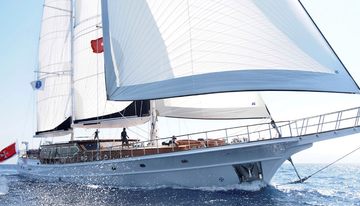
43m | Pax Navi Yachts
from $64,000 p/week ♦︎
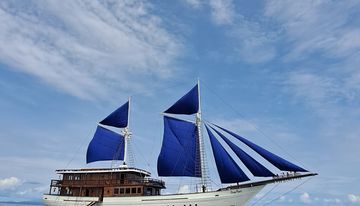
Ocean Pure 1
46m | Custom
from $84,000 p/week

Pan Orama II
50m | Elthom
POA ♦︎

The Maj Oceanic
47m | Custom
from $70,000 p/week

50m | Custom
from $94,500 p/week

43m | Perini Navi
from $129,000 p/week ♦︎

49m | Custom
from $91,000 p/week ♦︎

Alila Purnama
from $87,500 p/week

Anima Maris
from $69,000 p/week ♦︎

42m | Basimakopouloi
from $42,000 p/week ♦︎

47m | Hodgdon Yachts
from $99,000 p/week ♦︎

BAHRIYELI D
42m | Custom
from $16,000 p/week ♦︎
As Featured In
The YachtCharterFleet Difference
YachtCharterFleet makes it easy to find the yacht charter vacation that is right for you. We combine thousands of yacht listings with local destination information, sample itineraries and experiences to deliver the world's most comprehensive yacht charter website.
San Francisco
- Like us on Facebook
- Follow us on Twitter
- Follow us on Instagram
- Find us on LinkedIn
- Add My Yacht
- Affiliates & Partners
Popular Destinations & Events
- St Tropez Yacht Charter
- Monaco Yacht Charter
- St Barts Yacht Charter
- Greece Yacht Charter
- Mykonos Yacht Charter
- Caribbean Yacht Charter
Featured Charter Yachts
- Maltese Falcon Yacht Charter
- Wheels Yacht Charter
- Victorious Yacht Charter
- Andrea Yacht Charter
- Titania Yacht Charter
- Ahpo Yacht Charter
Receive our latest offers, trends and stories direct to your inbox.
Please enter a valid e-mail.
Thanks for subscribing.
Search for Yachts, Destinations, Events, News... everything related to Luxury Yachts for Charter.
Yachts in your shortlist
You are using an outdated browser. Please upgrade your browser or activate Google Chrome Frame to improve your experience.
- Link to search page
- US: +1 (561) 833 4462
- US: +1 (206) 209-1920
- MC: +377 99 90 74 63
SAGITTA Yacht for Sale

Sagitta Yacht for Sale - 45' Fountaine Pajot

Open Gallery

Contact Us For More Information
Detailed information.
Content Sections
Description
Sagitta is an exceptional example of the very popular Fountaine Pajot Elba 45 catamaran.She features the desirable 3-cabin Owners Version layout and an extensive list of options and upgrades.Sagitta is in immaculate condition and shows like a brand new boat.Having recently (Dec 2023) completed her annual haul out period including saildrives service, rudder replacement (FP Warranty recall), and new bottom paint. Sagitta is ready to continue cruising immediately.
The Elba is known for having a bright, spacious interior with an ergonomic, functional layout . It boasts energetic lines and inverted bows, accommodating incredible interior living spaces and giving her excellent sailing performance compared to other catamarans in her category.This elegant catamaran also has a wonderfully designed helm station to allow for ease of handling and the ability to control everything from the helm.She is ideal for a cruising couple or short-handed sailor.
Highlights include:
-900ah ReLion 12V Lithium House Battery Bank
- Volvo 60hp Engines (Only 450hrs!)
-11kW Onan Generator
-56,000 BTU Air Conditioning throughout
-Washer / Dryer
-Electric Dinghy Lift Platform / Swim Deck
-Schenker Watermaker 16 G/h
-3 x 365w Sunpower Solar panels (1100w total)
Sagitta is available for showings by appointment in beautiful St Augustine, FL.
- Builder: Fountaine Pajot
- Designer: Berret-Racoupeau
- Keel: Fin Keel
MEASUREMENTS
- Length Overall: 44.08 ft
- Max Draft: 4' 0"
- Cabin Head room measure: 6' 3"
- Beam Measure: 24' 9"
- Total Power: 120
- Engine Brand: Volvo Penta
- Engine Type: Inboard
- Engine/Fuel Type: Diesel
- Engine Hours: 451
- Engine Power: 60 hp
- Engine Brand: Volvo
- Engine Hours: 449
- Fresh Water Tanks: 2 (124 Gallons)
- Fuel Tanks: 1 (124 Gallons)
Accommodations
- Number of cabins: 3
- Number of heads: 3
Specifications
Accommodations:
Sagitta has a Maestro 3-cabin layout with the factory Oceanic Package.The port side Owner’s Hull features a Queen berth aft, desk at mid-ship, private head, and a vanity and large separate shower at the bo are two guest cabins on the starboard side with two heads and separate shower stalls.The salon is bright and spacious with a u-shaped settee and coffee table.The galley has ample counter space and storage.
Beige/Gris PVC outdoor upholstery
Foam Mattress Toppers on all bunks
Curtains in cabins
Interior / exterior Sunshades for salon
Fresh water Electric Heads
Interior 12V outlet and waterproof exterior 12V outlet
LED Interior Courtesy Lighting
2 x Electric freshwater pumps
Slatted bases for all beds
Custom foam mattress in owners cabin
3 xCaframo Sirocco Cabin Fans – 12v
Carbon Monoxide detectors
Holding tank monitors
3 Burner Gas Stove
Built-in Eno Gas Grill in Cockpit
US propane LPG installation
Isotherm 190L Double Drawer Fridge – 12v
Isotherm 90L Freezer – 12v
Vitrifrigo Drink fridge in Cockpit
Galanz Microwave / Air Fryer / Convection Oven
Countertop Icemaker
Double basin SS Sink
Pressurized hot and cold freshwater from mixer faucet
Pressurized seawater system with faucet at sink
Draining dish rack
Bimini with Full Helm Enclosure
Electric Dinghy Lift Platform / Swim Deck with remote control
Synthetic Flexiteak floor on transoms and cockpit
Ultra 35kg Anchor with Ultra Swivel and 200ft of 12MM G4 Chain plus 150′ Rode
Quick Electrical Windlass (1500 Watts) w/ wired remote in anchor locker
Additional Windlass Control and Chain Counter at helm
Upgraded Anchor Bridle – added thimbles and shackles
2 bow seats
Deck shower with hot / cold water mixer
Dralon protective cover for wheel
Helm Wheel Lock
Cockpit courtesy lighting
Outdoor cushions (cockpit + upper lounge deck + foredeck seating)
Detachable Hanging Sun Awning for the foredeck
Textelene net cover for trampoline
Cockpit Sun Shades
Lifeline netting
Mooring lines + 6 fenders
Additional Mooring Cleats
Fresh water Washdown
Interlocking PVC drainage tiles under seat cushions
Bottom Paint – Mar Pro Super B Ablative (Nov 2023)
Sails and Rigging:
Incidence Dacron Mainsail – fully battened square top
Incidence Dacron Genoa
Incidence Gennaker on continuous furler
Profurl Genoa furler
10mm Dyneema main halyard
FP factory Bowsprit and all hardware to rig downwind sails
1 x Lewmar Electric Winch for mainsail halyard and mainsheet
3 x Lewmar Manual Winches
Automatic mainsail Hook
Line stoppers for Genoa sheets
Quadruple clutch for reefs 1, 2 and 3 + toping lift
Electronics:
Garmin Full Navigation Package (New in 2023)
2 x 10in Multifunction Chart Plotter displays (at helm and in salon)
2 x Garmin GMI 20 Displays at helm
Garmin Autopilot
Garmin VHF with masthead antenna
Garmin Radar + support + wiring
Second Standard Horizon VHF / AIS at helm station
Garmin Panoptix Live Scope Forward Sonar
Aft facing Camera for Garmin plotter
Fusion Stereo (New 2023) – Bluetooth w/ Bose Interior speakers and Polk exterior bow speakers
Flat Screen TV on swivel mount in the saloon
Digital TV antenna
Starlink High Speed Internet
Iridium GO mounted w/ outdoor aviation antenna
Rouge Wave WiFi AMp W/Wifi Router
Systems and Electrical:
110v / 60 Hz House Circuit
3 x300ahRelion LithiumRB300 HouseBatteries (900ah total)
Victron3000 Watt Invertor/Charger (New 2023))
11kW Onan Generator – 110V / 60hz – 1260hrs
3 x 365W Sunpower X22 Solar panels on Stainless Arch
3 x Victron MPPT Solar Controllers
2 x 115amp Balmar High Output Alternators
Sterling B2b Chargers
110V Water heater
Schenker Watermaker 16 G/h (60L/h) 12V
56,000 BTU Air conditioning 110V 60HZ with upgraded raw water strainers
Splendide Washer / Vented Dryer
Galvanic Isolator 110v protection
110v Outlets throughout the boat and in each head
4 x Underwater Lights – Macris Flat style – single color
Mechanical:
2 x 60HP Volvo Penta D2-60 – Factory Upgrade – 450hrs each
Volvo Saildrives
3-blade Folding Props with Line Cutters
Oil pressure and Water Temp senders on both engines gauges at helm
Engine Interface to Plotters
FireBoy – Engine room fire suppression systems (Certified Nov 2023)
Safety and Extras:
OC 330 Tender 10.8ft carbon fiber tender with 20hp Tohastu Outboard
Custom dinghy cover
Life Raft Plastimo Transocean ISO 9650 Canister +24h – 6 person
Extensive inventory of spares
Fire Extinguishers (Certified Nov 2023)
Fire Blanket
Carbon Monoxide Detectors
- Search Please fill out this field.
- Manage Your Subscription
- Give a Gift Subscription
- Newsletters
- Sweepstakes
:max_bytes(150000):strip_icc():format(webp)/ben-affleck-jennifer-lopez-this-is-me-now-a-love-story-premiere-021424-1-d55b96580599425cbde799ca1ebb05e2.jpg)
- Beauty & Style
- Celebrity Fashion
Salma Hayek Shows Off ‘Perfect Combination’ of White Hair and Yellow Bikini During Ibiza Getaway
Fashion model Linda Evangelista replied to Hayek’s Instagram post with three yellow hearts
:max_bytes(150000):strip_icc():format(webp)/IMG-2324-cf2c9b09749747eca52eac4ebba3b3ca.jpg)
Salma Hayek/Instagram
Salma Hayek is catching some rays in Ibiza!
On Sunday, Aug. 25, the Magic Mike's Last Dance star, 57, shared a pair of photos on Instagram showing her basking in the sunshine while rocking yellow swimwear and posing next to a Spanish flag.
"Yellow bikini + White hair = perfect combination," she captioned the pics, which show her white hairs as she stands next to Spain's Yacht ensign.
Hayek can be seen in her two-piece bikini, large sunglasses and some jewelry as she posed on a yacht in front of a picturesque backdrop.
Several fans and famous faces shared their love with Hayek in the post's comment section, with makeup artist Ash K. Holm calling her a "hottie" and fashion model Linda Evangelista posting yellow heart emojis.
Hayek's latest getaway follows her milestone experience of participating in the Olympic Torch Relay in France in July, when the Oscar nominee served as a torchbearer as it made its way from Rambouillet to Versailles.
She later called the experience an " honor " in a reflective post on Instagram, featuring images of herself in her ceremonial attire.
"Yesterday, I had the honor of carrying the Olympic flame, a symbol of light, hope, peace, and unity ♾️. If you believe in these values, know that you were with me every step of the way," she wrote. "As I passed the torch and took part in the relay, I was proud to represent the enduring spirit of the Olympics, bringing light, hope, and unity to all. #Olympics #Paris2024."
It's been a busy summer for Hayek, who also checked out the action at Wimbledon with her husband François-Henri Pinault in July. At the time, the duo was seen at the exclusive Royal Box on Centre Court at the All England Lawn Tennis and Croquet Club.
Hayek celebrated her husband's 62nd birthday with a heartfelt Instagram tribute in May, in which she called him "mi amor."
"Thank you for the endless love and laughter you bring me each day Happy birthday my king 👑," Hayek wrote.
Her next film, the Angelina Jolie-directed Without Blood , is set to premiere at the Toronto International Film Festival in September.
Related Articles
Maxi-Open Mangusta Yachts presented at Boat Shows in Palm Beach and Moscow
- Inspiration
Related News
Popular news this week, popular news this month, latest news.
- Yacht Charter & Superyacht News >
Written by Zuzana Bednarova
Two important events saw the Mangusta Maxi Open by the prominent Italian builder Overmarine again protagonist on the nautical scene: Marine Max exclusive partner for the United States attended the Palm Beach Boat Show , running from March 22 to 25 with the spectacular motor yacht Mangusta 92 and the Mangusta 130 superyacht on display. Burevestnik Group, on the other hand, was the star of the Moscow International Boat Show , taking place from March 20 to 25 exhibiting the scale models of the luxury yacht Mangusta Oceano 148, the superyacht Mangusta 92, the Mangusta 165 as well as Mangusta 130 yachts.

Mangusta 92 Superyacht
MANGUSTA 92 ( an example of Mangusta 92 is the motor yacht ILLUSION ) Stylish and fast luxury motor yacht Mangusta 92 represents perfect proportions. She offers an ambitious layout that permits for 3 beautiful staterooms and a relax room or 4 staterooms, each with high-tech entertainment centers. Run by twin MTU 16V2000M94 of 2600Hp each and Kamewa 56S3 jet drives, the Mangusta 92 achieves the exciting speed of 37 knots.

Luxury motor yacht Mangusta 130
MANGUSTA 130 ( for example the charter yacht Ability ) Mangusta 130 superyacht combines pleasure and performance. Her lower deck provides 4 lovely staterooms and a salon or 5 staterooms. When the twin 3640-hp MTU16V4000 M93L are fired up and bring the vessel to a full speed of 39 knots, the peaceful as well as relaxing feeling remains, as there is no noise or vibration.

Megayacht Mangusta 165
MANGUSTA 165 ( an example can be the luxury charter yacht ZEUS ) The biggest fiberglass Open Yacht ever built, the luxury megayacht Mangusta 165 brings together state of the art technology with extreme comfort. With a speed of 39 knots, the Mangusta 165 exceeds all expectations in terms of performance, with the stabilizers that provide the smoothest ride. This majestic and elegant vessel offers extraordinarily spacious interiors with four or five staterooms and a living space.

Superyacht Mangusta Oceano 148
MANGUSTA OCEANO 148 Mangusta Oceano 148 superyacht is built to provide her Owner with the utmost in luxury and comfort aboard by integrating the latest technology processes with the most advanced marine equipment available in the market. Her interiors can be built in any kind of wood and with the style (design) selected by the Owner.
Please contact CharterWorld - the luxury yacht charter specialist - for more on superyacht news item "Maxi-Open Mangusta Yachts presented at Boat Shows in Palm Beach and Moscow".
- Charity & Fund Raising
- CharterWorld News
- Classic Yachts
- Coronavirus
- Cruise Ship
- Ecological Yachts
- Expedition Yachts
- Expert Broker Advice
- Feature Superyachts
- Interior Design
- Legal & VAT Yacht Issues
- Luxury Catamarans
- Luxury Gulet
- Luxury Phinisi
- Luxury Trimarans
- Luxury Yacht Design
- Luxury Yachts
- Marinas & Harbours
- Marine Ecology
- Marine Electronics
- Marine Equipment
- Mega Yachts
- Modern Yachts
- Motor Yachts
- New Launch Yachts
- New To Charter
- Open Style Sports Yachts
- Private Jets
- Sailing Yachts
- Social Media
- Sports Yachts
- Superyacht Crew
- Superyacht Photographers
- Superyacht Products & Supplies
- Superyacht Refits
- Superyacht Reviews
- Superyachts
- Uncategorized
- Yacht Builders
- Yacht Charter
- Yacht Charter Destinations
- Yacht Charter Picks
- Yacht Charter Specials
- Yacht Delivered to Owner
- Yacht Designers
- Yacht Events & Boat Shows
- Yacht Fashion
- Yacht Industry News
- Yacht Photos
- Yacht Racing
- Yacht Racing & Regattas
- Yacht Safety Equipment
- Yacht Support Vessels
- Yacht Tenders
- Yacht Videos
- Yachting Associations
- Yachting Awards
- Yachting Business
- Yachts For Charter
- Yachts For Sale
Quick Enquiry
Superyacht news:.
Email Your Yachting News to: news @ charterworld.com
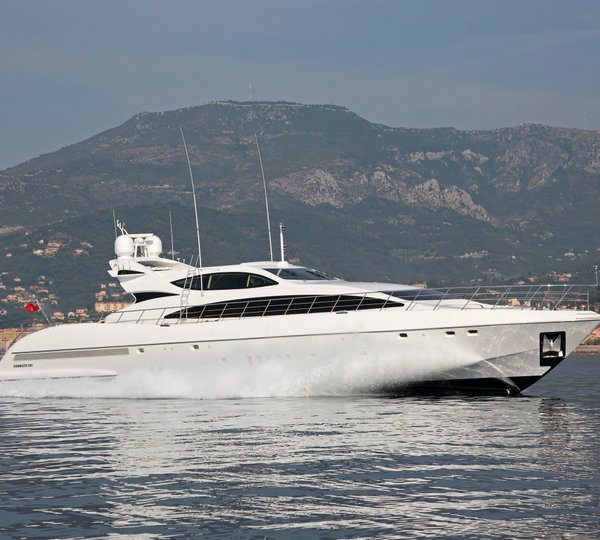
50M OPEN-STYLE SPORTS YACHT

Luxury Yachts At Events

The Caribbean

The Mediterranean

The Pacific Northwest
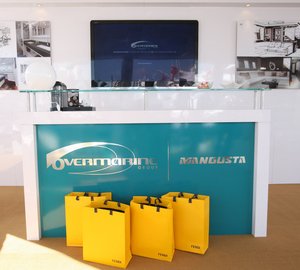
Successful cooperation between Overmarine Group | Mangusta and Luxury Living – FENDI Casa at FLIBS

Overmarine Group at Dusseldorf Boat Show with Mangusta 92, Mangusta 130, Mangusta 165 and Mangusta 148 Oceano Yachts on display
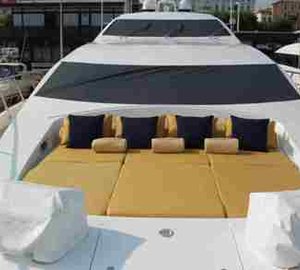
Eye-catching Mangusta 130 Motor Yacht HAPPY DAY spotted in Fort Lauderdale

Video introducing new Mangusta 165 E superyacht MOONRAKER

Late summer special offer on board 72m superyacht ARBEMA in the Western Mediterranean
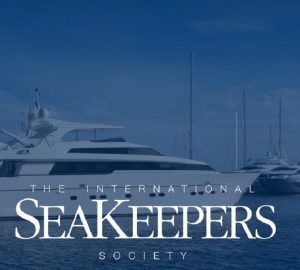
The International SeaKeepers Society will host its 2024 annual Founders Event in October

Special offer for remaining weeks of September on board 51m sailing yacht RED DRAGON

A luxury charter yacht is the perfect way to encounter New England’s fall foliage display

Navigating the World of Luxury Yacht Charters: Your Guide to the Perfect Getaway

OCEA delivers 33m motor yacht ARAOK II to her new owner

39m sailing yacht LINNEA AURORA launched by SES Yachts

66m Benetti motor yacht IRYNA hits water in Italy

A first look at 55m superyacht PROJECT AGNETHA from Heesen Yachts
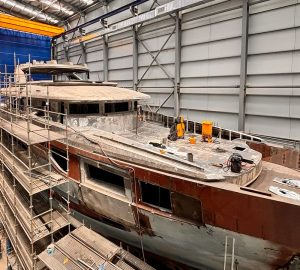
44m superyacht ORION ONE reaches a construction milestone

40m superyacht HYGGE from MCP Yachts commences sea trials
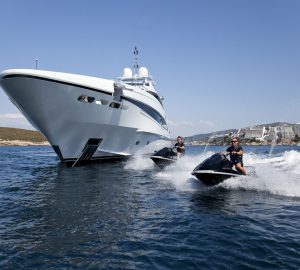
44m charter yacht JEMS offers 9 days for the price of 7 in August in Italy

Rossinavi introduces full custom 50m superyacht BEL1

Search boats for sale
Sagitta Boats 35 (sailboat) for sale

Boat data Sagitta Boats 35
Technical data, buy sagitta boats 35 - equipment sloop - sailboat for sale, sagitta boats 35 - info without obligation - sloop.

Other boats (like Sagitta Boats 35) - for buy and for sale

Jeanneau Sun Odyssey 36I
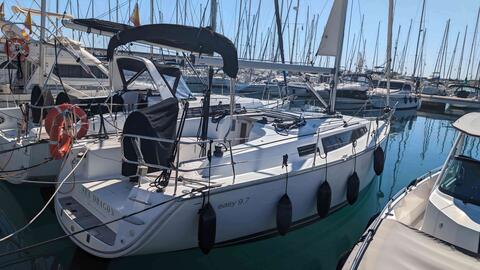
Bavaria EASY 9.70

Northshore Yachts Southerly 101 SE
These sailboats could also be of interest to you.

Mangusta L'ESPERANCE yacht charter
Overall information
PDF brochure
Yachts by Mangusta Overmarine
Yachts charter Mangusta Overmarine
Mangusta L'ESPERANCE
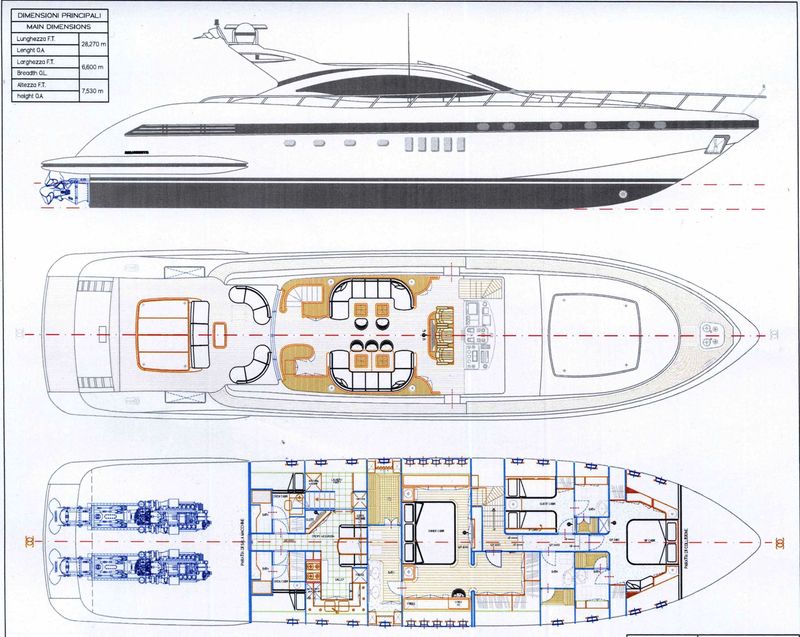

IMAGES
COMMENTS
The 32.5m/106'8" motor yacht 'Sagitta Alba' (ex. Joke) was built by Maiora at their Massarosa shipyard. This luxury vessel's exterior design is the work of Maiora. Guest Accommodation. Sagitta Alba has been designed to comfortably accommodate up to 8 guests in 4 suites comprising one VIP cabin. She is also capable of carrying up to 4 crew ...
SAGITTA ALBA is a 32.5 m Motor Yacht, built in Italy by Maiora - Next Yacht Group and delivered in 2006. She is one of 5 33DP models. Her top speed is 28.0 kn, her cruising speed is 26.0 kn, and she boasts a maximum cruising range of 700.0 nm at 25.0 kn, with power coming from two MTU diesel engines. She can accommodate up to 8 guests in 4 ...
The yacht carries . litres of fuel on board. In the world rankings for largest yachts, the superyacht, Sagitta Alba, is listed at number 4784. She is the 18th-largest yacht built by Maiora. Sagitta Alba's owner is shown in SYT iQ and is exclusively available to subscribers. On SuperYacht Times, we have 3 photos of the yacht, Sagitta Alba.
Download the full charter brochure for luxury Motor Yacht "SAGITTA ALBA" to explore her beautiful interiors, guest accommodation and full range of amenities as well as outdoor living spaces. This comprehensive overview provides the best way to get a feel for the charter experience on offer and gives detailed and accurate specifications so that you can match them up to your own requirements.
The Motor Super yacht/Raised pilot house yacht Maiora 33DP Sagitta Alba luxury interior sleeps up to 10 guests in 4 staterooms. She is also capable of carrying up to 5 crew onboard to ensure a relaxed luxury yacht experience. Timeless styling, beautiful furnishings and sumptuous seating feature throughout to create an elegant and comfortable ...
Discover insights about motor yacht Sagitta Alba (33m, 2007) crafted by Maiora on Yacht Career Hub. Explore valuable yacht reviews sharing onboard experiences, guiding your informed decisions in the maritime industry and enhancing your yachting career journey.
The LWL will increase as the yacht sinks into the water with the added weight of stores and equipment. BEAM: This is the greatest width of the hull and is often expressed as Beam (Max). Beam WL: Greatest width of the hull at the waterline. DRAFT: This is the depth of the hull from the LWL to the bottom of the keel or fin. Like the LWL, it will ...
Information, photos and AIS vessel tracker for the Ship SAGITTA ALBA (IMO 0000000) ... Motor Yachts. Added ...
The LWL will increase as the yacht sinks into the water with the added weight of stores and equipment. BEAM: This is the greatest width of the hull and is often expressed as Beam
SAGITTA is a 46.0 m Sail Yacht, built in Netherlands by Vitters and delivered in 2013. Her top speed is 14.0 kn and her cruising speed is 10.0 kn and her power comes from two Caterpillar diesel engines. She can accommodate up to 8 guests, with 8 crew members waiting on their every need. She has a gross tonnage of 251.0 GT and a 9.0 m beam.
News, yachts for sale & yachts for charter, cruising destinations and yachting intelligence. Dami Boats is a yacht supplier based in Croatia providing brokers: charters, brokers: management & brokers: sales services to the most discerning superyachts. See more. Dami Boats. Croatia 🇭🇷 Go Premium. Dami ... Sagitta Alba ...
SAGITTA is a 57.0 m Motor Yacht, built in Australia by Oceanfast and delivered in 2001. Her top speed is 22.0 kn and she boasts a maximum range of 3000.0 nm when navigating at cruising speed, with power coming from two MTU diesel engines. She can accommodate up to 12 guests, with 14 crew members. She has a gross tonnage of 826.0 GT and a 10.52 ...
Interior & exterior photos of SAGITTA ALBA, the 33m Maiora Yachts super yacht, designed by Maiora Yachts
Built in 2013 by Vitters, 46m Sagitta's lines were inspired by J-Class yachts. She sleeps up to 8 guests in 4 colourful staterooms. See more here. ... More Yachts Like Sagitta. Radiance . 37M. Built 2011. Please enquire. State of Grace . 40M. Perini Navi. Built 2013. €9,500,000. Hyperion . 47M. Royal Huisman. Built 1998. Please enquire.
Sagitta is a sloop rigged 46m performance cruiser designed by Dubois Naval Architects and interior architect Newcruise. A specific technical feature is the cockpit with a fixed carbon bimini. The vertically sliding curved glass windows can be moved up to enclose the cockpit area from the elements. When sailing warmer seas, the deckhouse with ...
Special Features: The award winning 46m/150'11" sail yacht 'Sagitta' (ex. Ganesha) was built by Vitters in the Netherlands at their Zwartsluis shipyard. Her interior is styled by design house Newcruise and she was completed in 2013. This luxury vessel's exterior design is the work of Dubois and she was last refitted in 2019.
Sagitta is an exceptional example of the very popular Fountaine Pajot Elba 45 catamaran.She features the desirable 3-cabin Owners Version layout and an extensive list of options and upgrades.Sagitta is in immaculate condition and shows like a brand new boat.Having recently (Dec 2023) completed her annual haul out period including saildrives service, rudder replacement (FP Warranty recall), and ...
Salma Hayek is spending time in sunny Ibiza proudly showing off her white hairs and yellow swimwear, which she described as a 'perfect combination' on Instagram on Aug. 25.
Used Boat, Sailing Yacht. Sagitta 35. Save as favorite. DKK 105.000,-apx. EUR 14.056,-1970 Year Built; 10.52 m x 3.05 m Length x Beam; 1.83 m Draught; 4'700 kg Displacement; GRP Material; ... Sagitta 35 with fine sails and nice large saloon, good seating and spacious cockpit. Sagitta 35 designed by Sparkman & Stephens. The hull color is dark green.
Two important events saw the Mangusta Maxi Open by the prominent Italian builder Overmarine again protagonist on the nautical scene: Marine Max exclusive partner for the United States attended the Palm Beach Boat Show, running from March 22 to 25 with the spectacular motor yacht Mangusta 92 and the Mangusta 130 superyacht on display.Burevestnik Group, on the other hand, was the star of the ...
Buy a Sagitta Boats 35 - sloop? Sagitta 35 with fine sails and nice large saloon, good seating and spacious cockpit. Sagitta 35 designed by...
Sailing Yachts 3093; Sport Boats 2201; Submarines 1; Superyachts 162; Tall Ships 16; Waterside Properties 8; Watersports 2; New Boat Ranges; Popular Brands. Azimut 31; Bavaria 212; ... All Sagitta boats for sale . 0 Pages: Used Sagitta boats for sale - View All. Leeds Liverpool Short Boat... £120,000. Jeanneau Cap Camarat 545 S...
8th International exhibition for yachts and boats Moscow Boat: Dates: Tuesday, March 10, 2015 - Sunday, March 15, 2015 Venue: Crocus Expo IEC, Moscow, Russia: Moscow Boat Show provides the perfect platform from which to preview new products, evaluate market trends, and establish long-lasting and commercially profitable partnerships. Despite the ...
Leningradskoe highway 39, build. 7, Moscow, Russia, 125212. Tel: +7 (495) 937 90 00. Ukraine